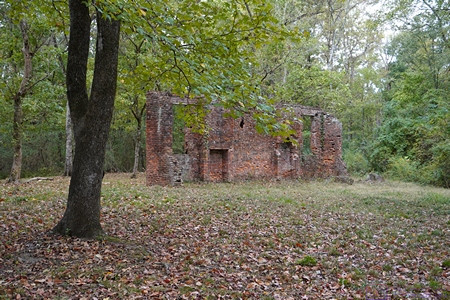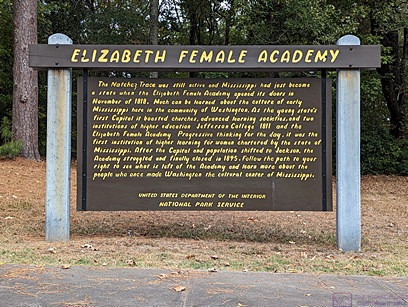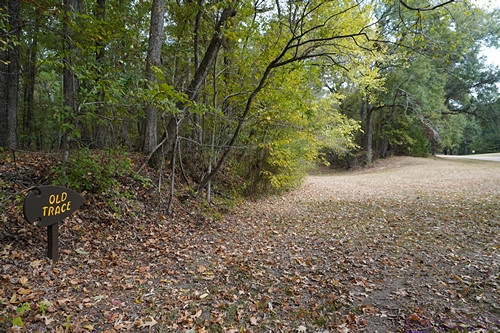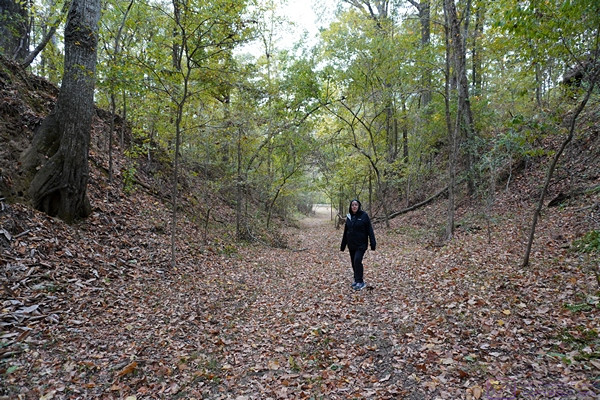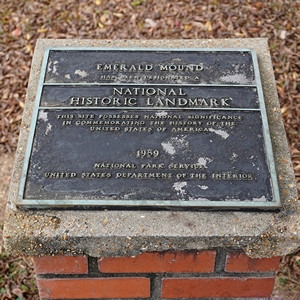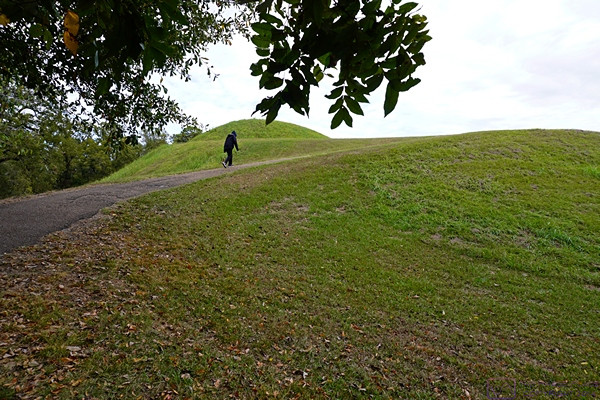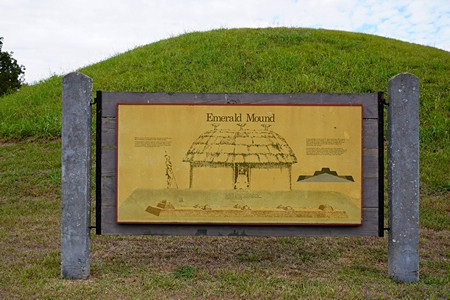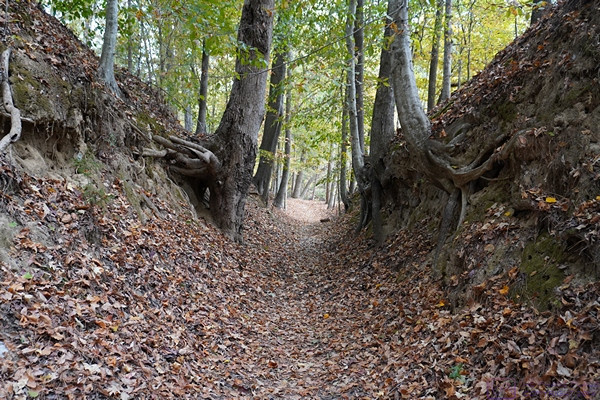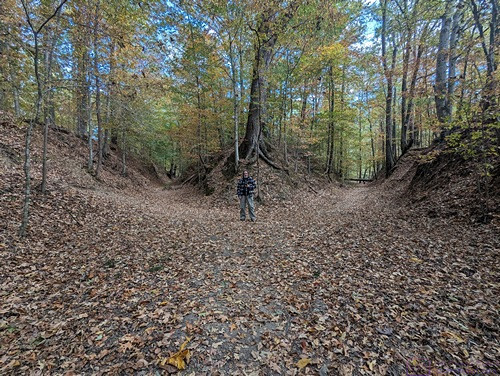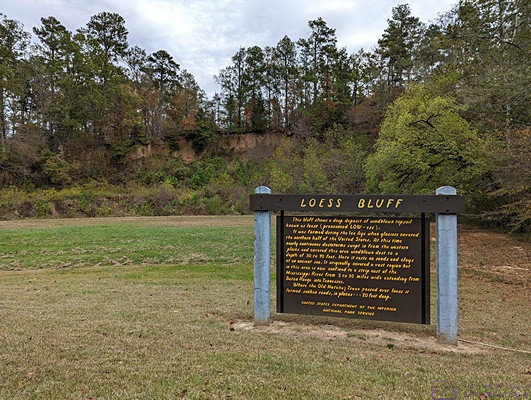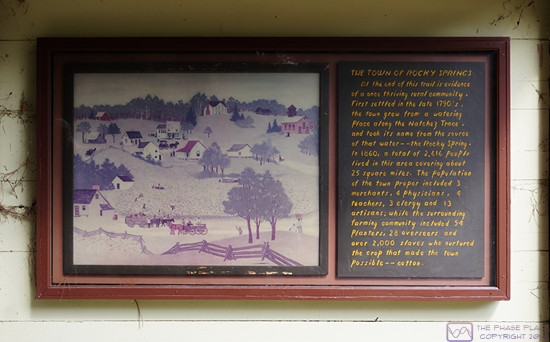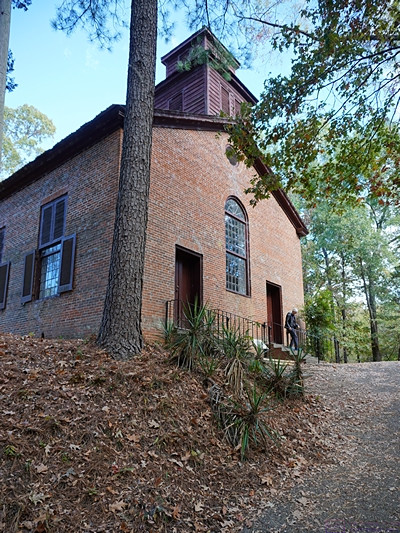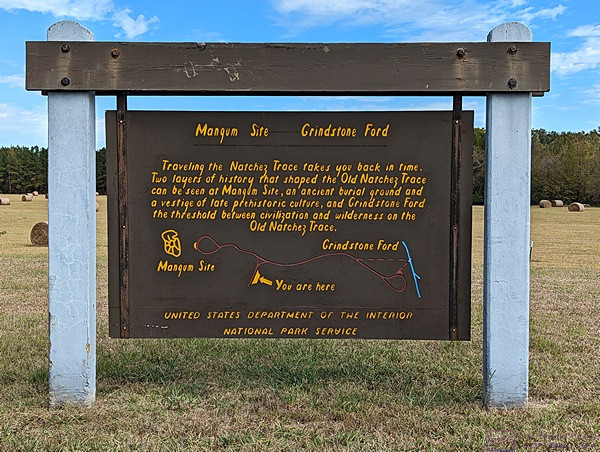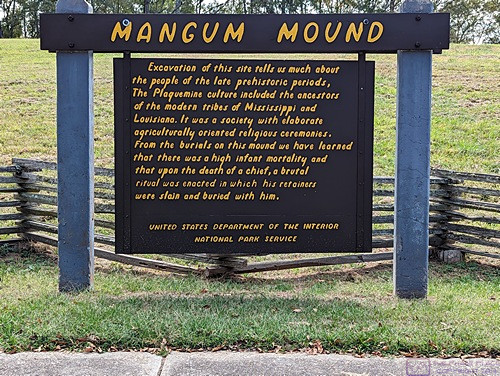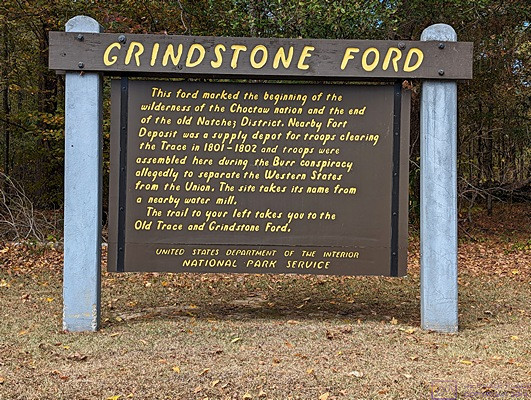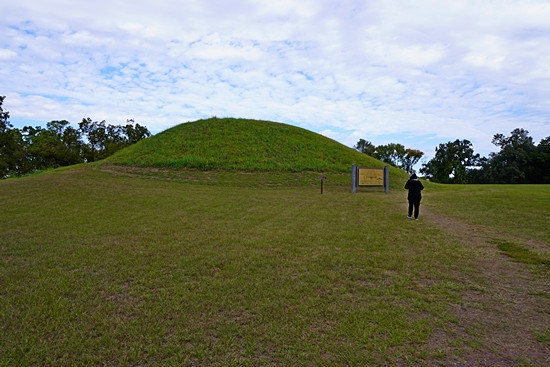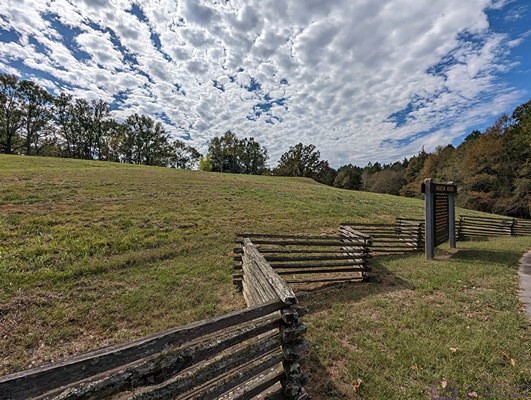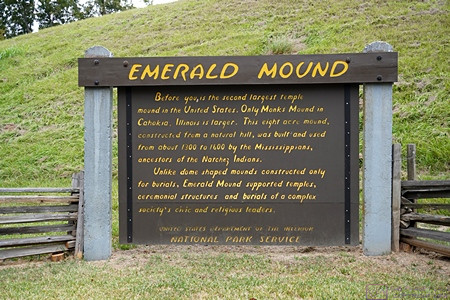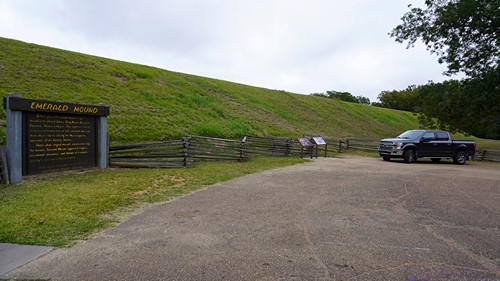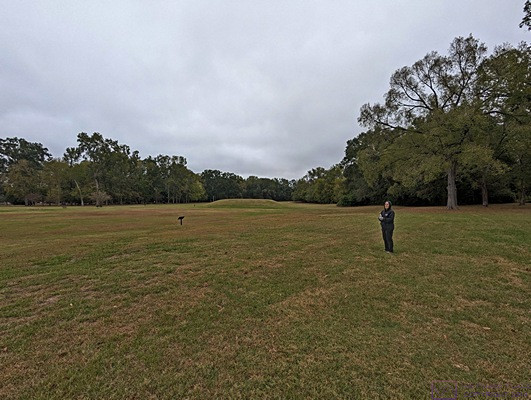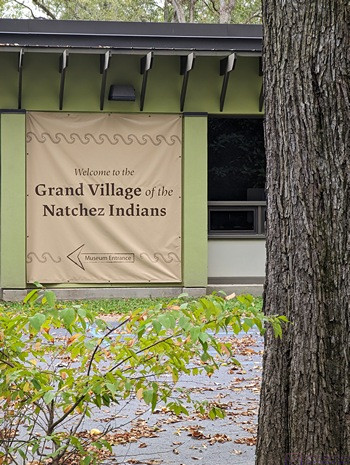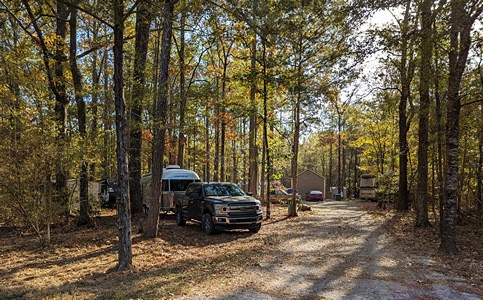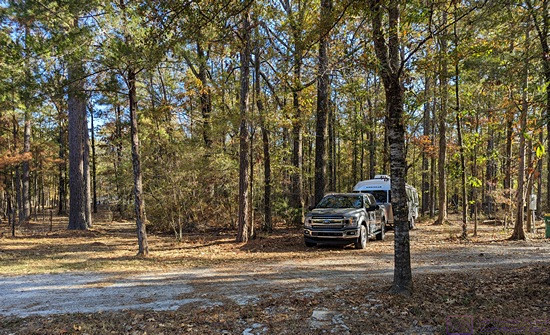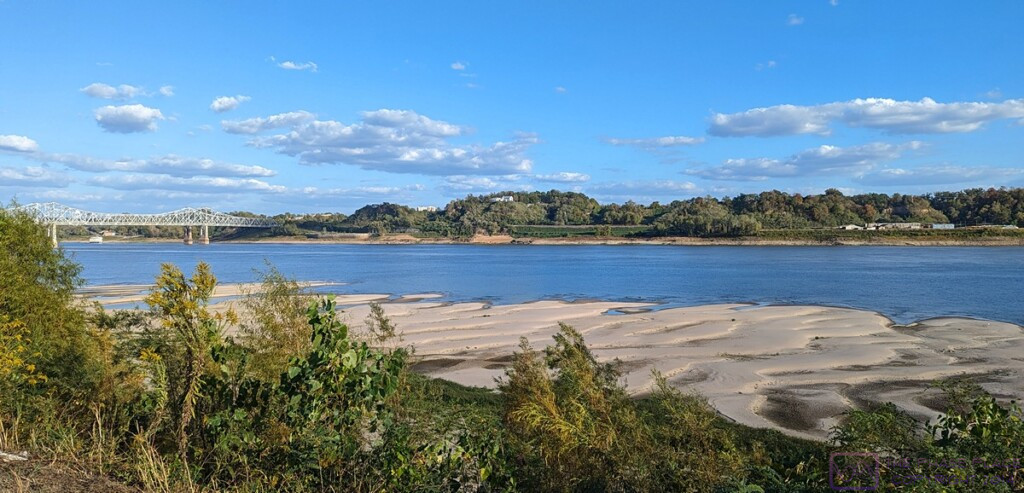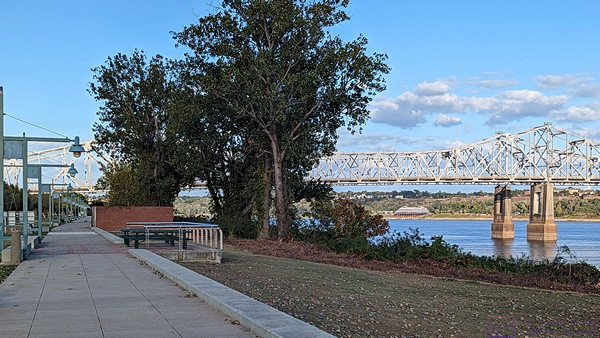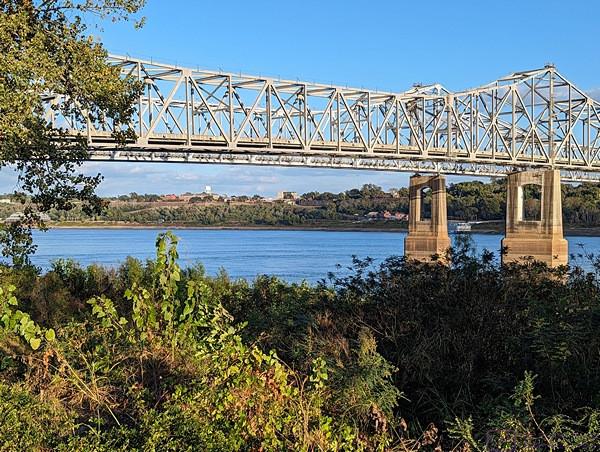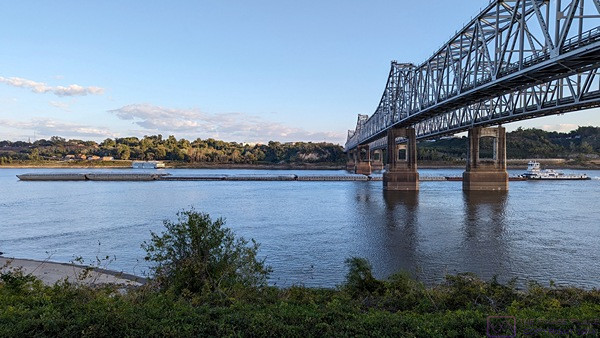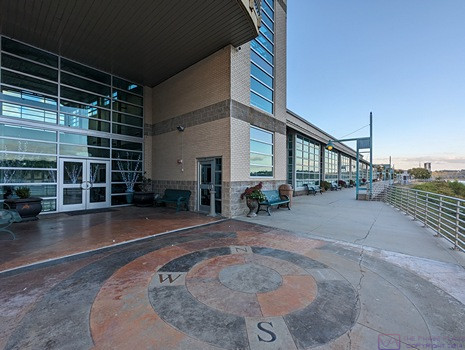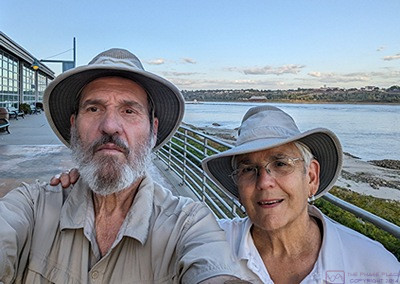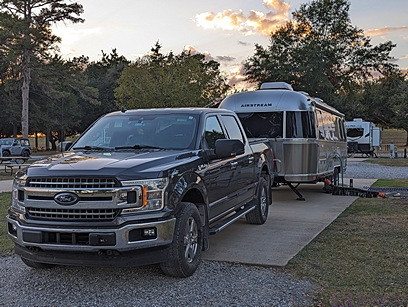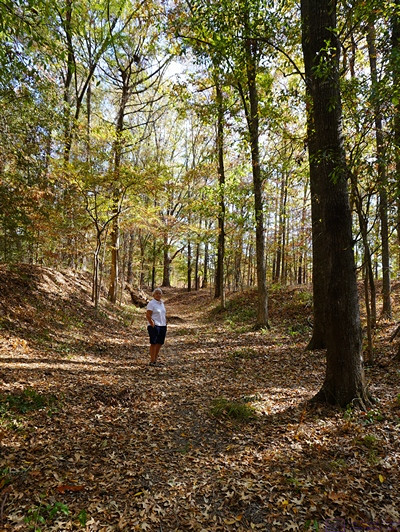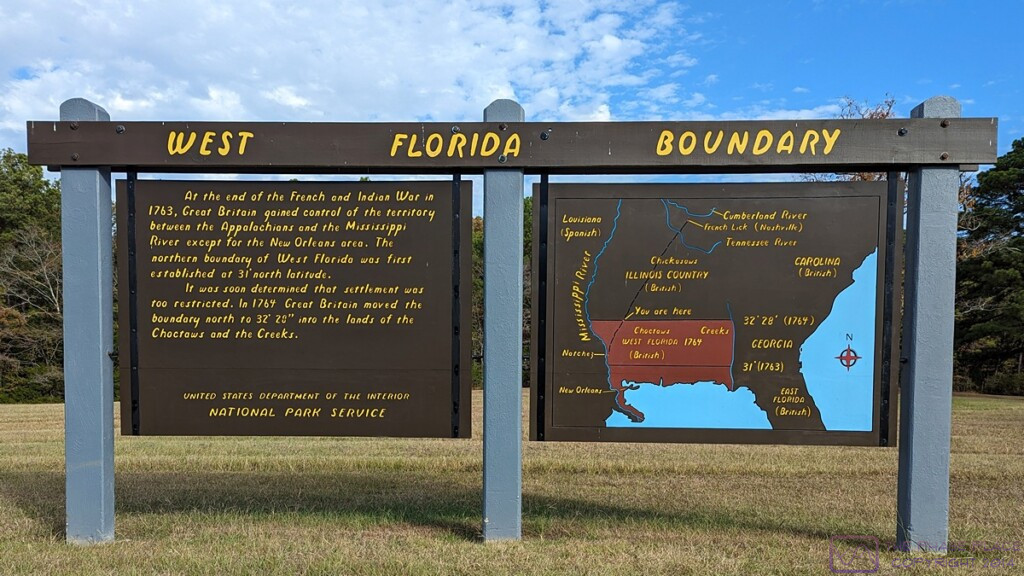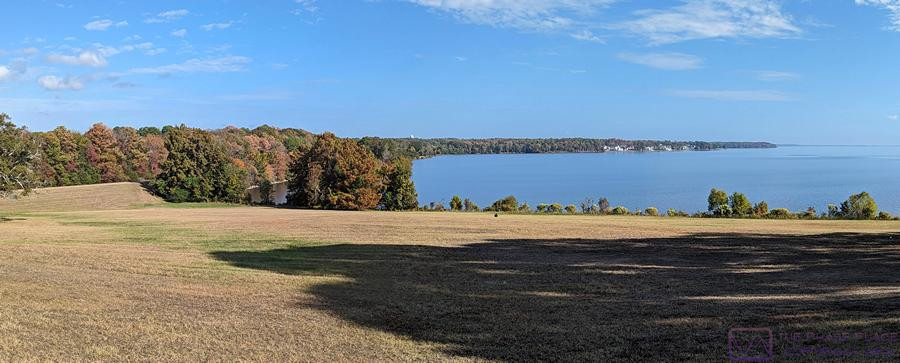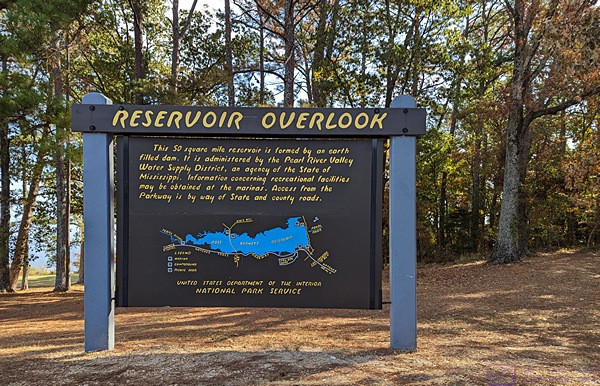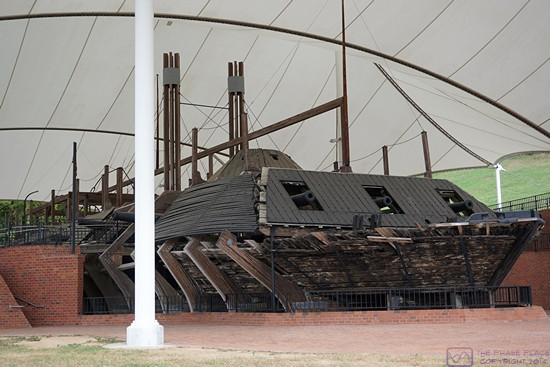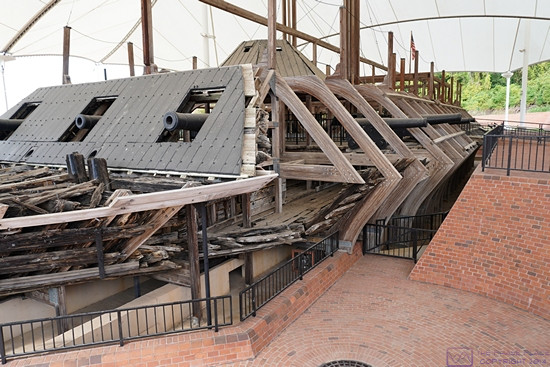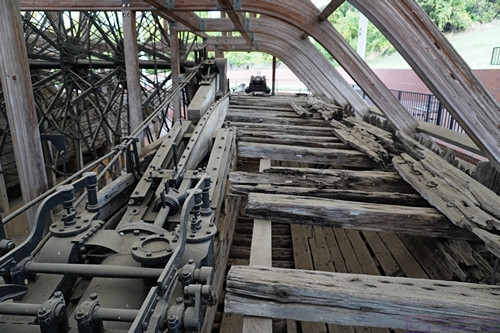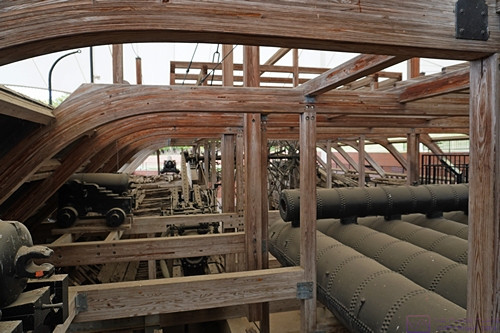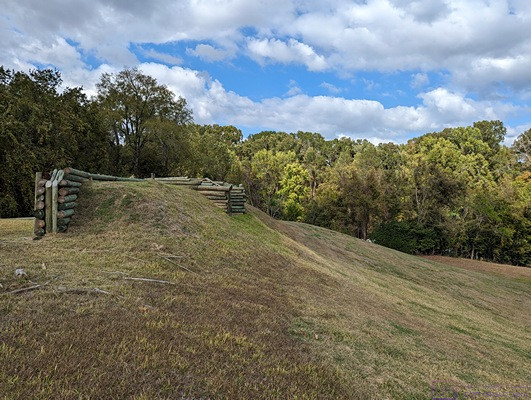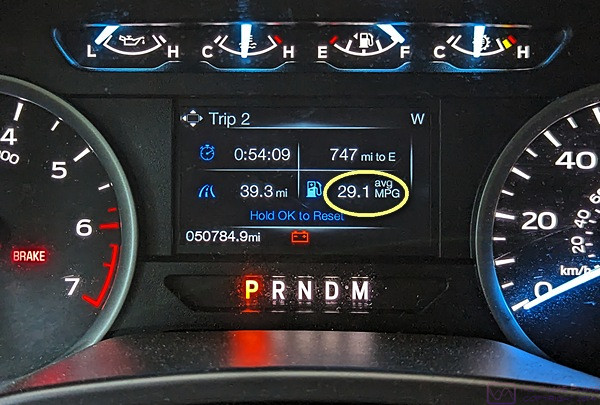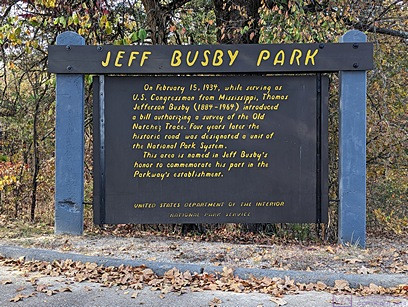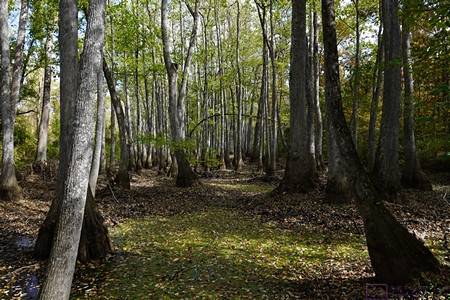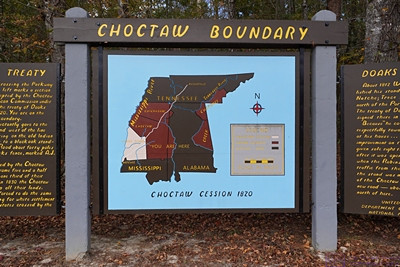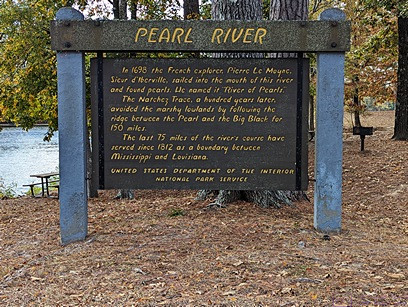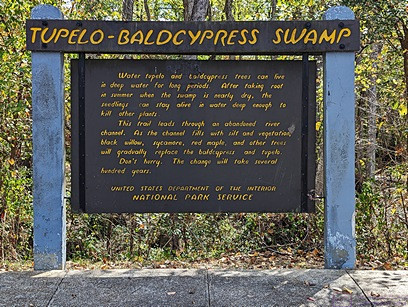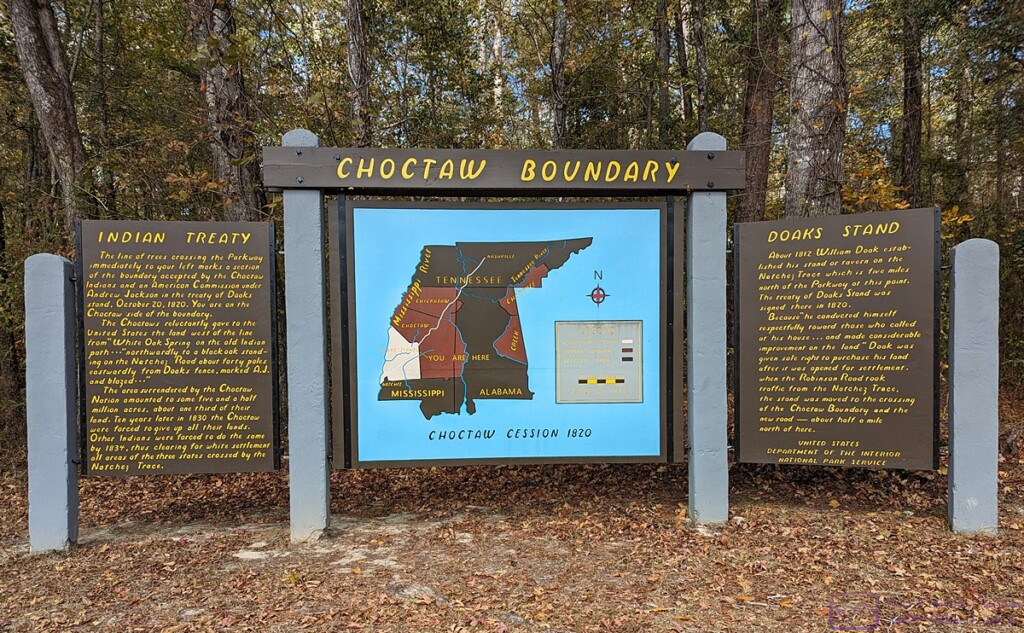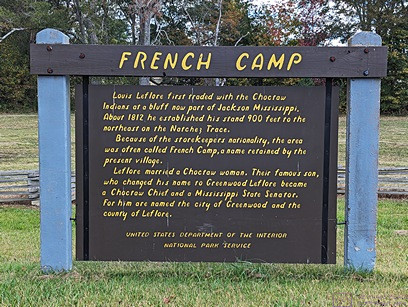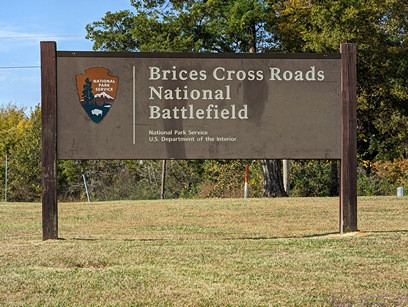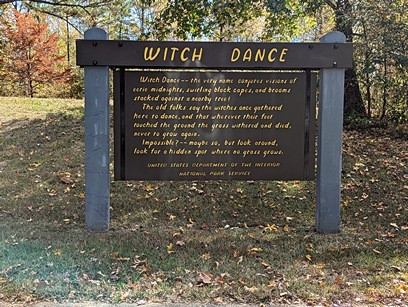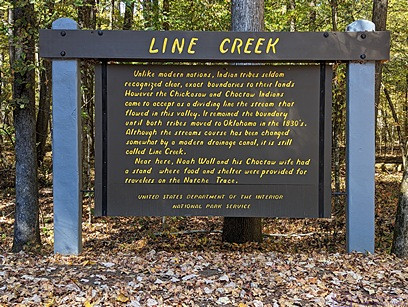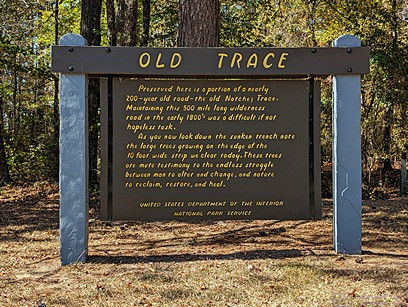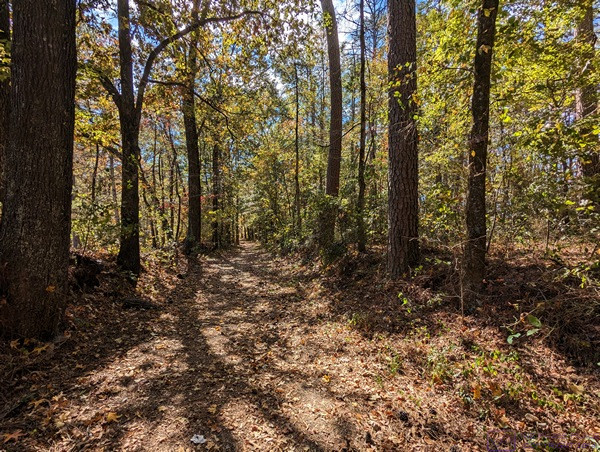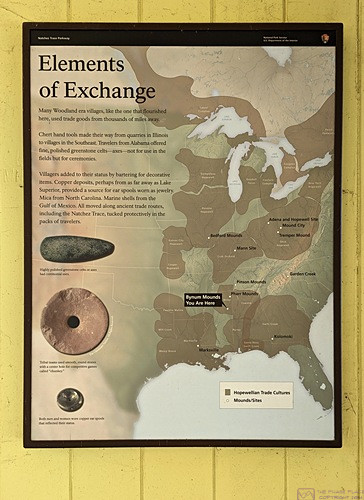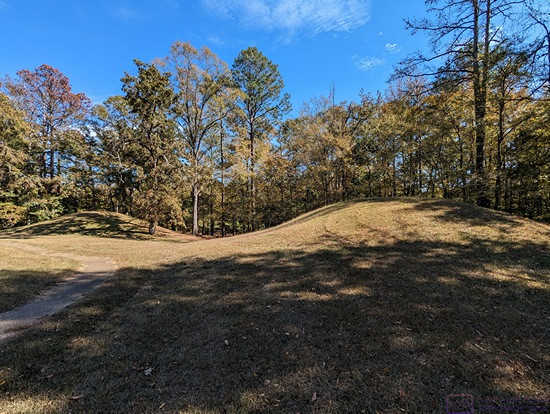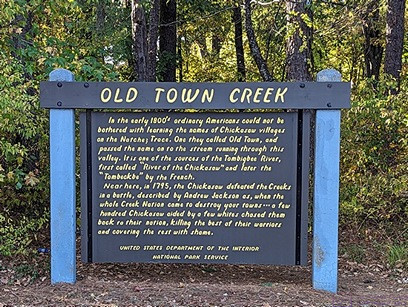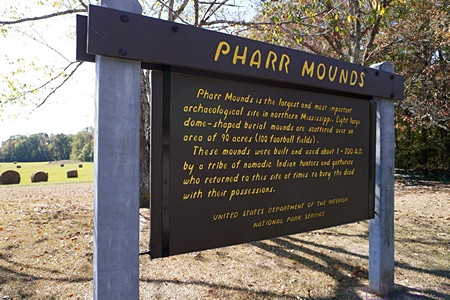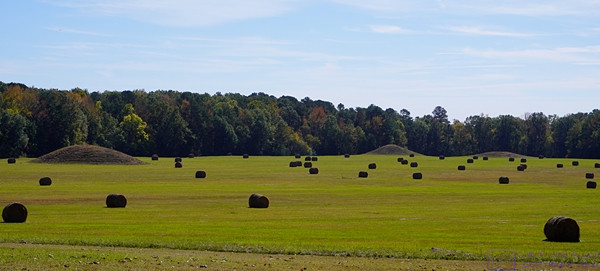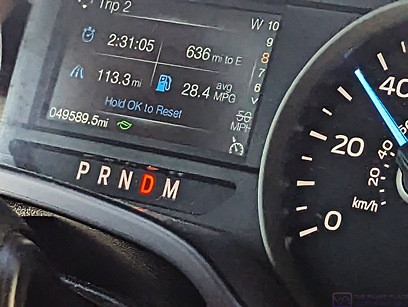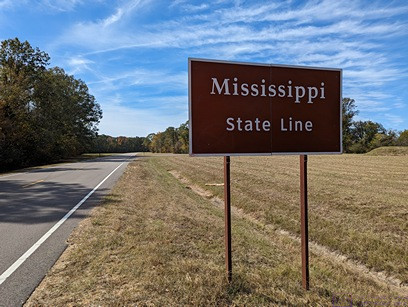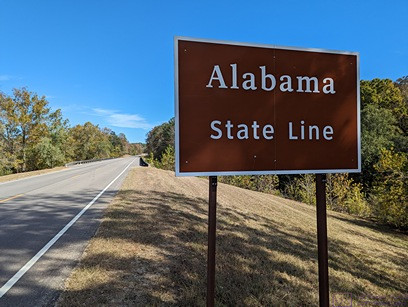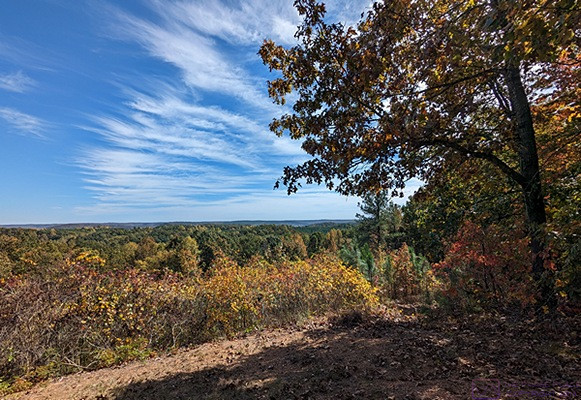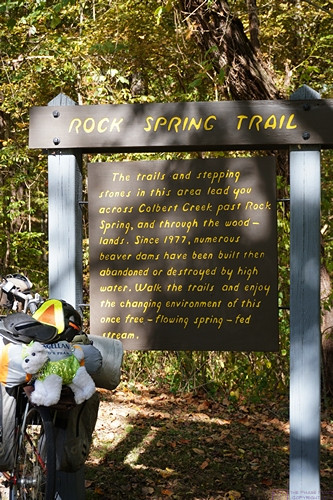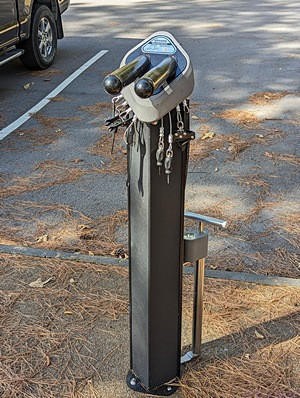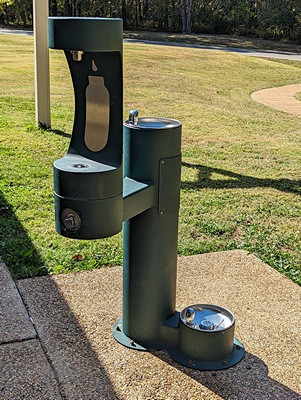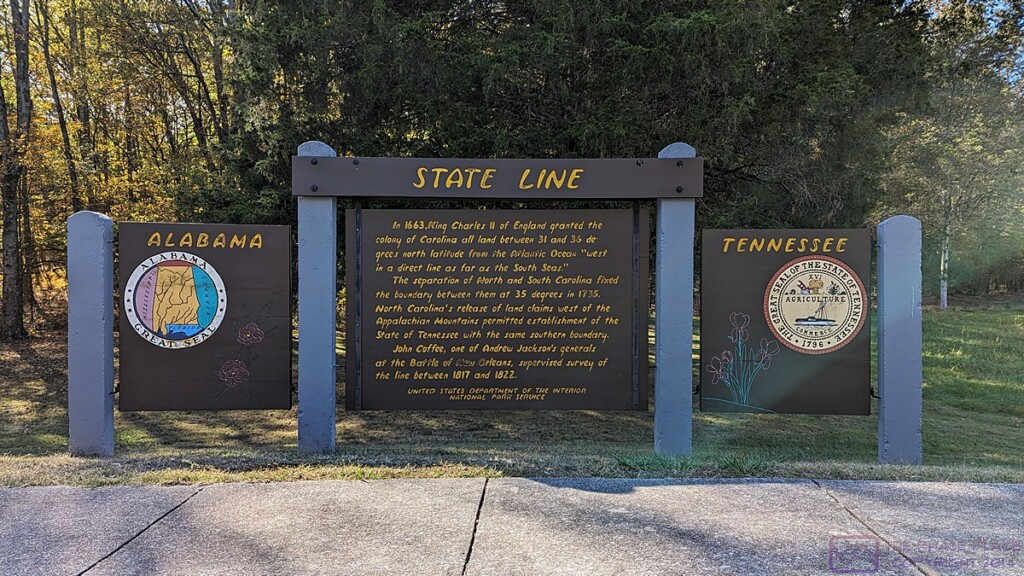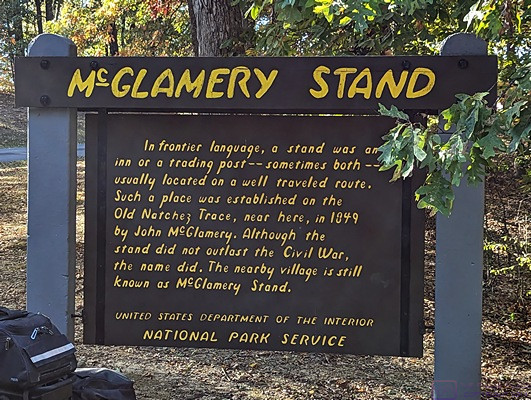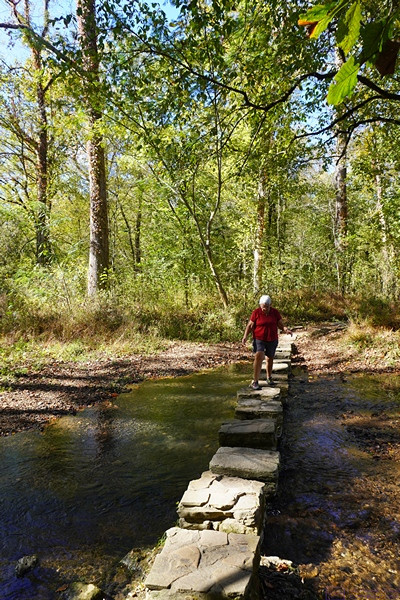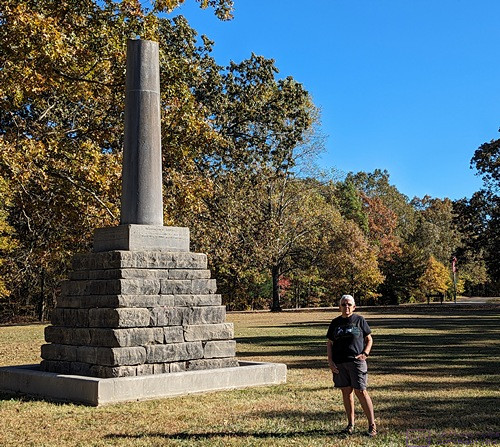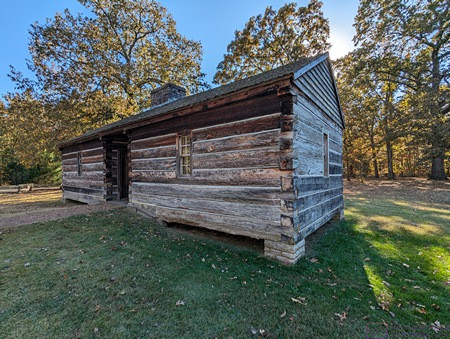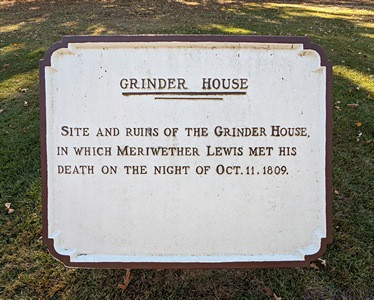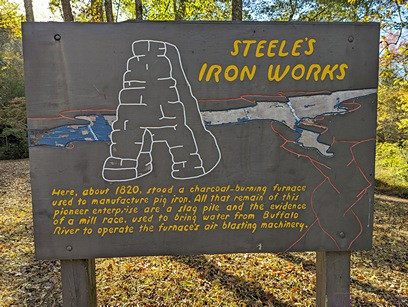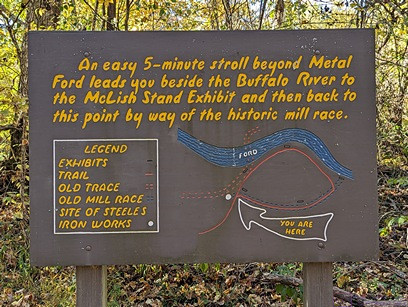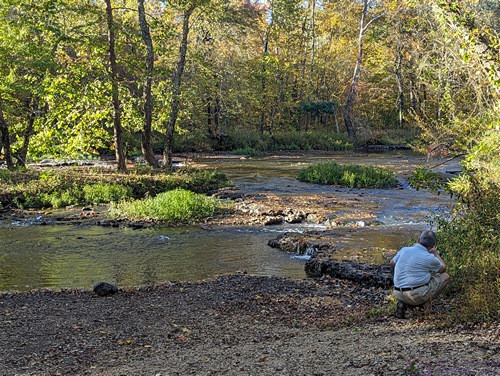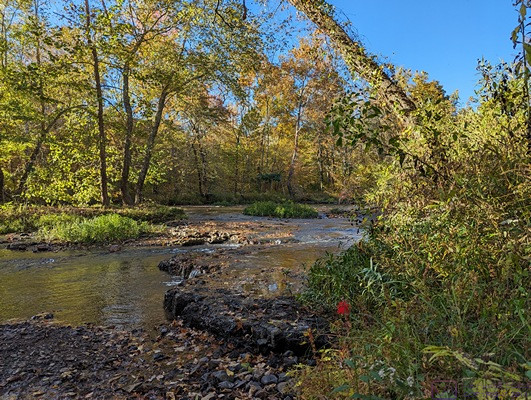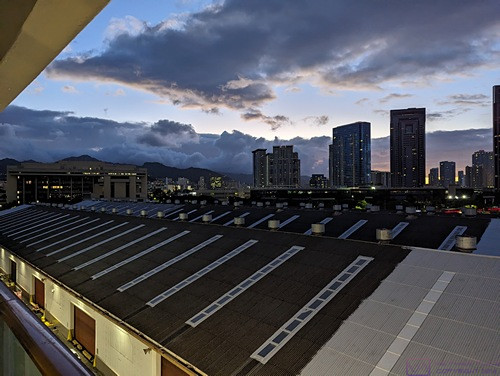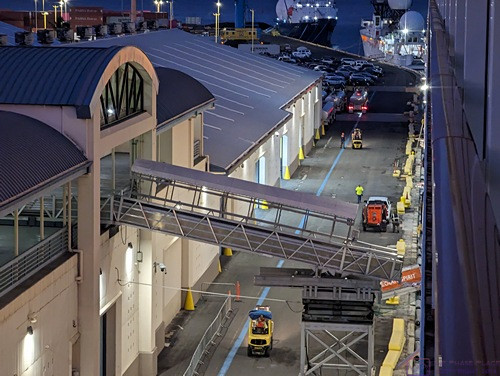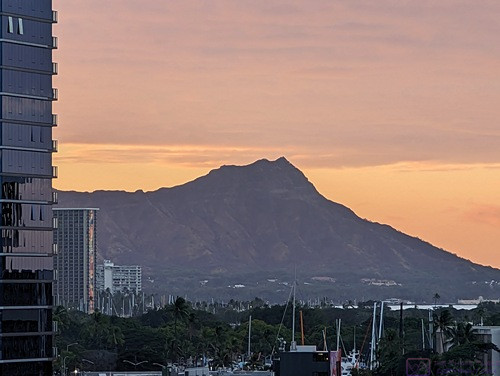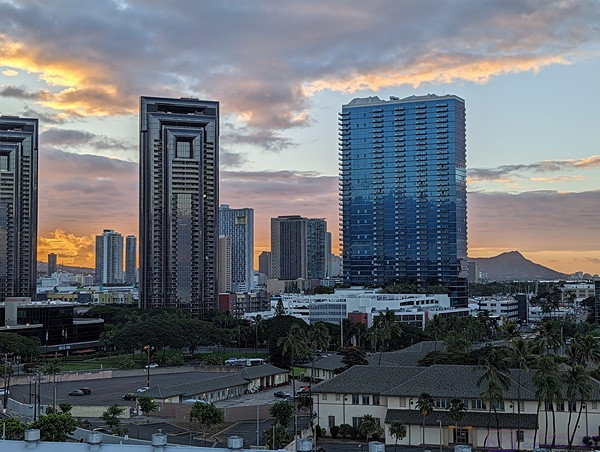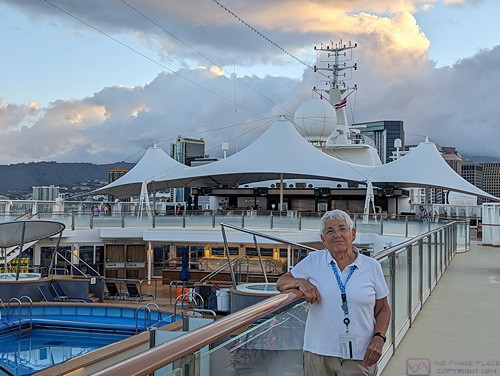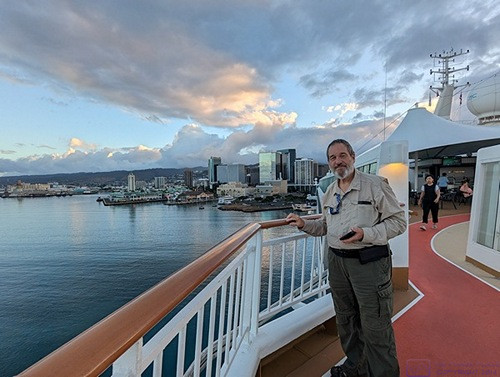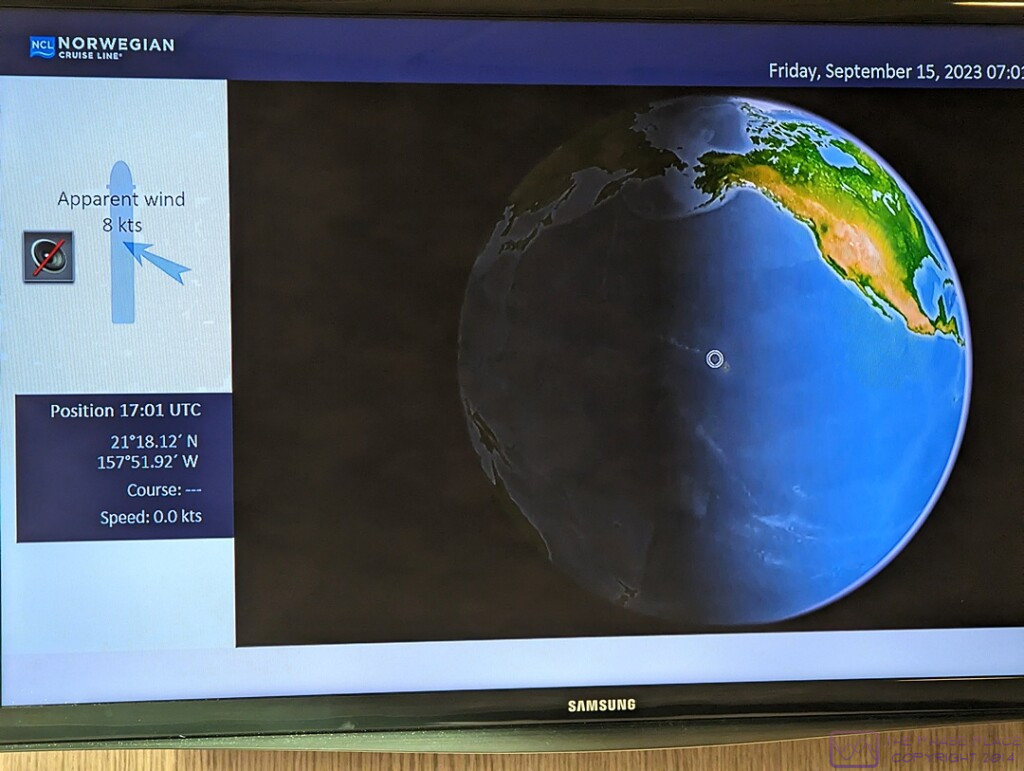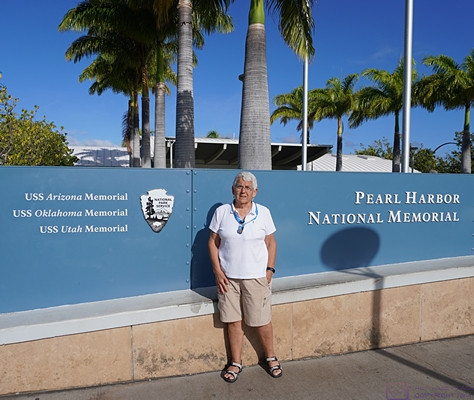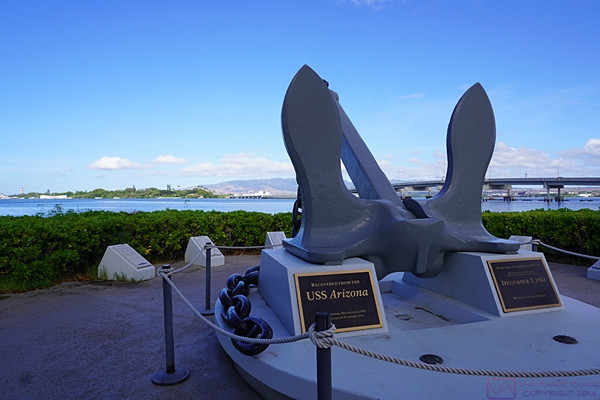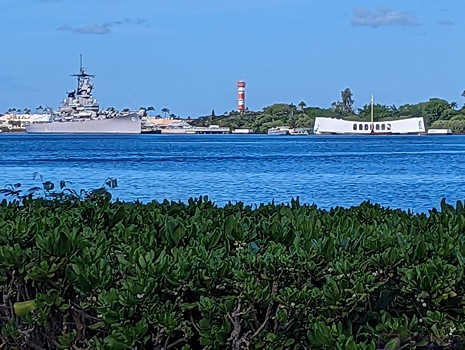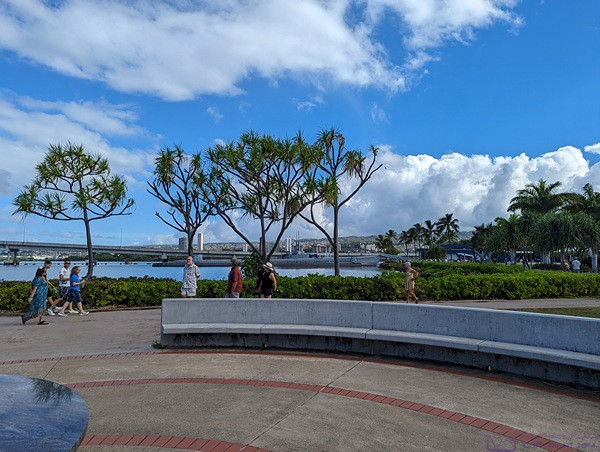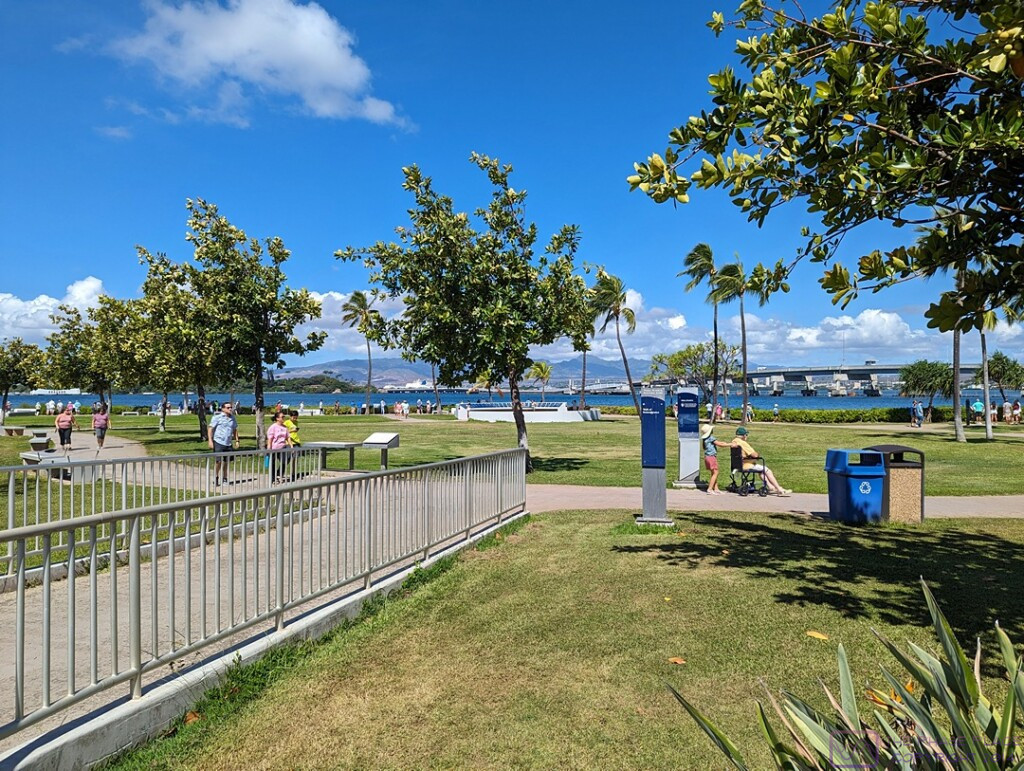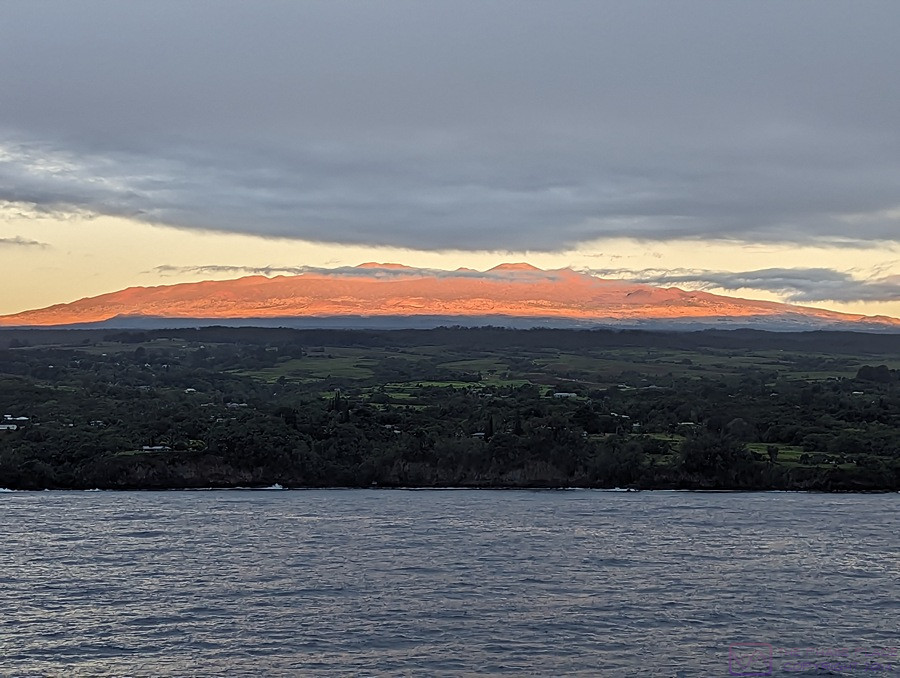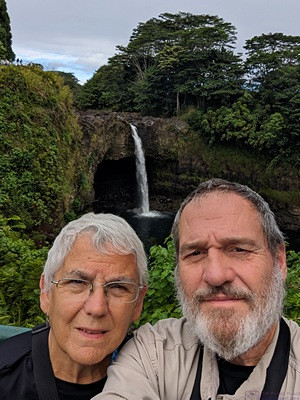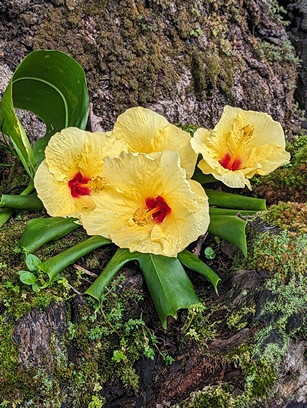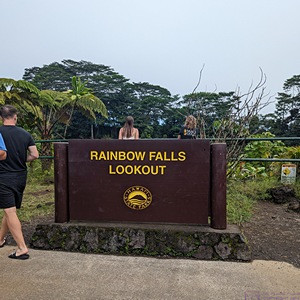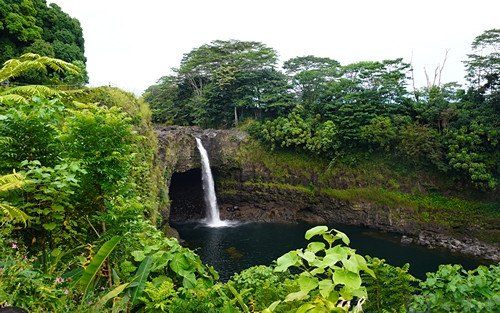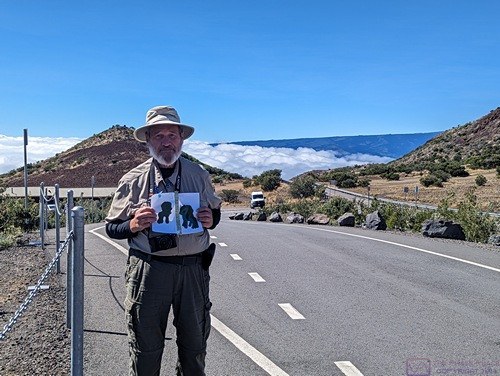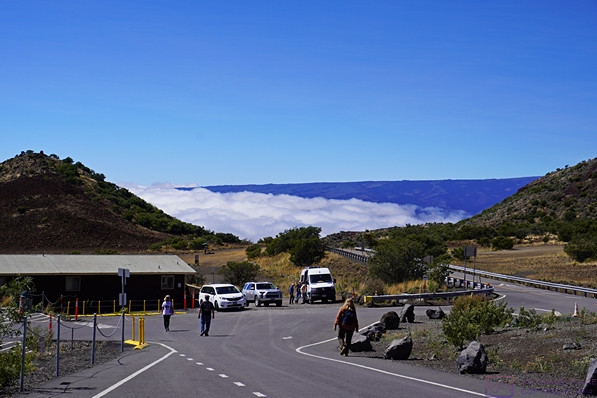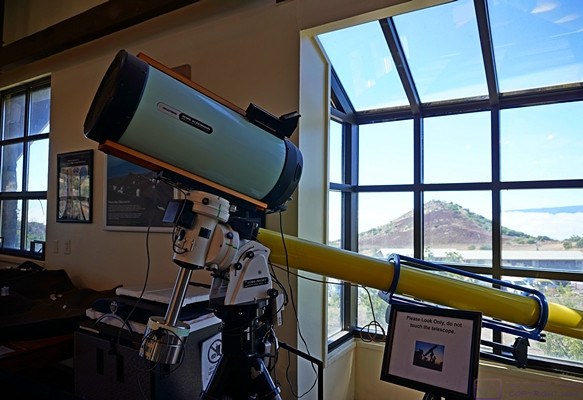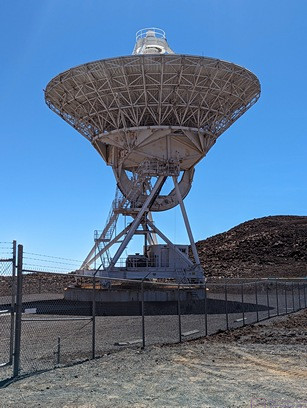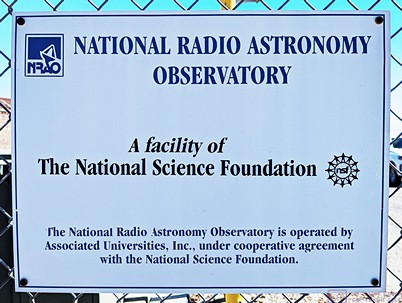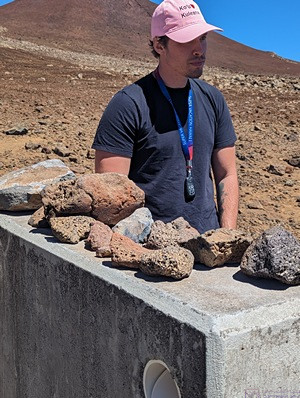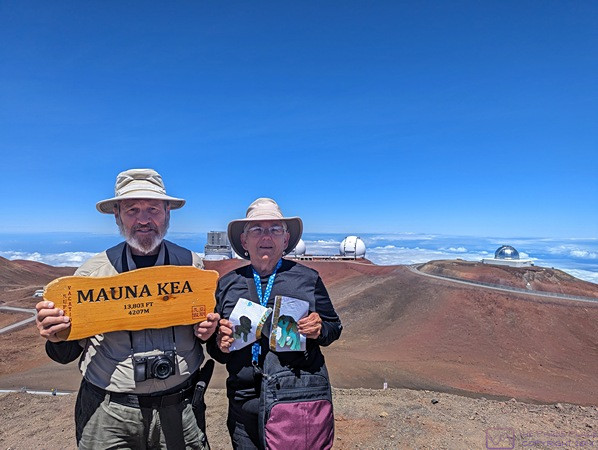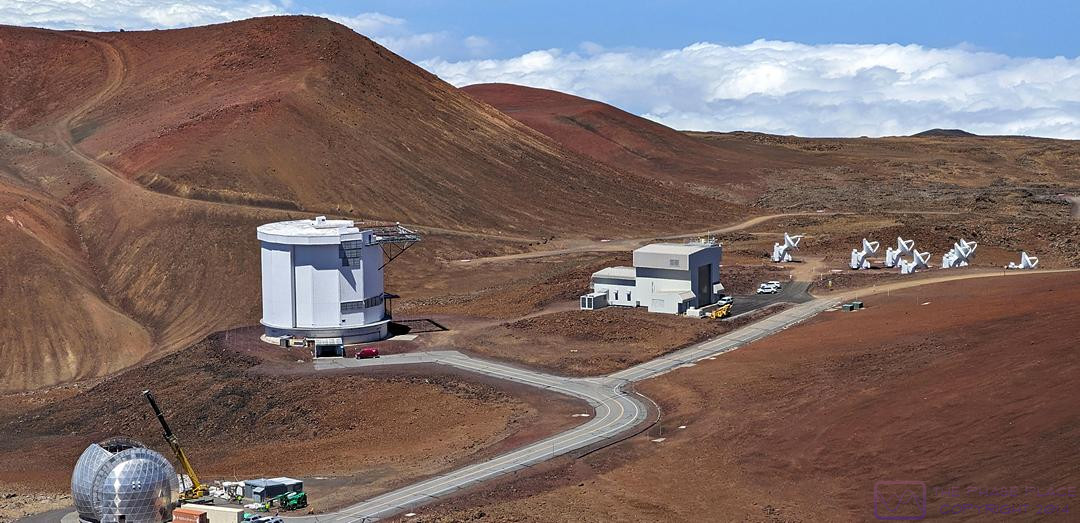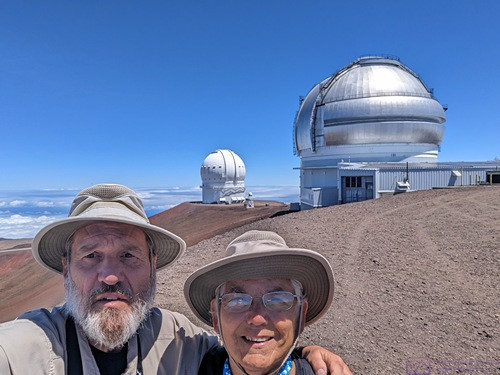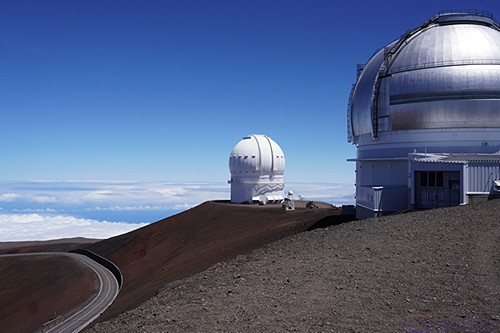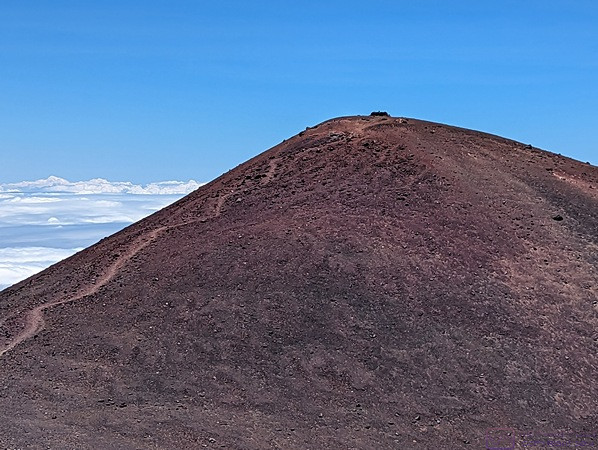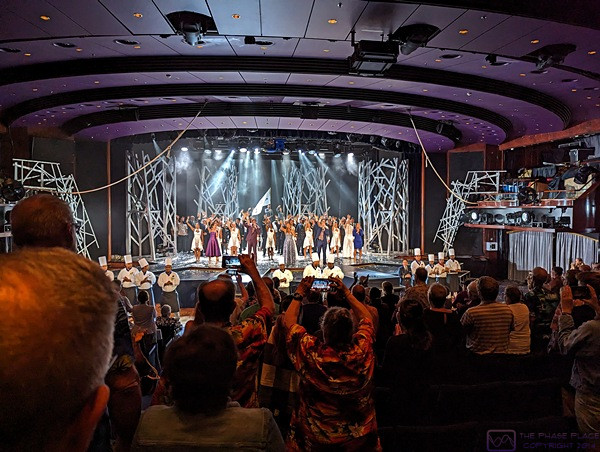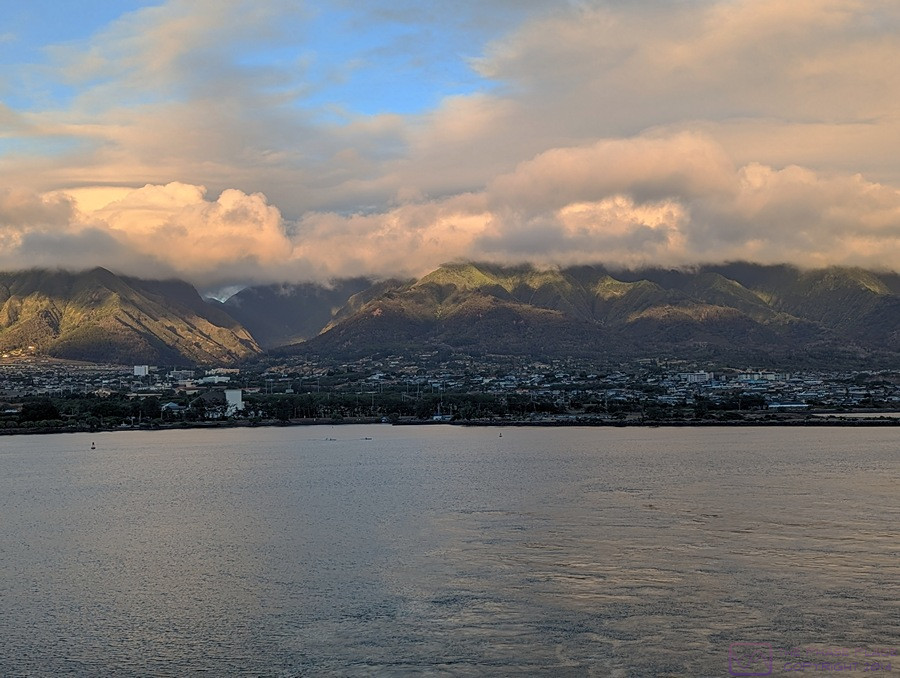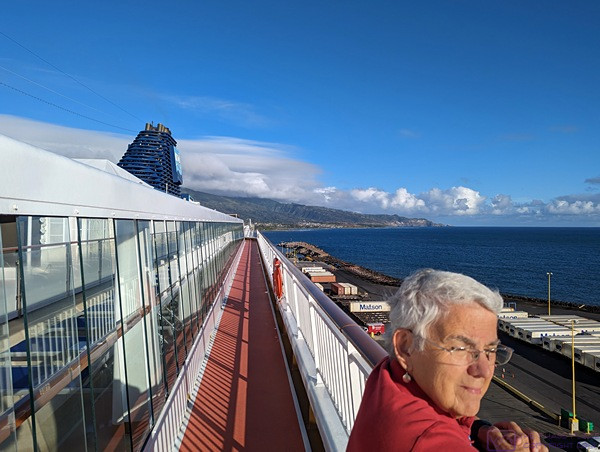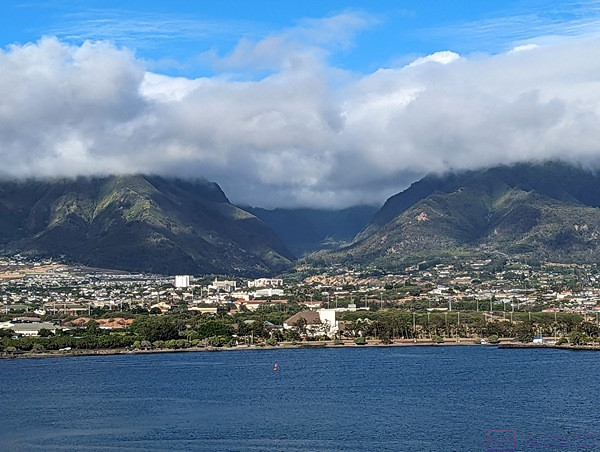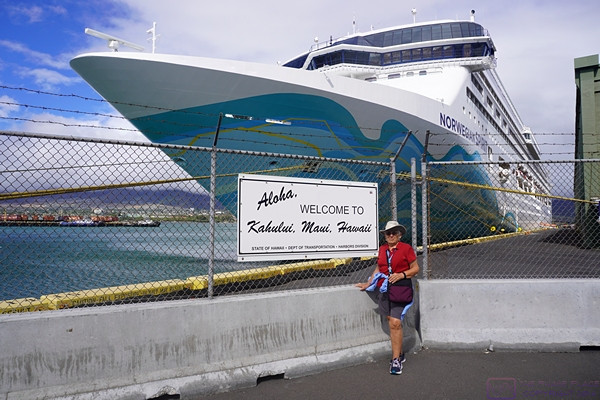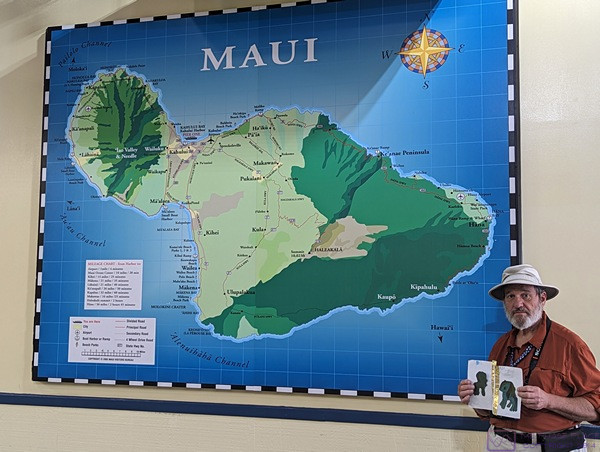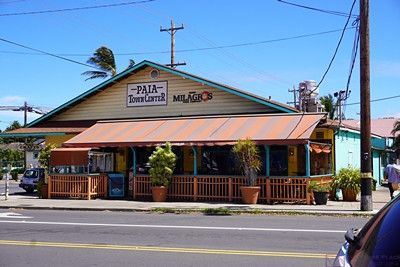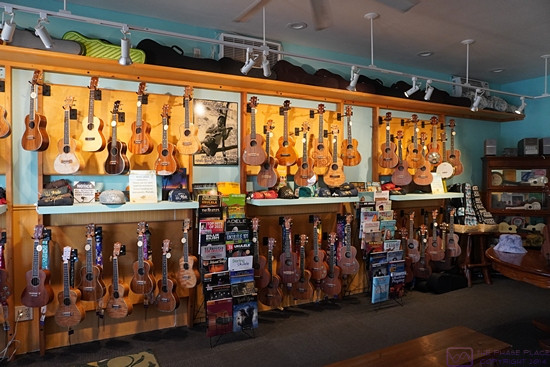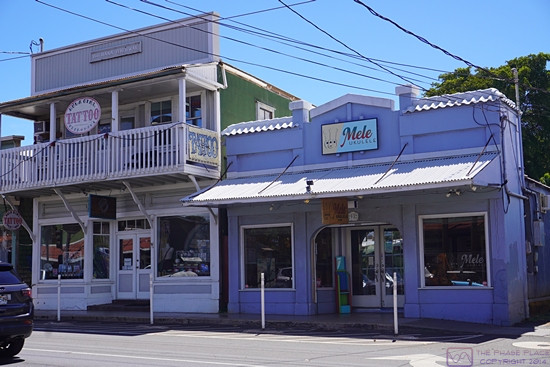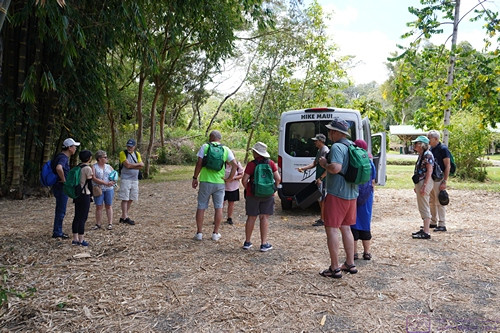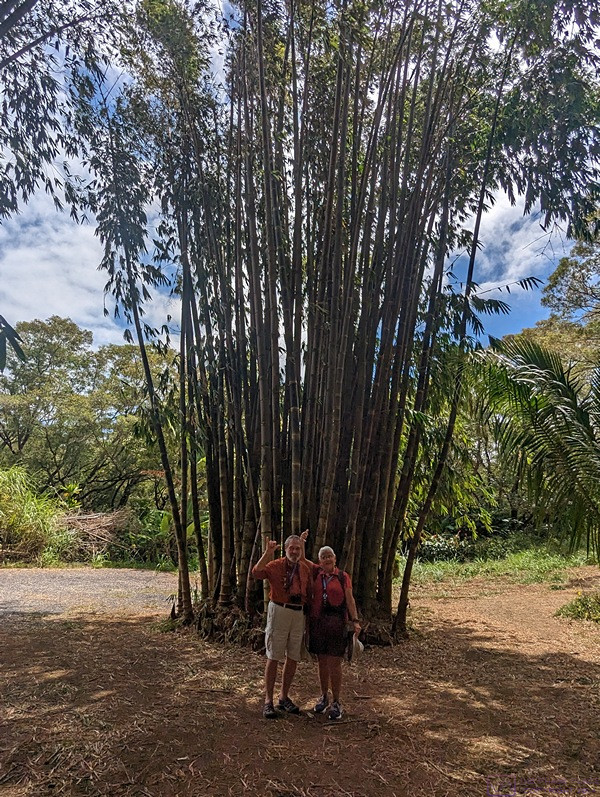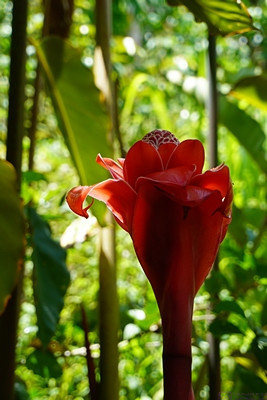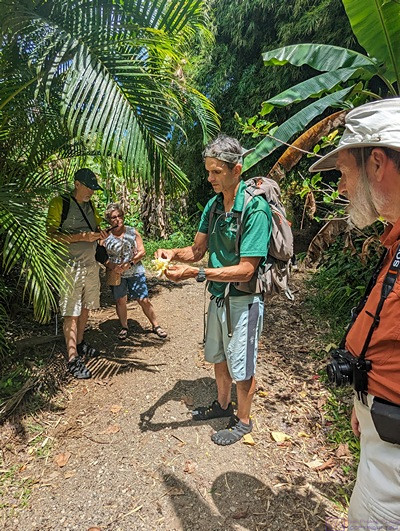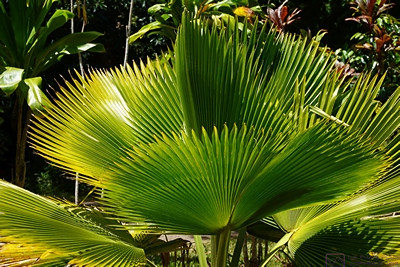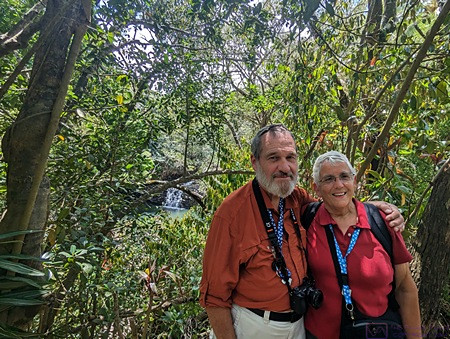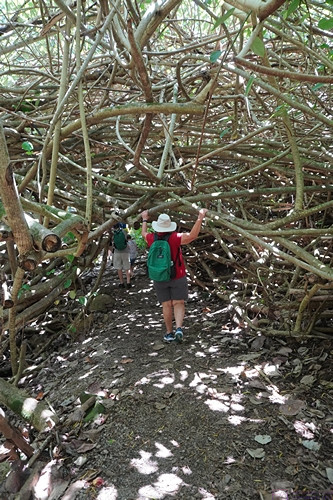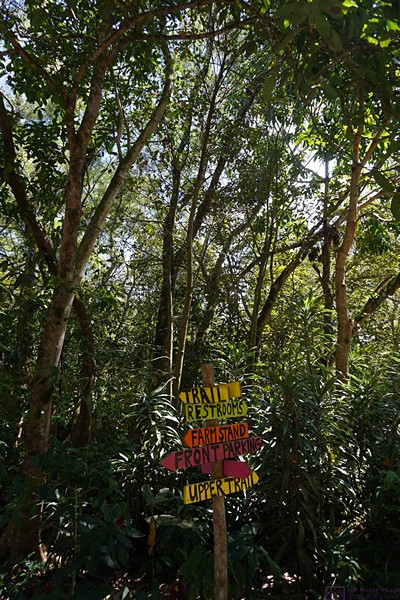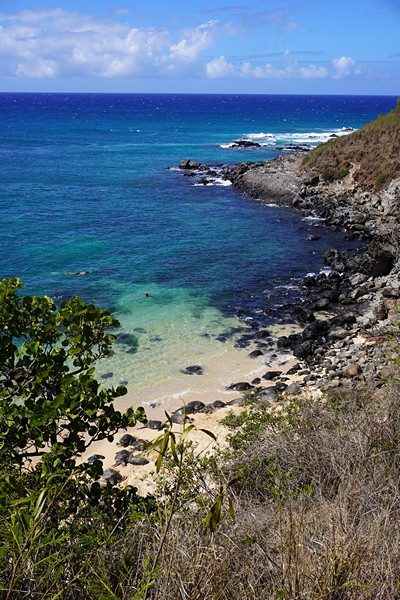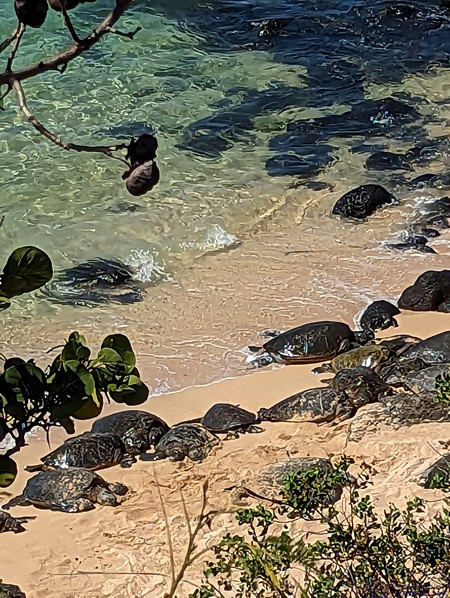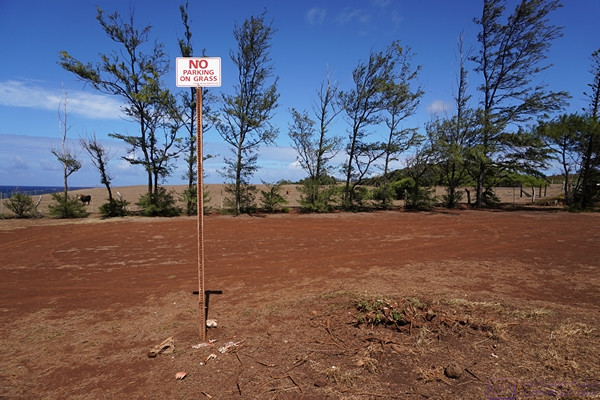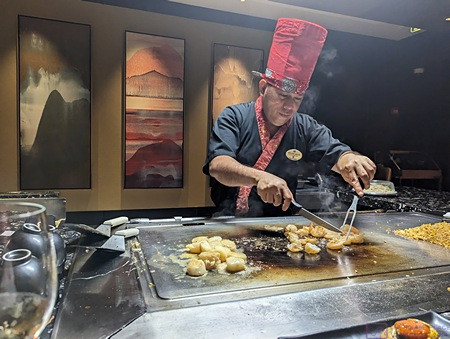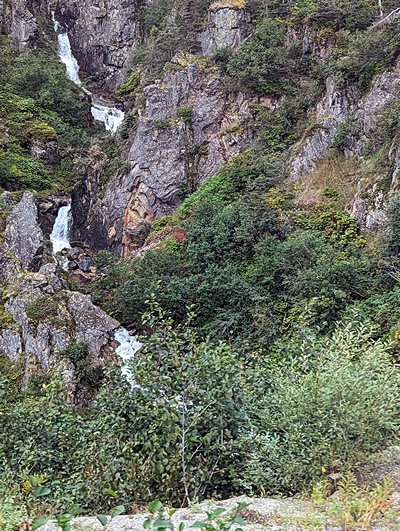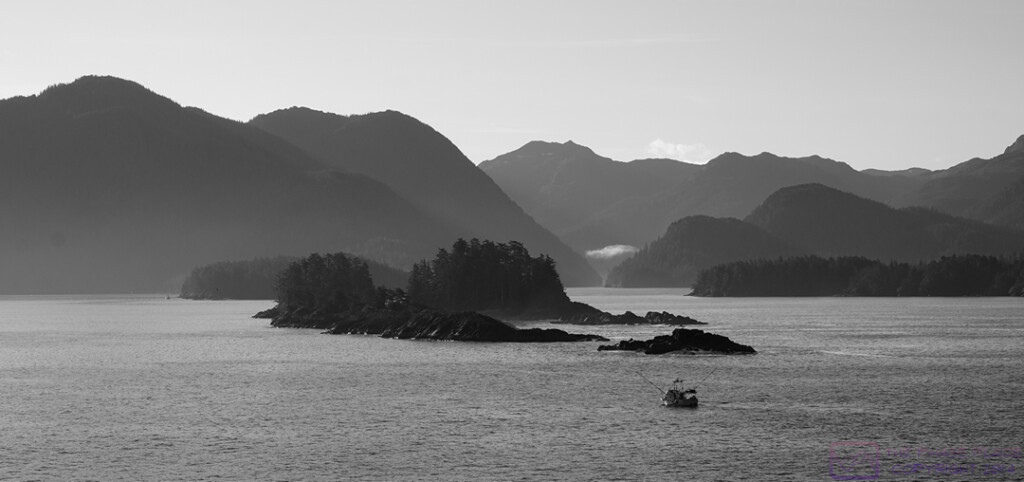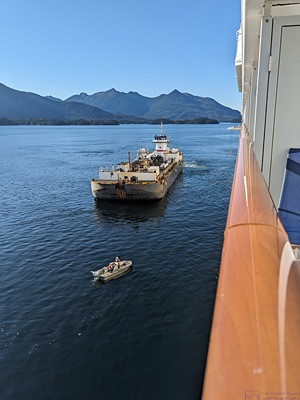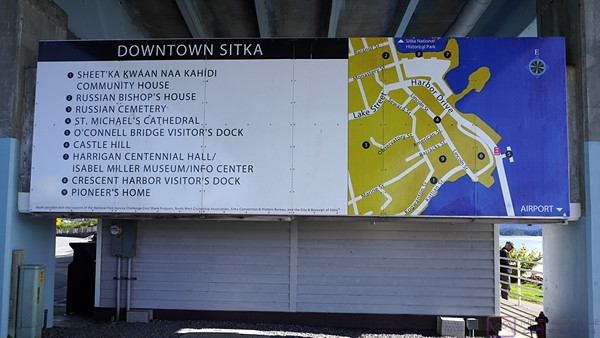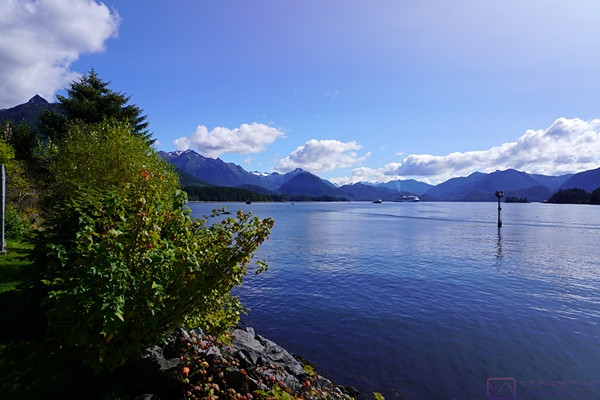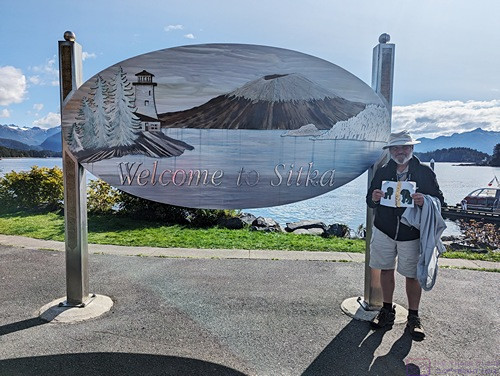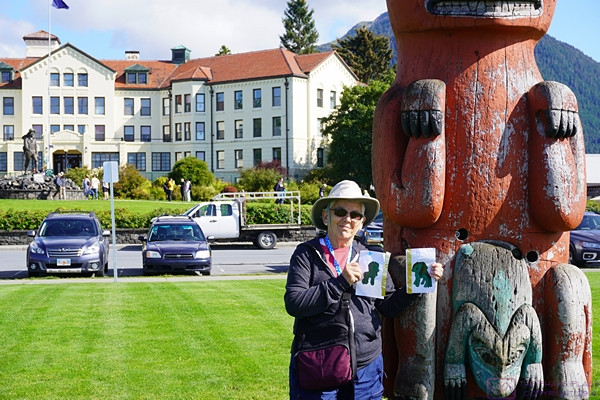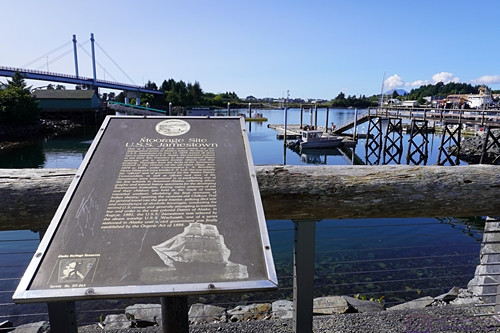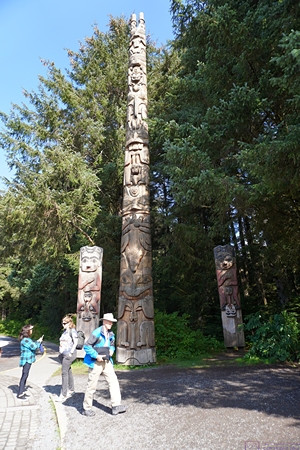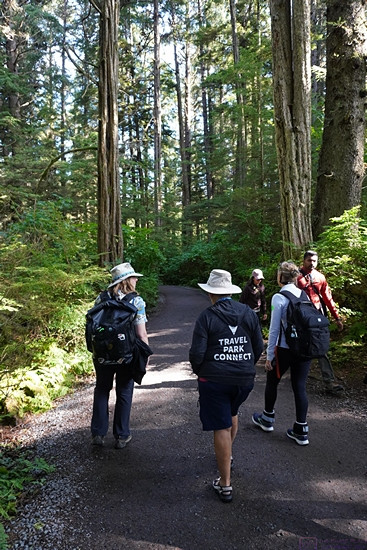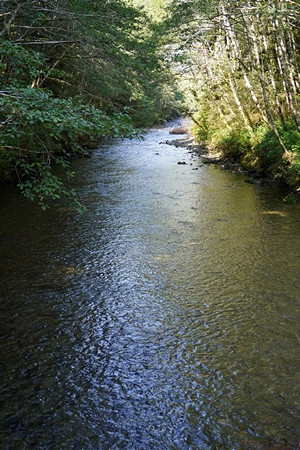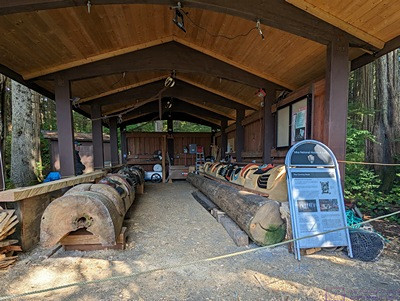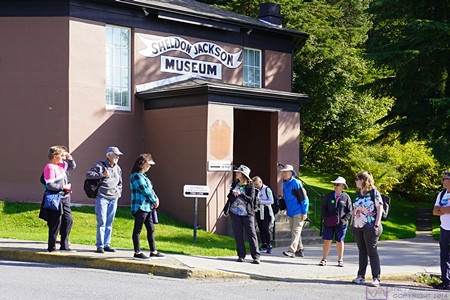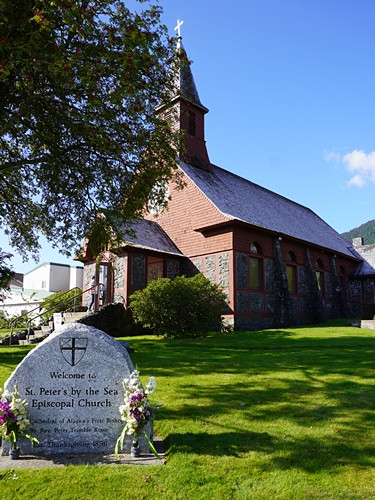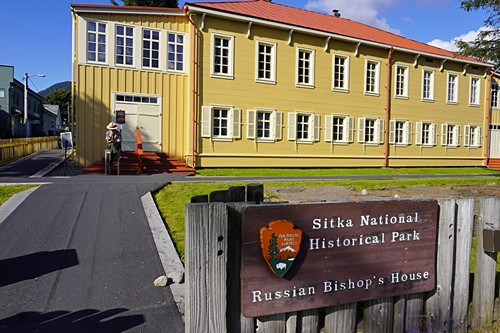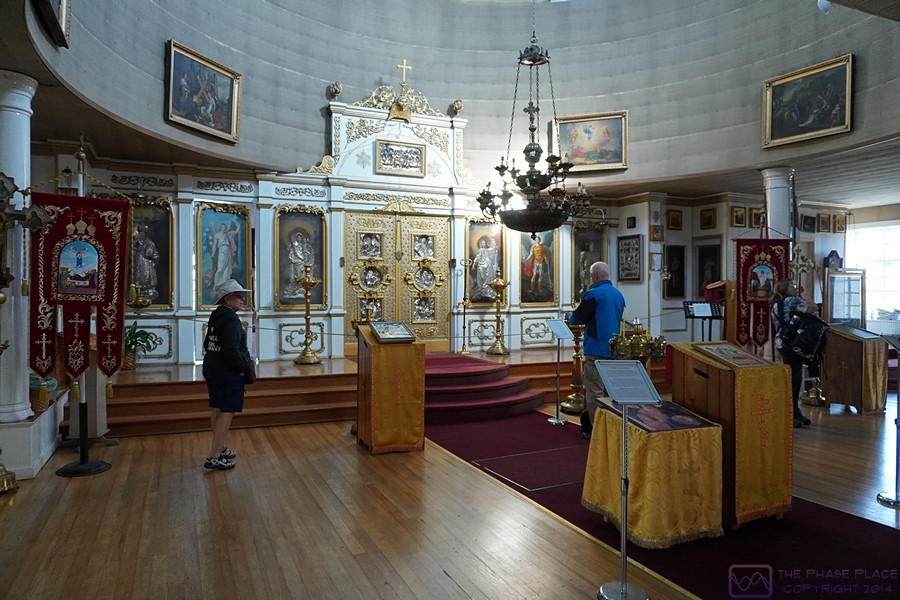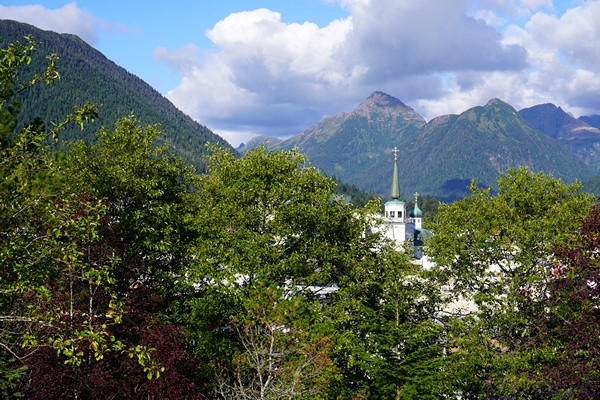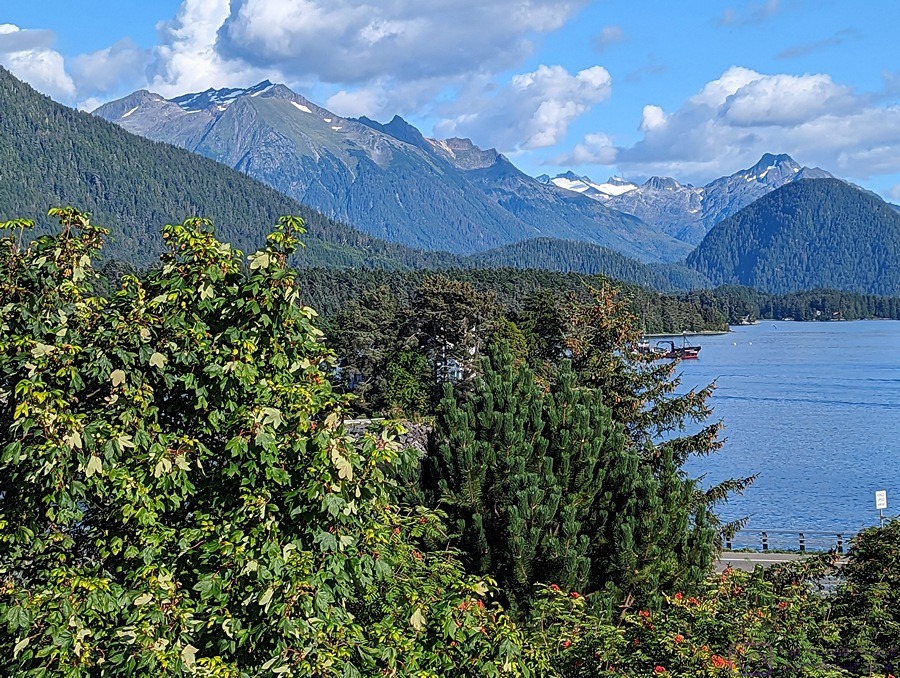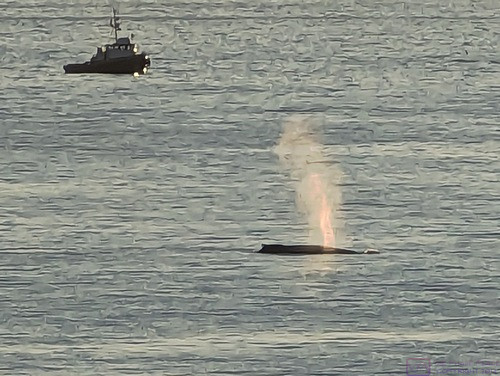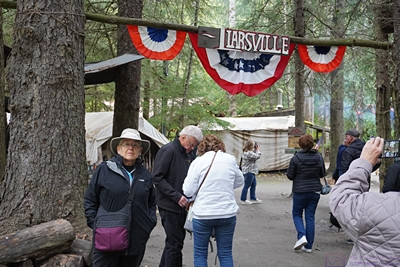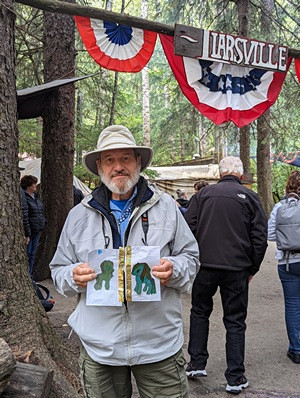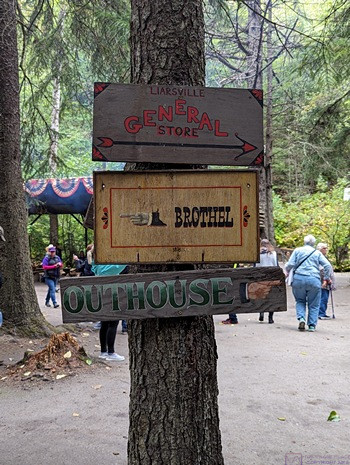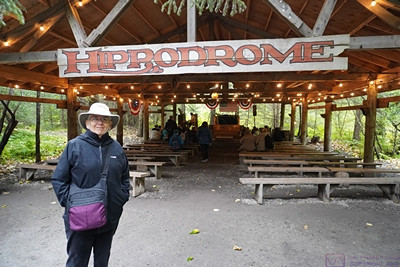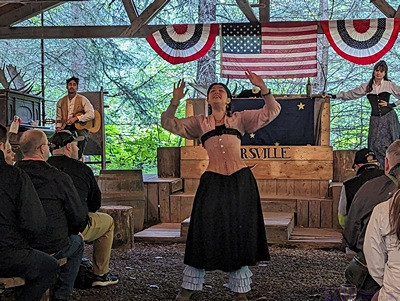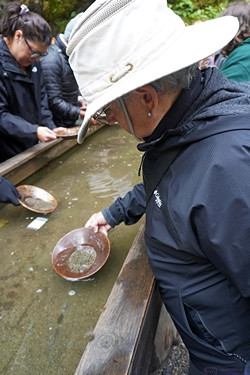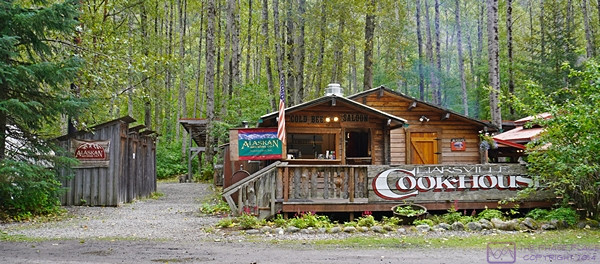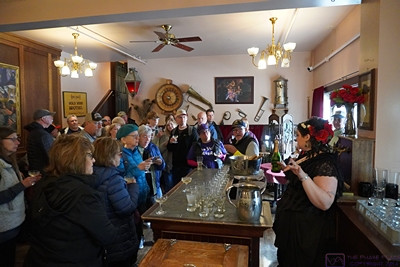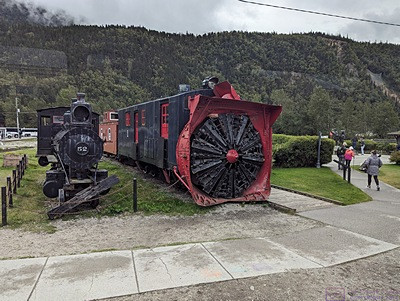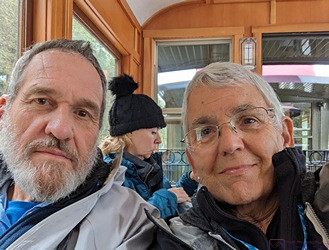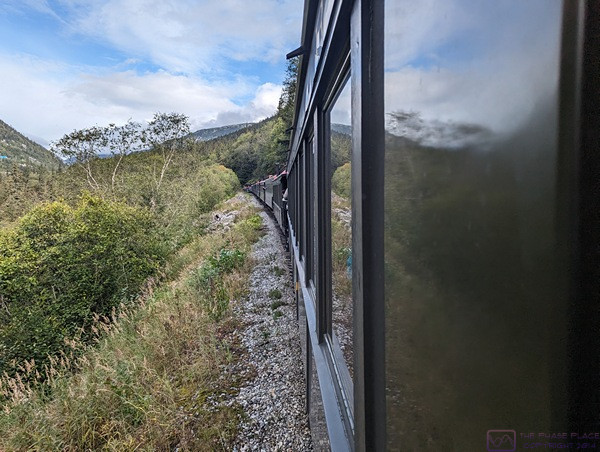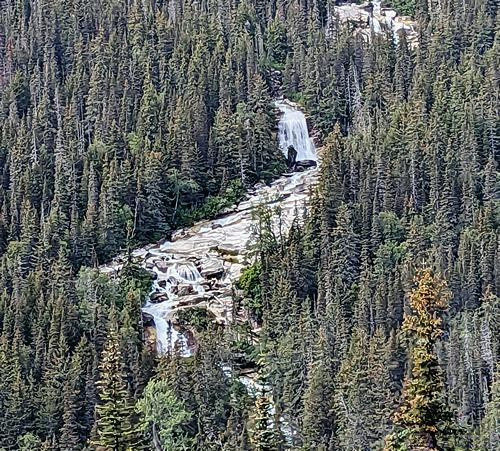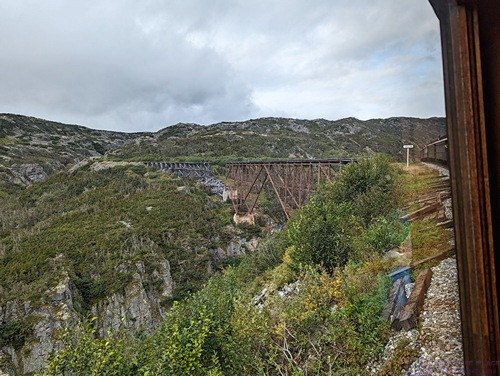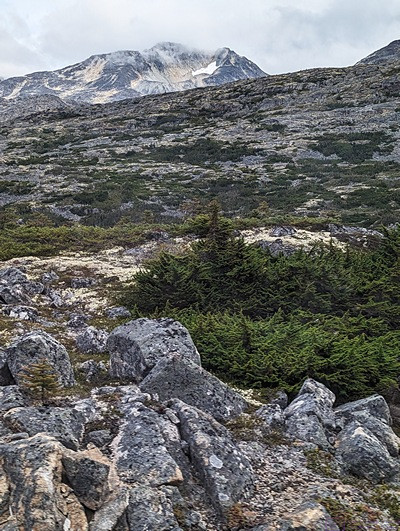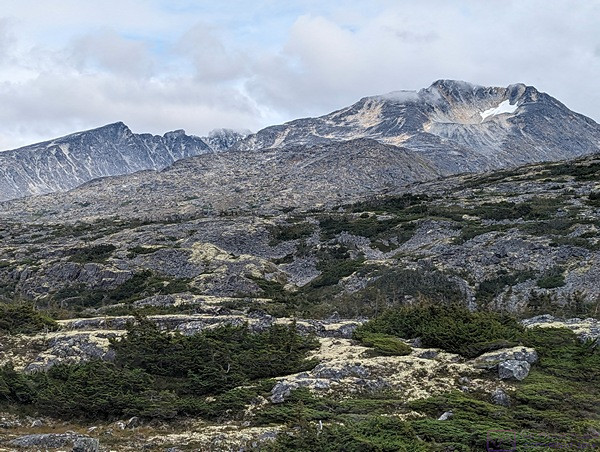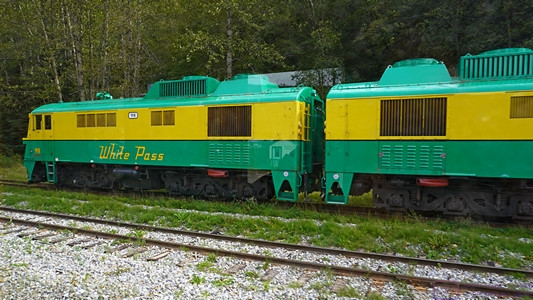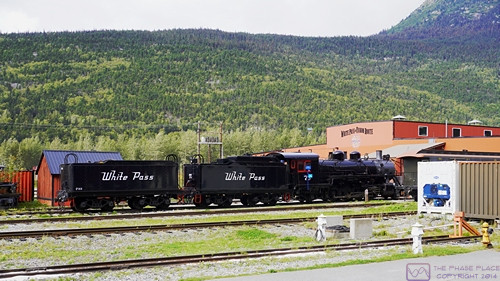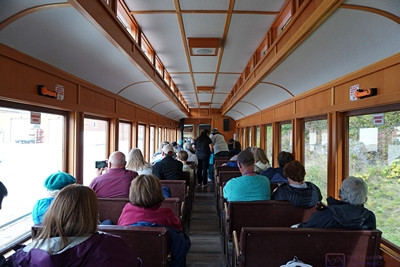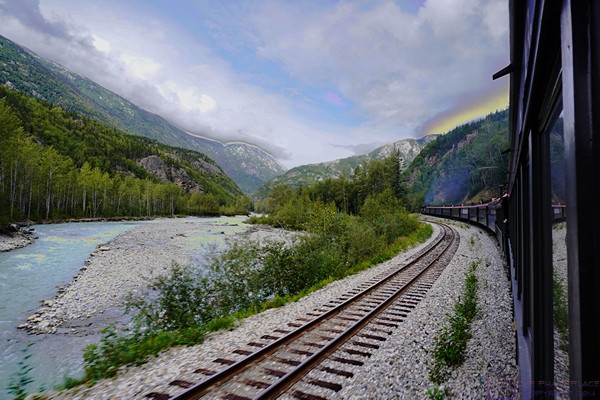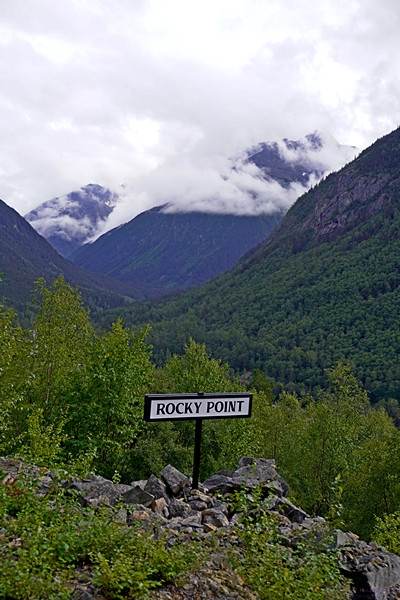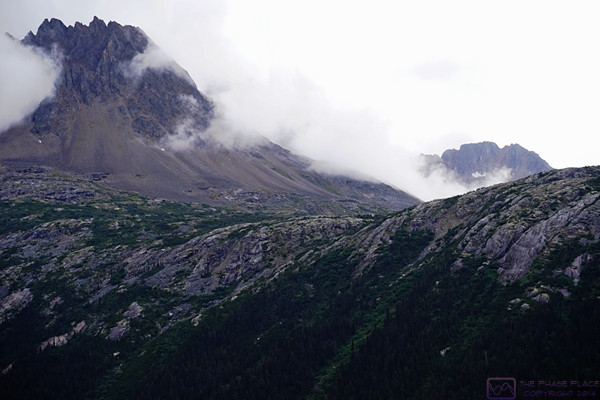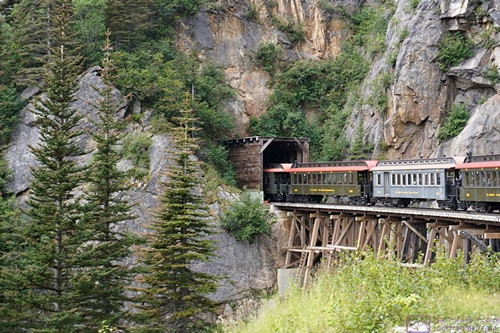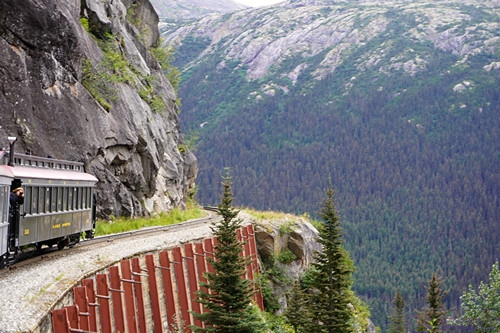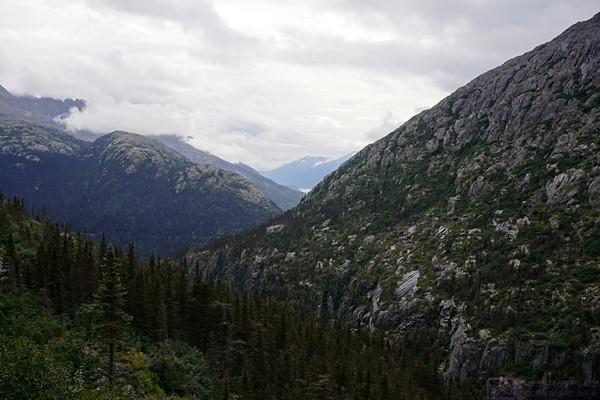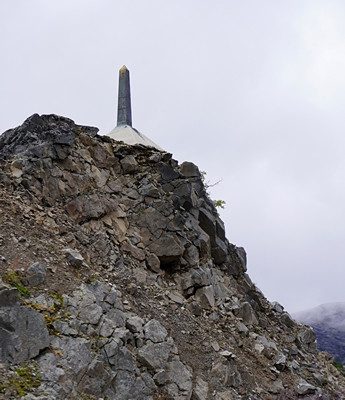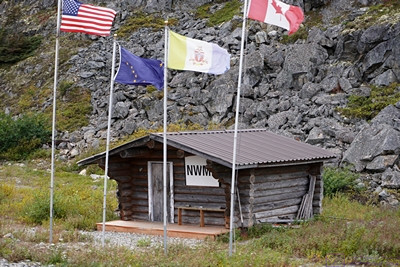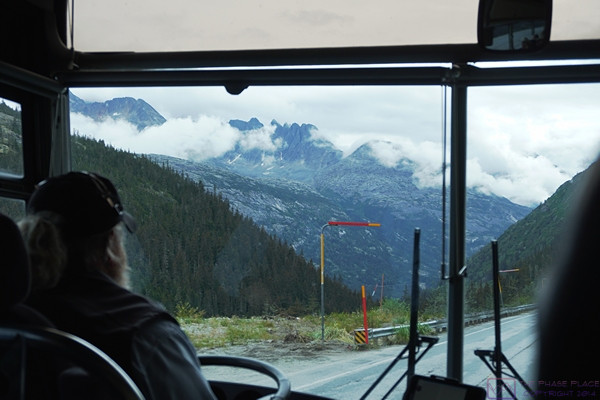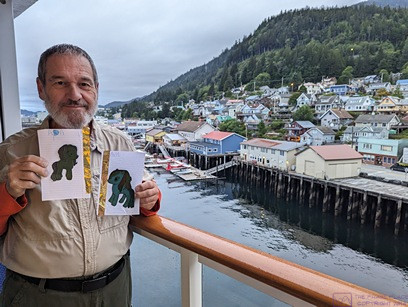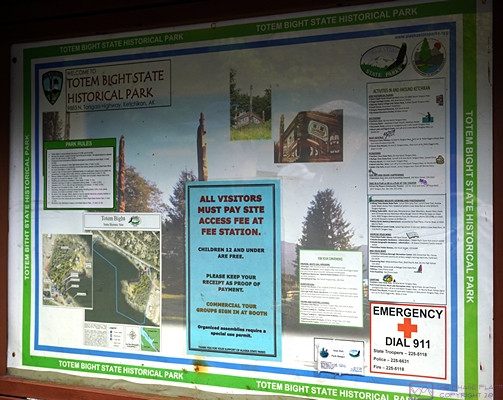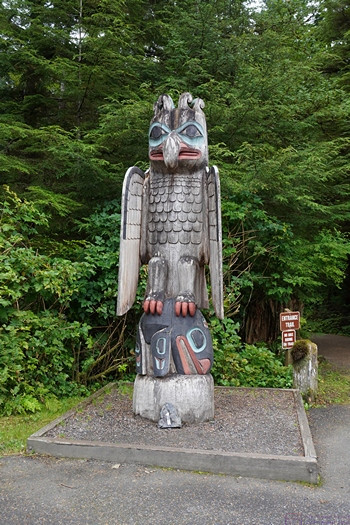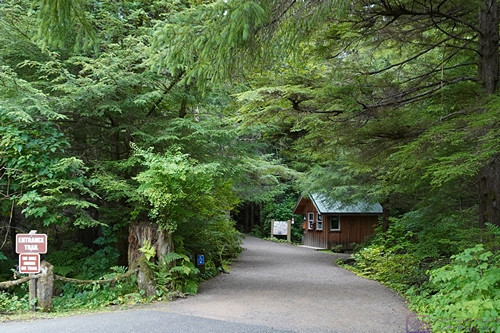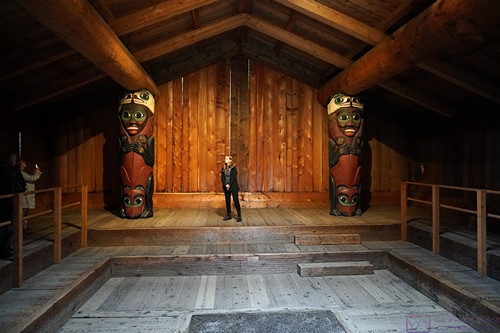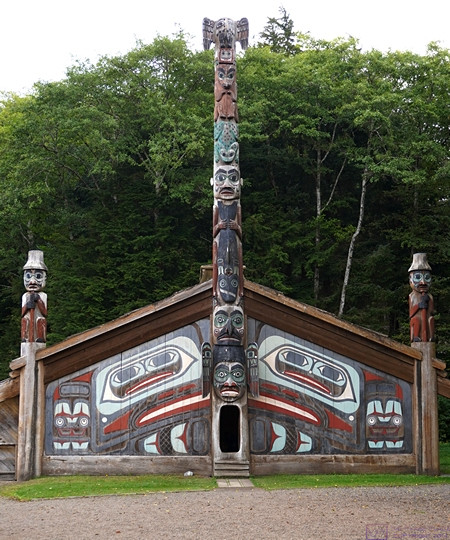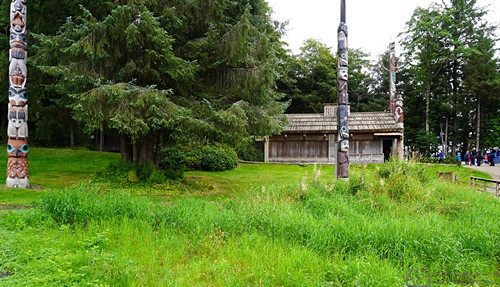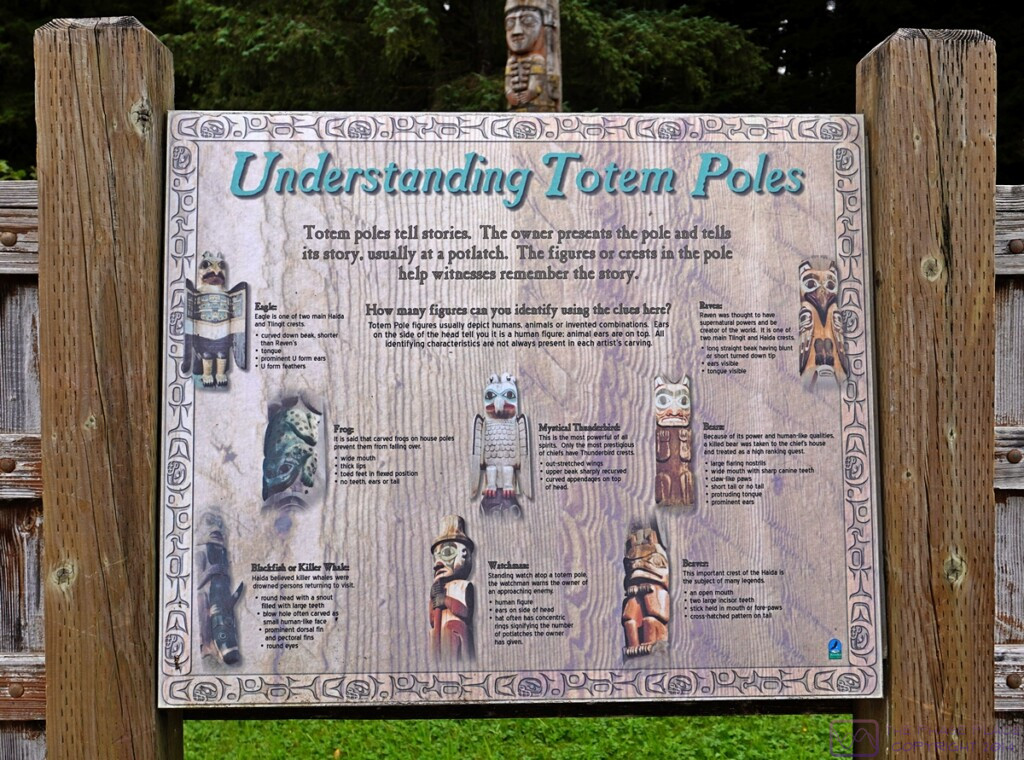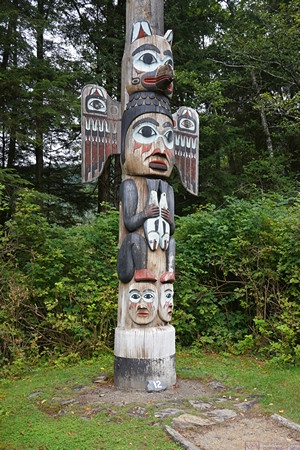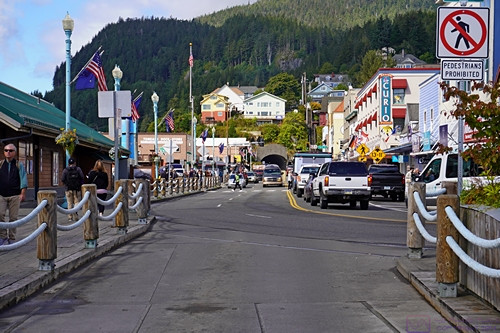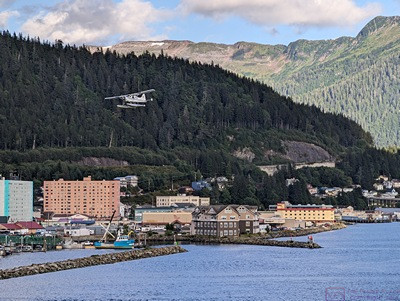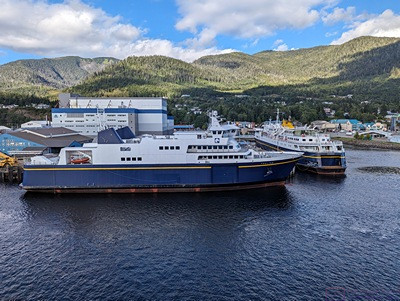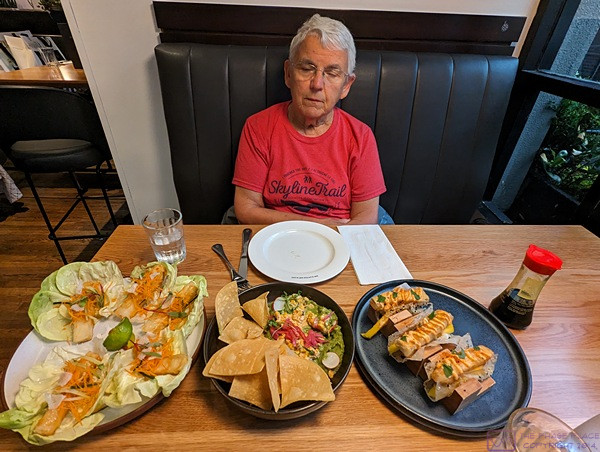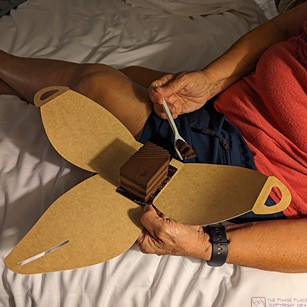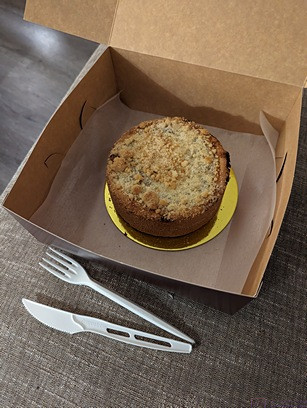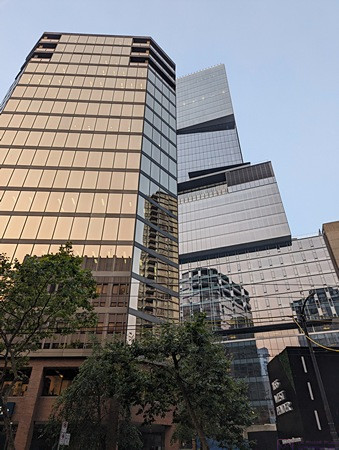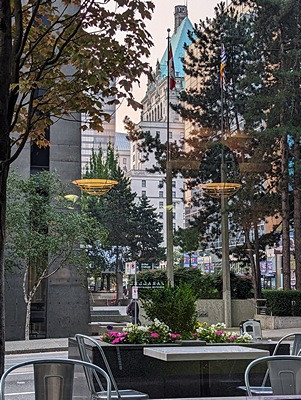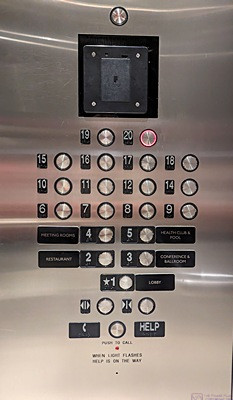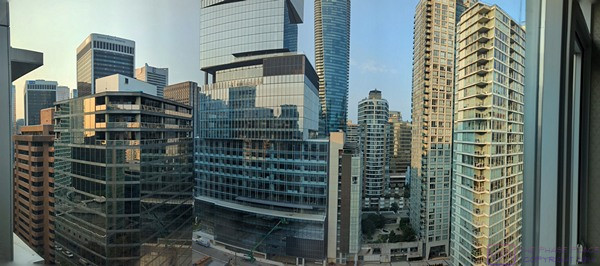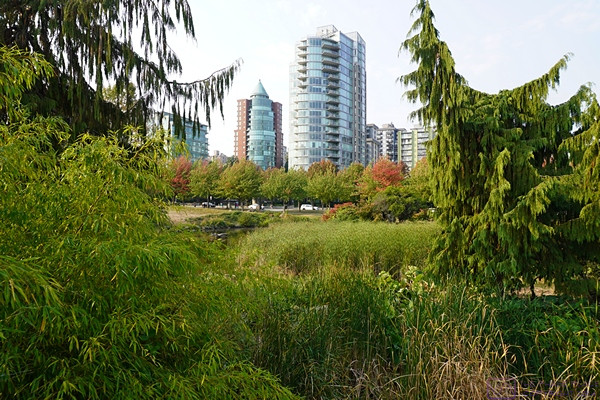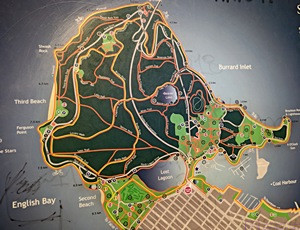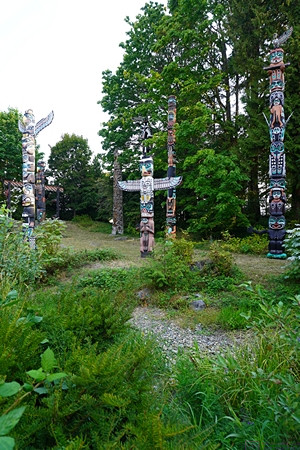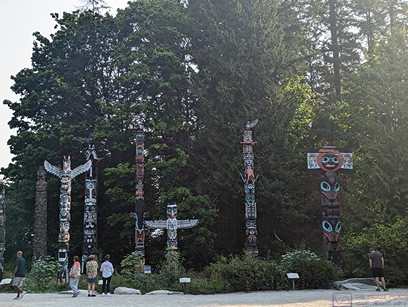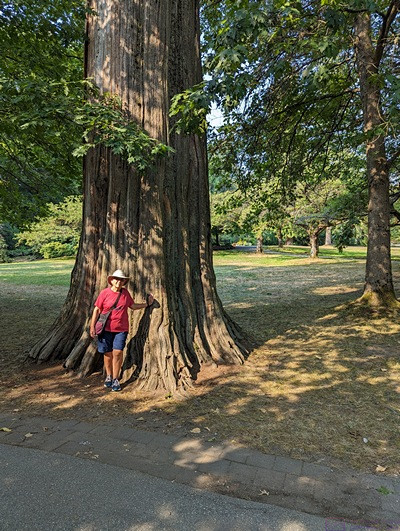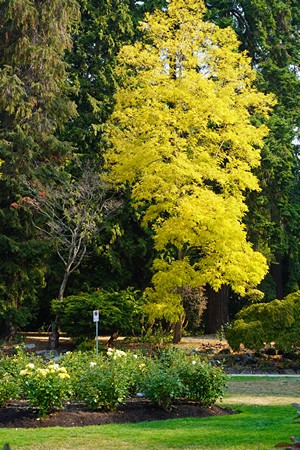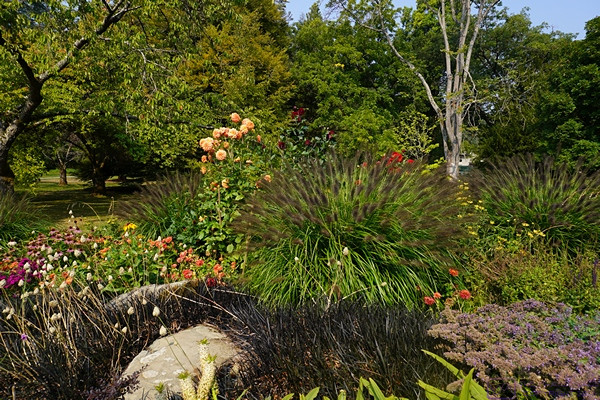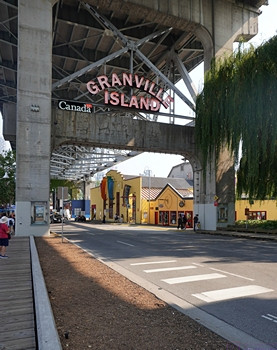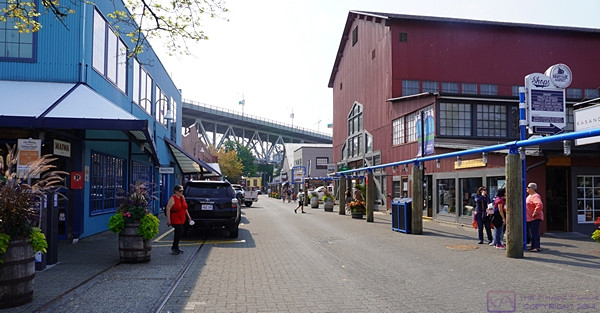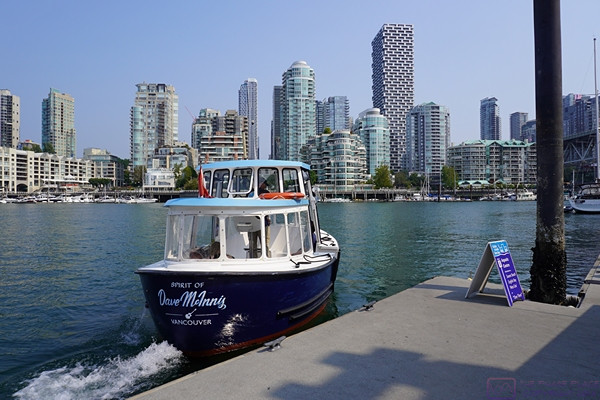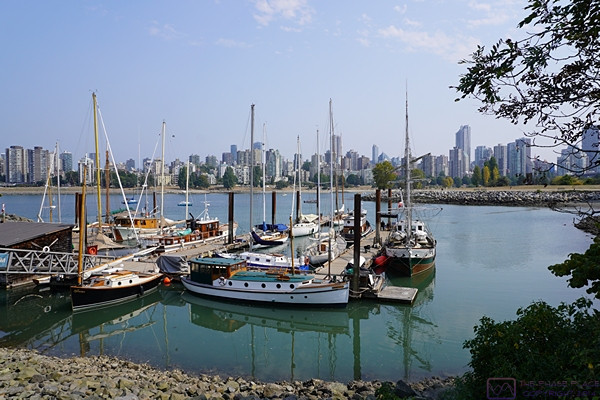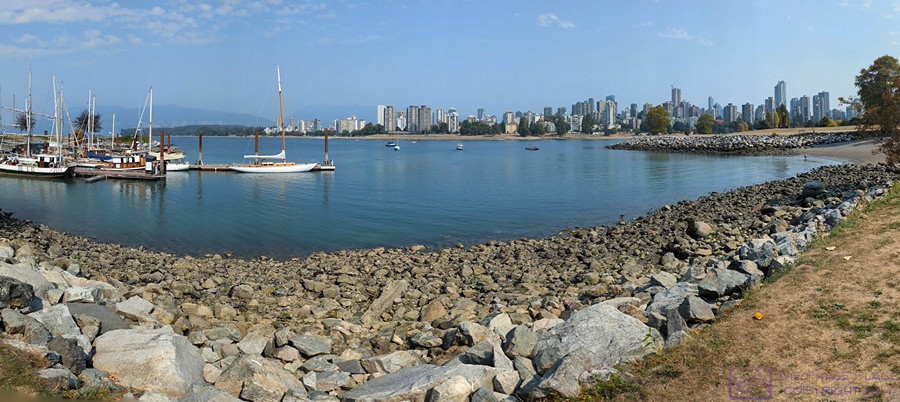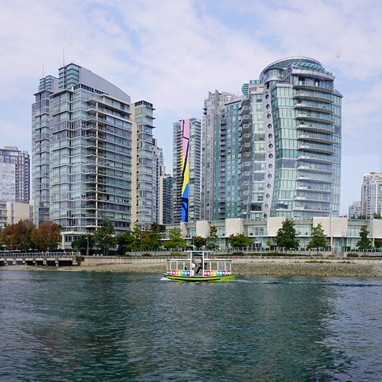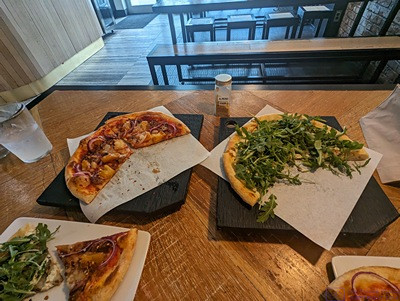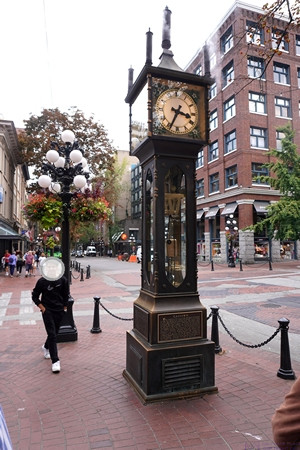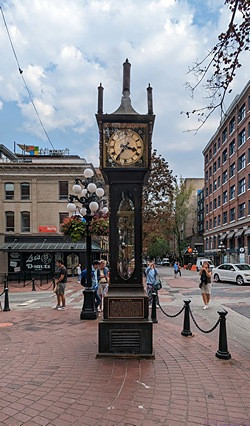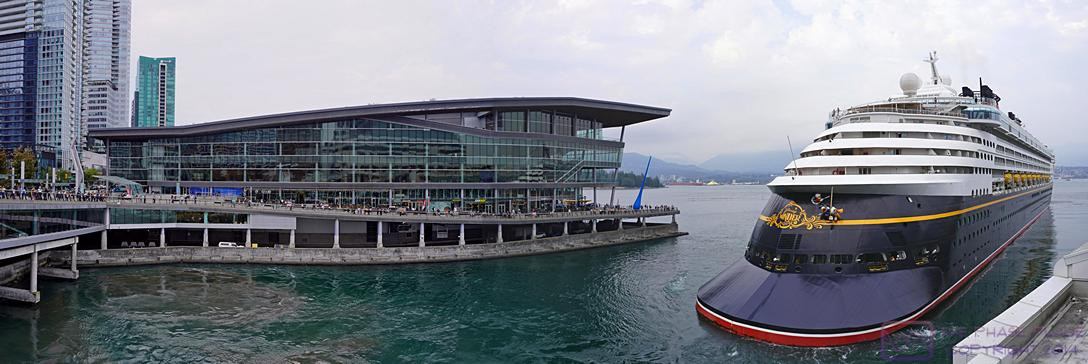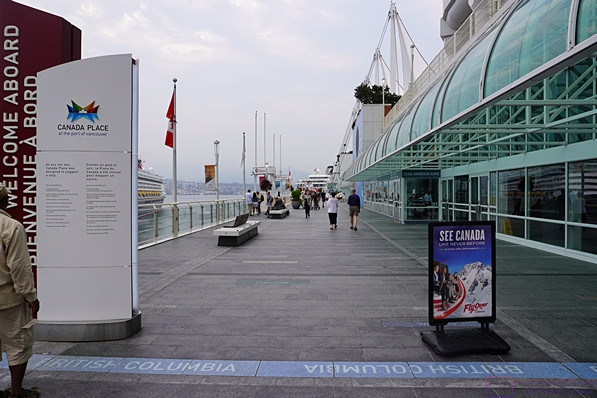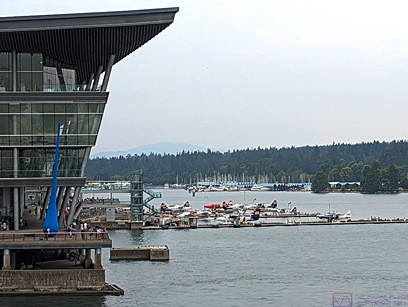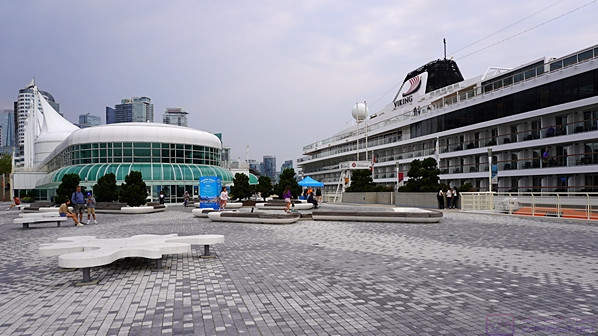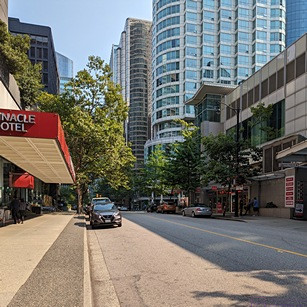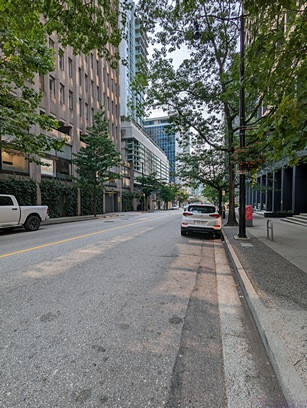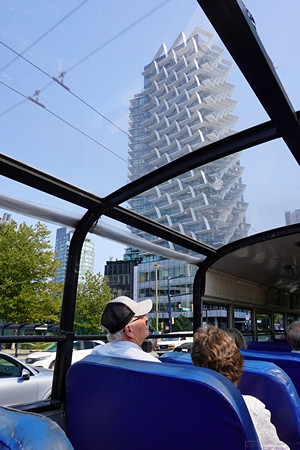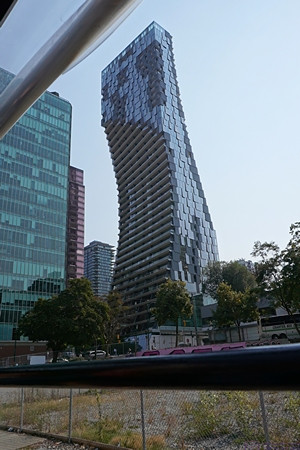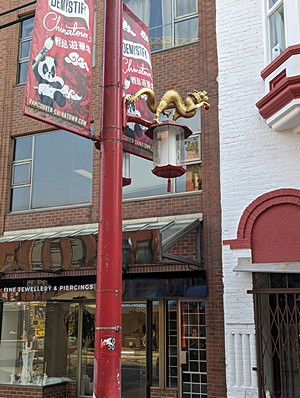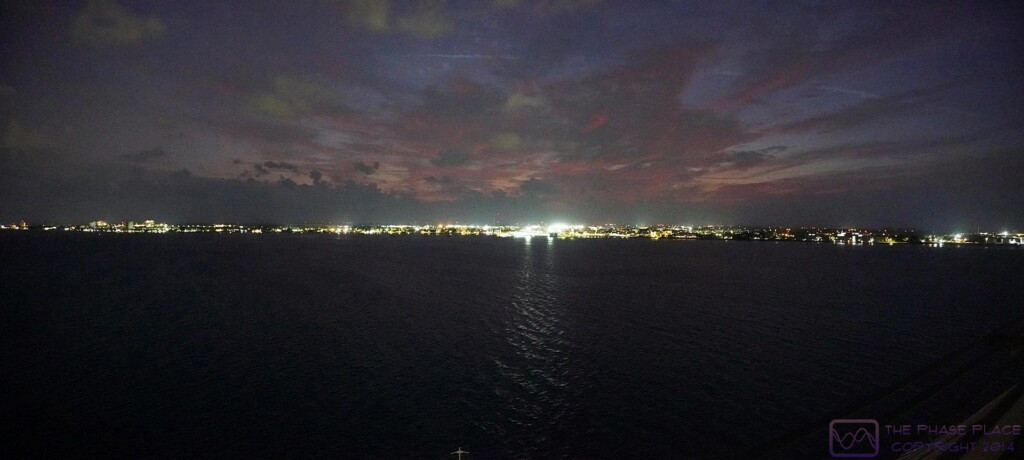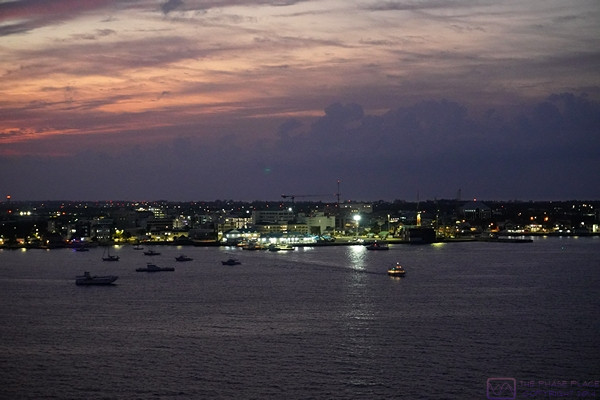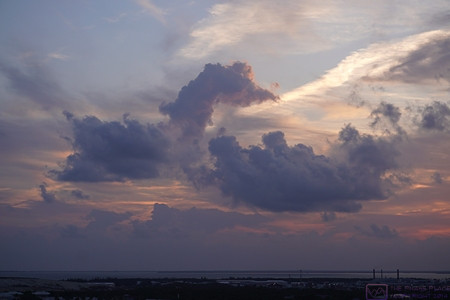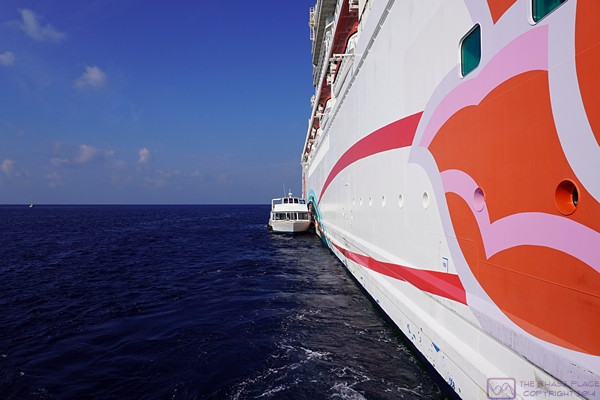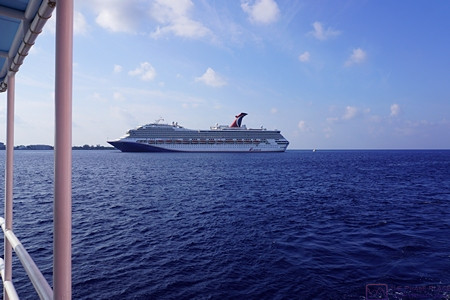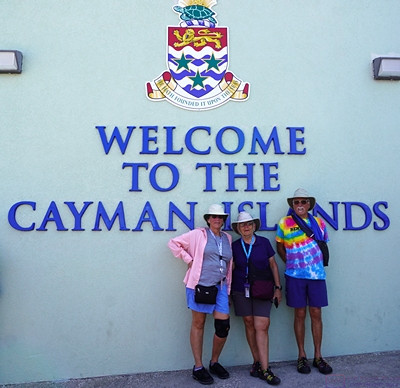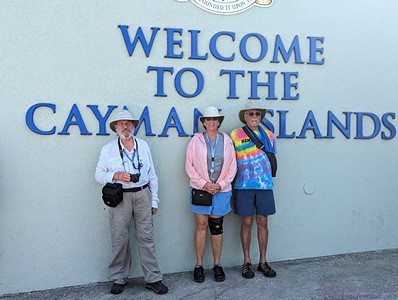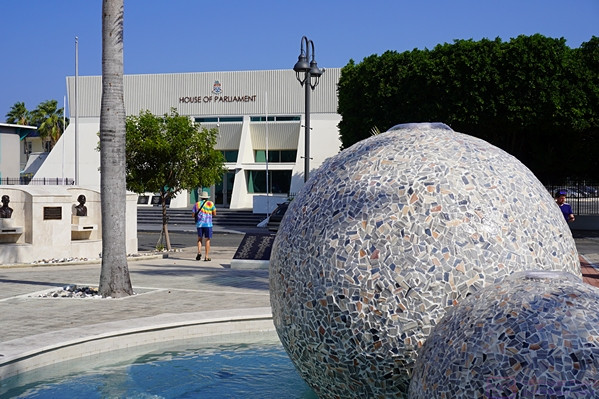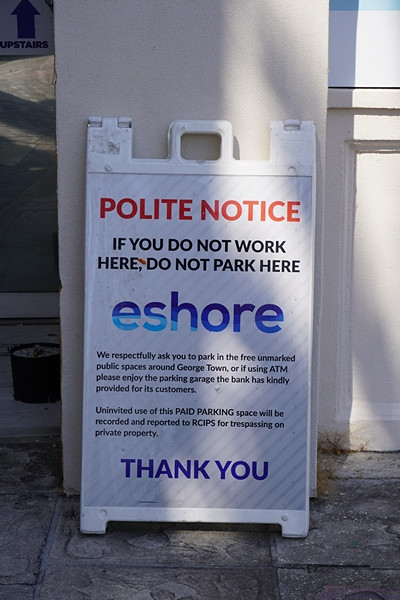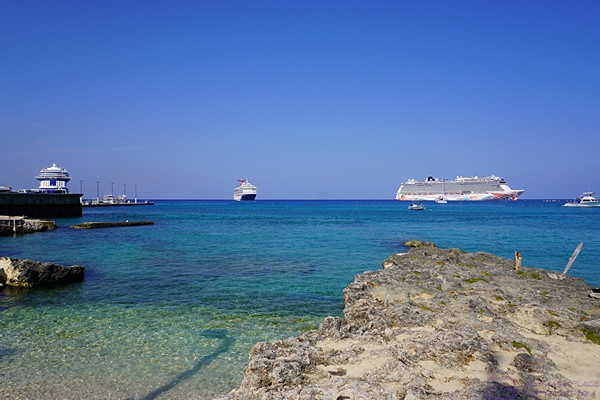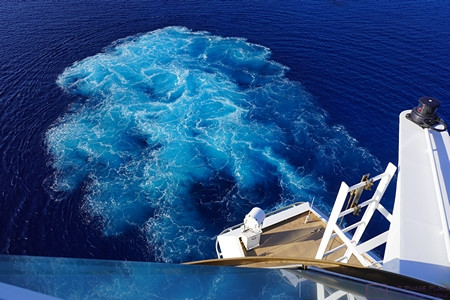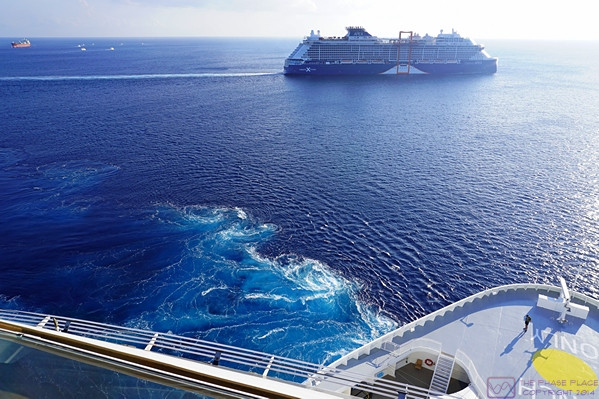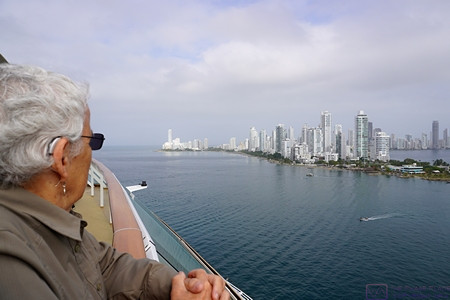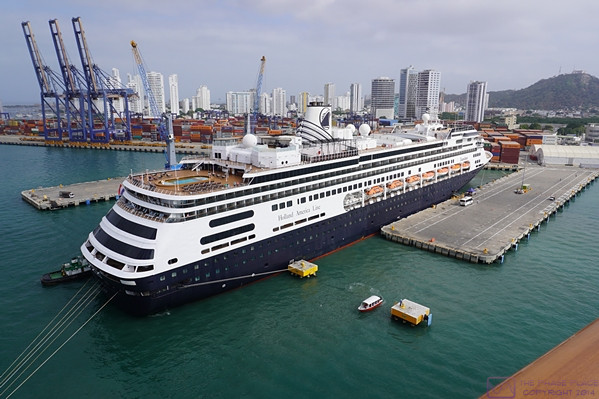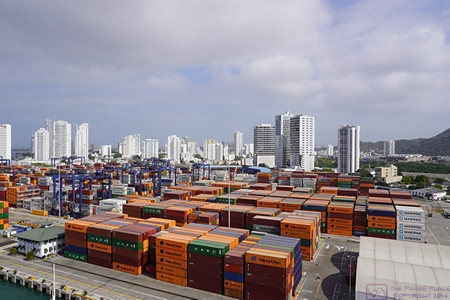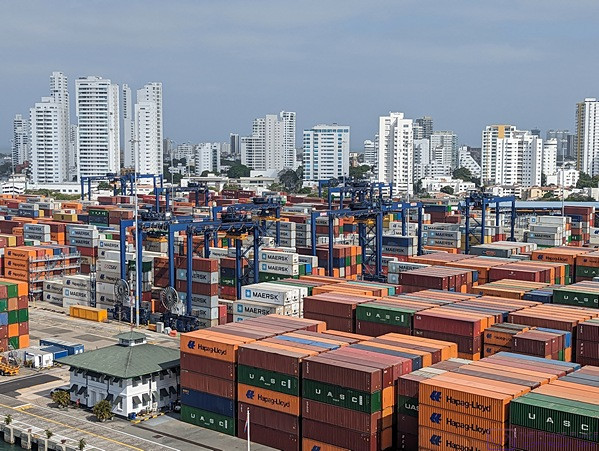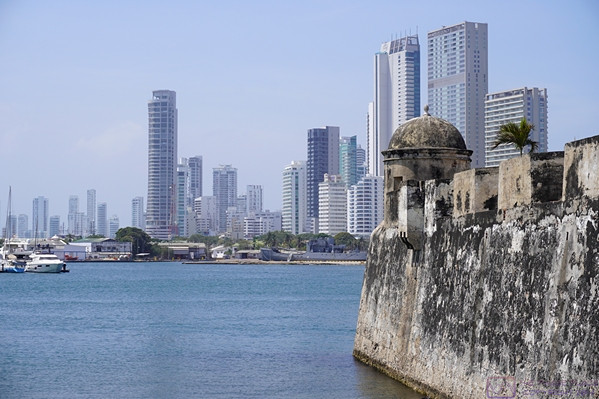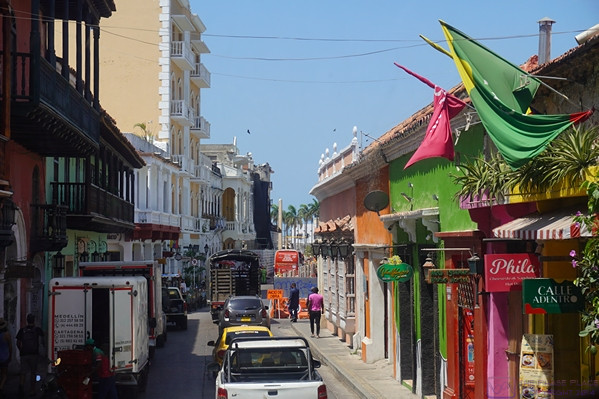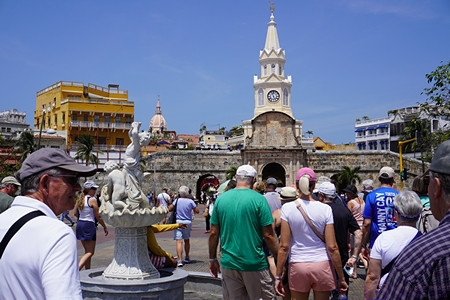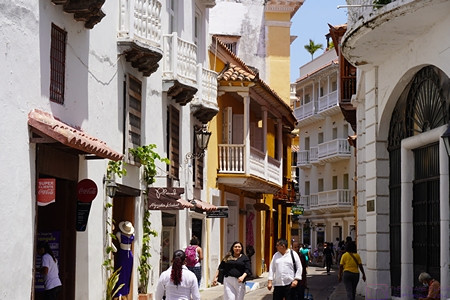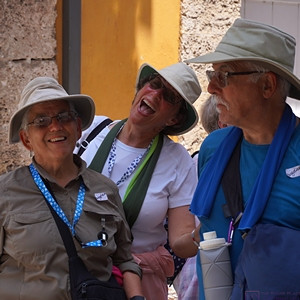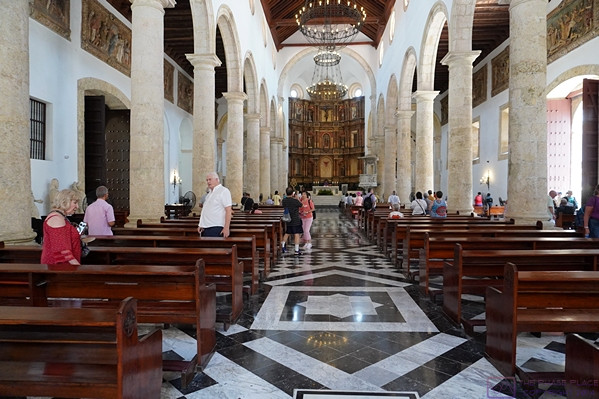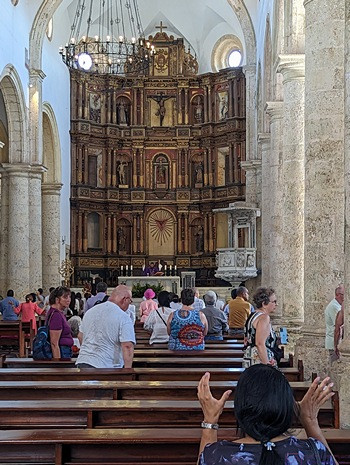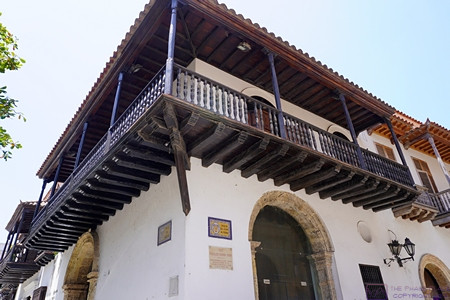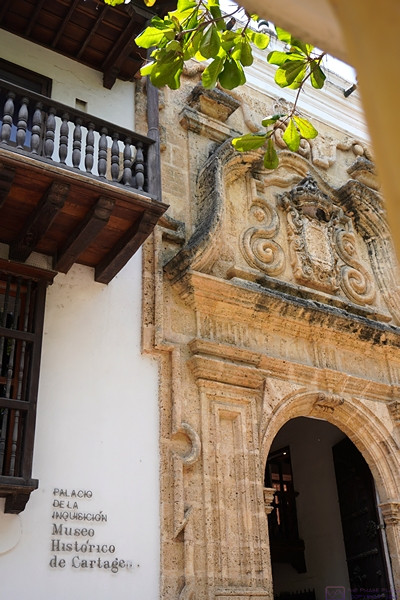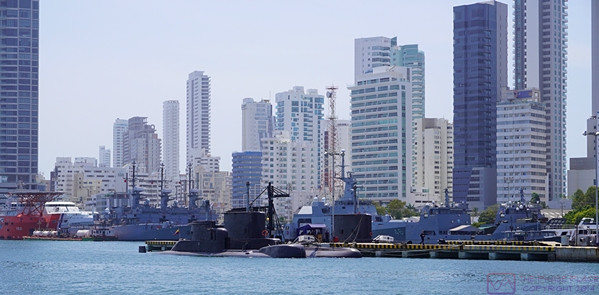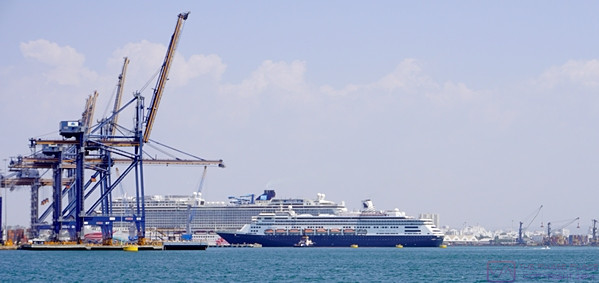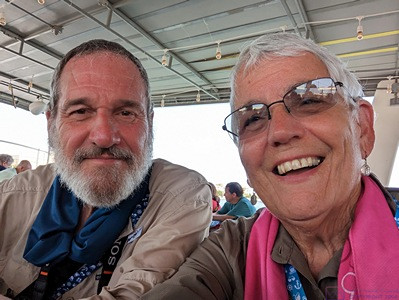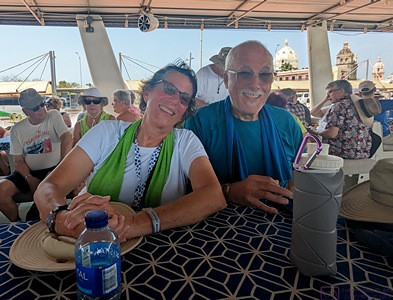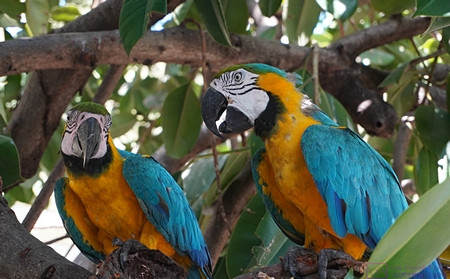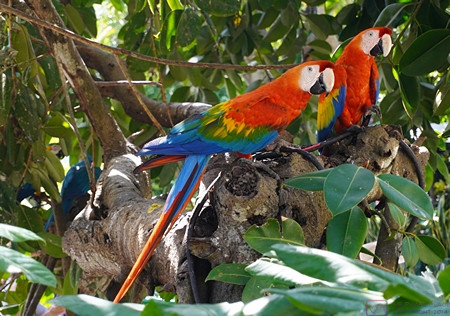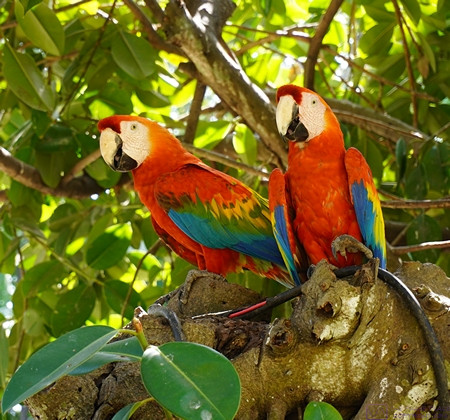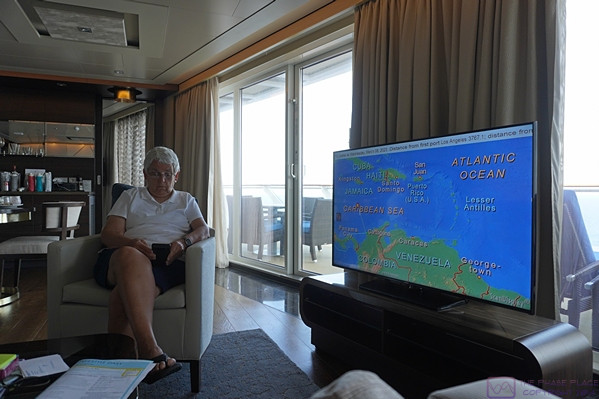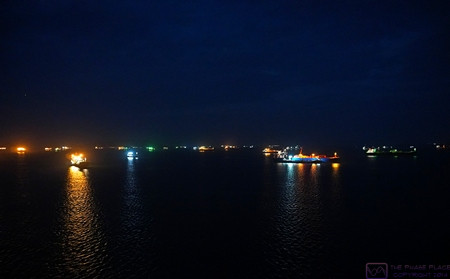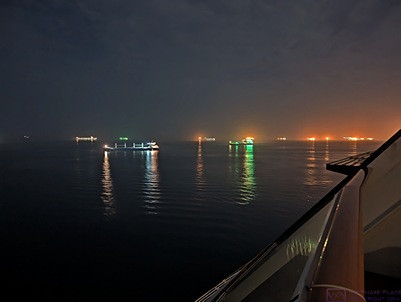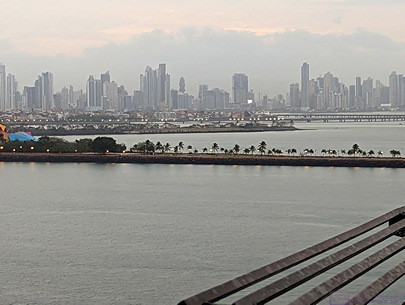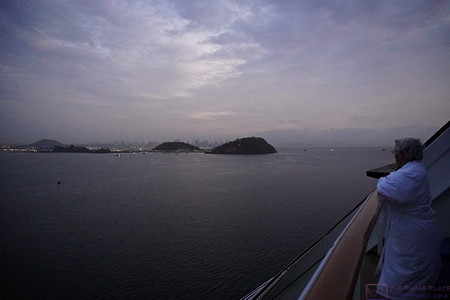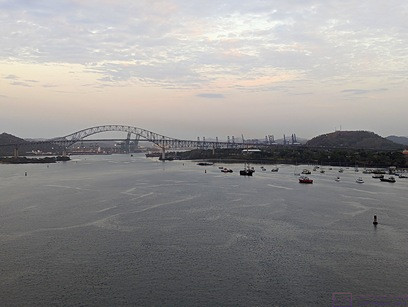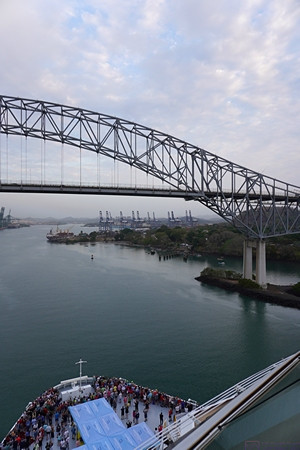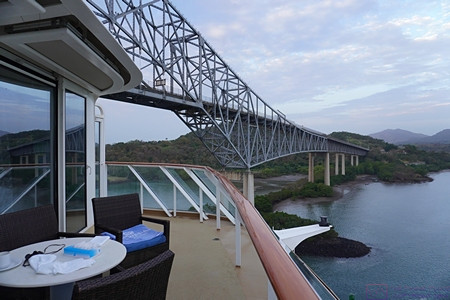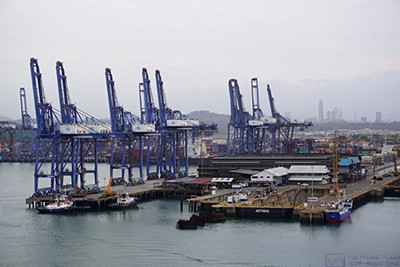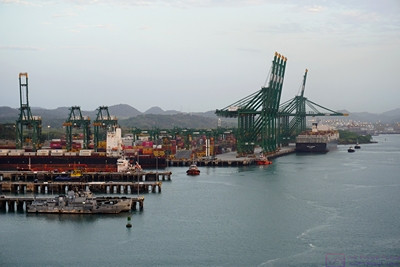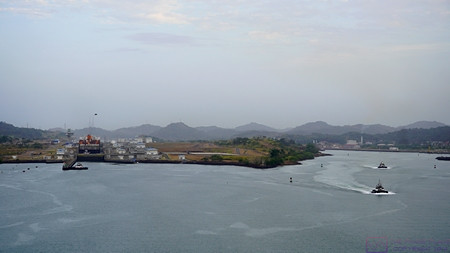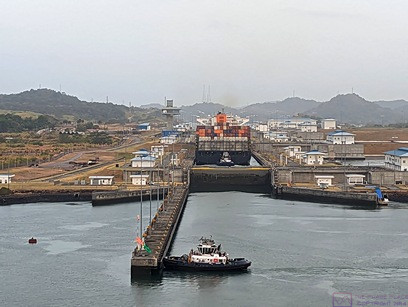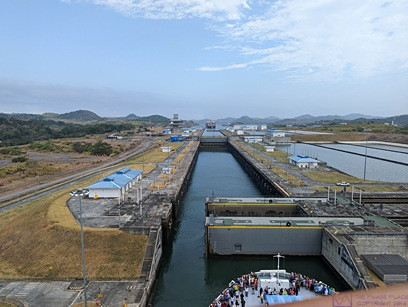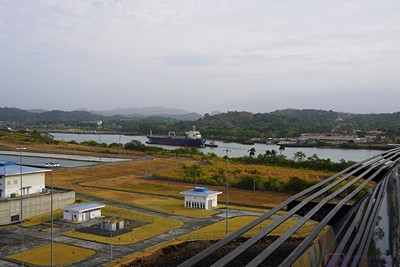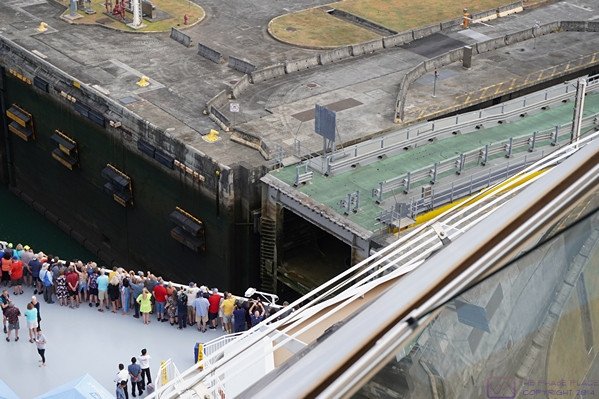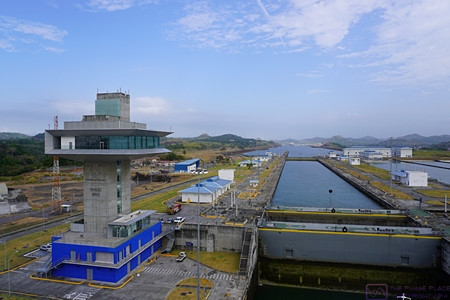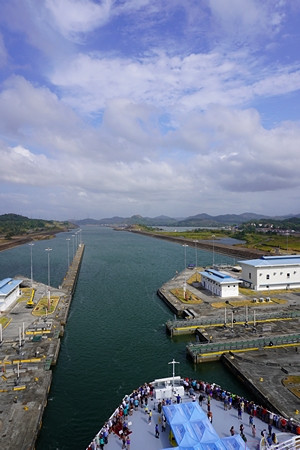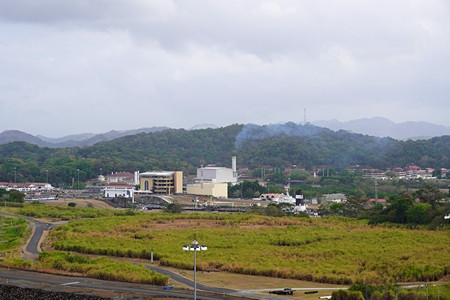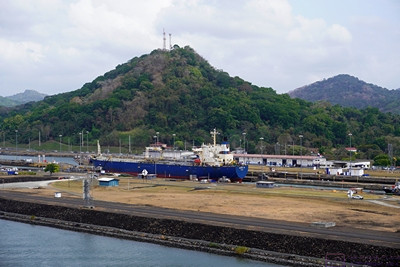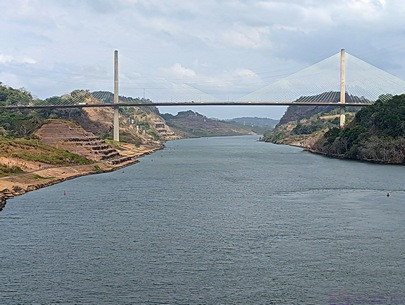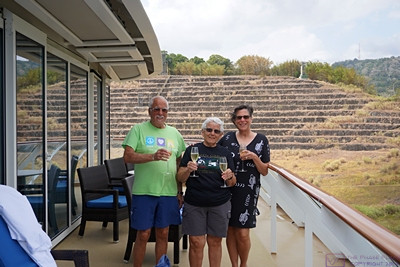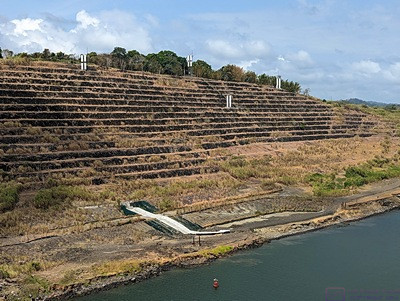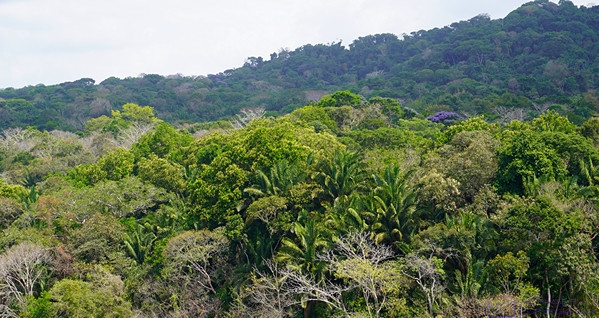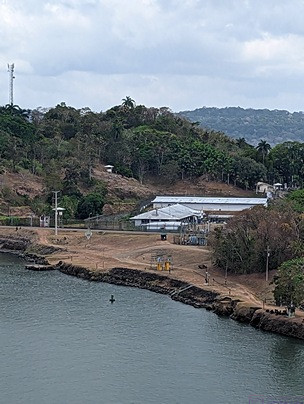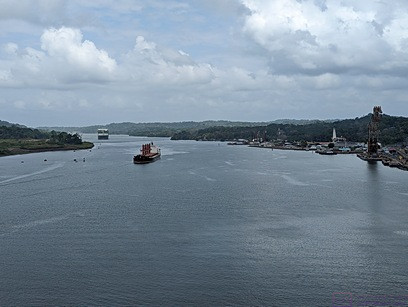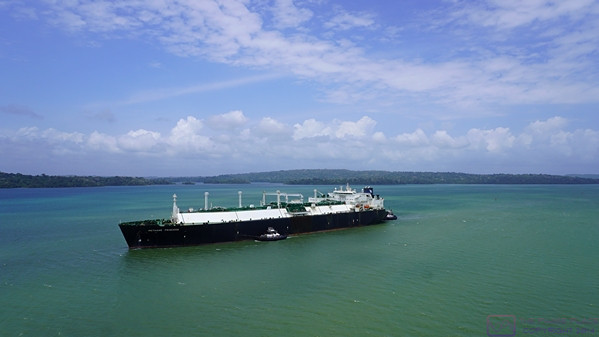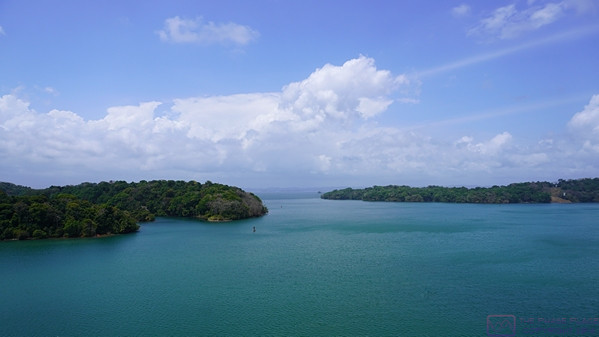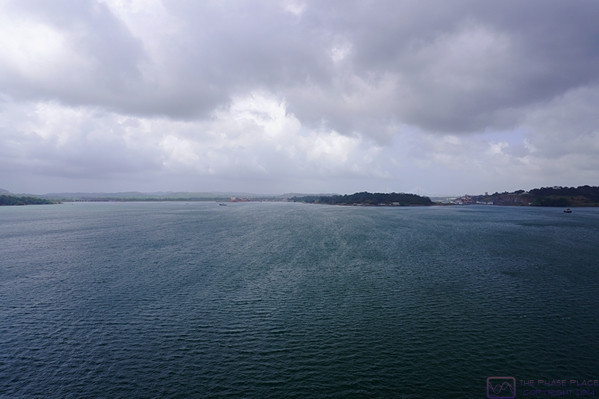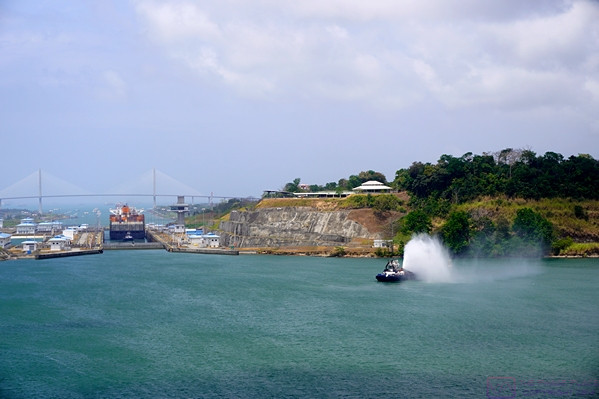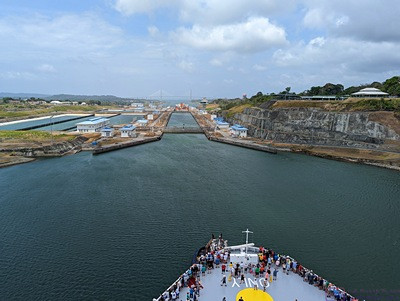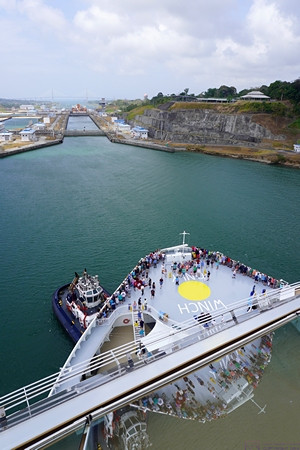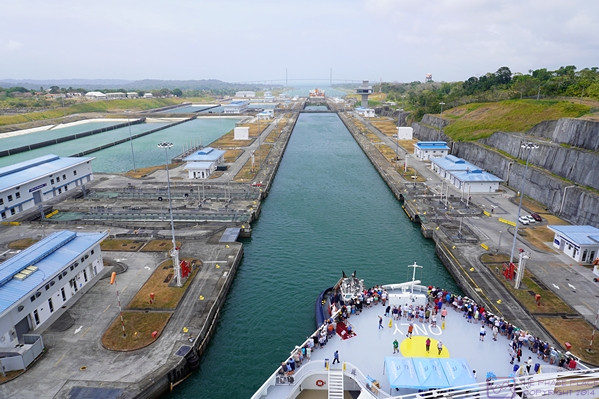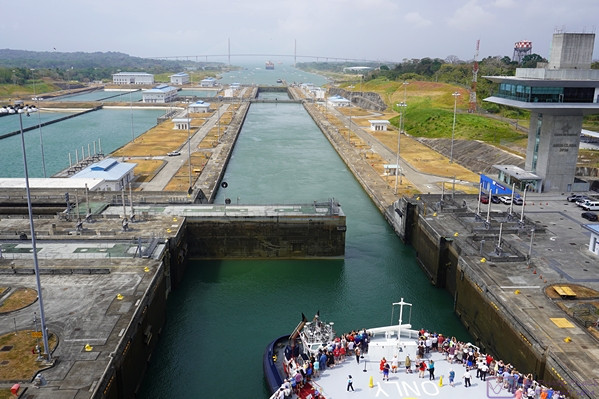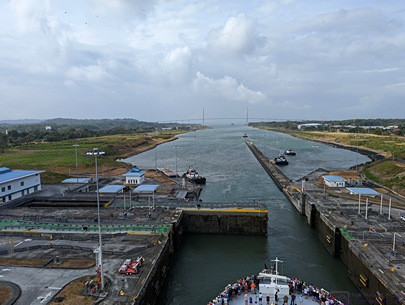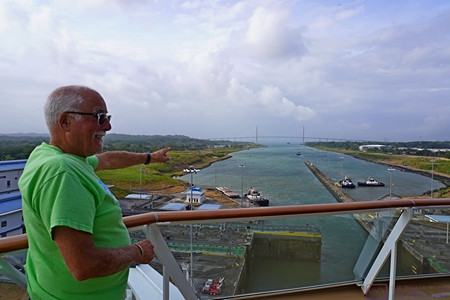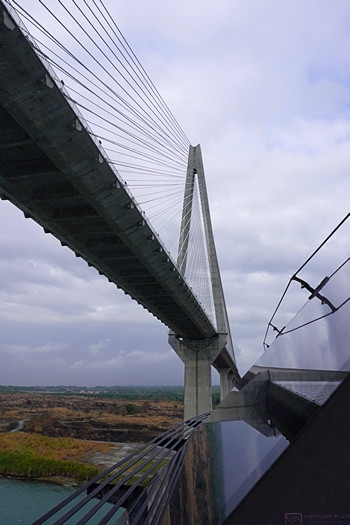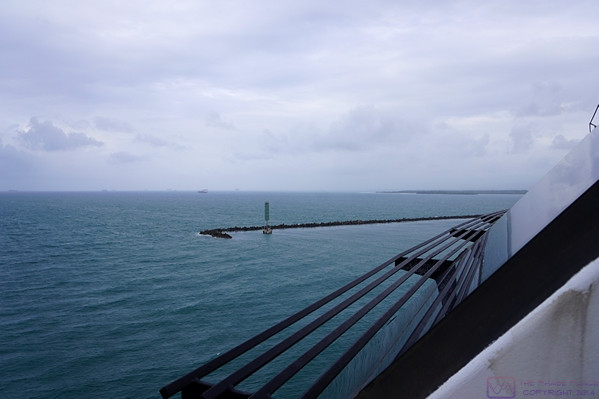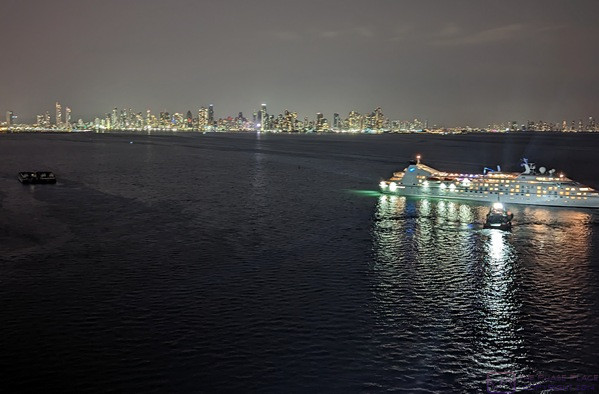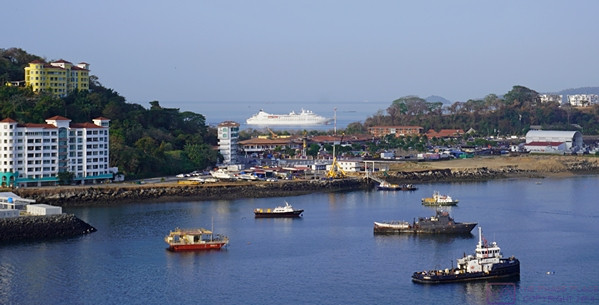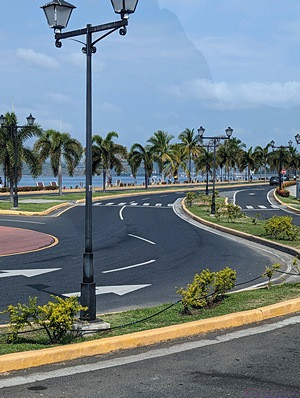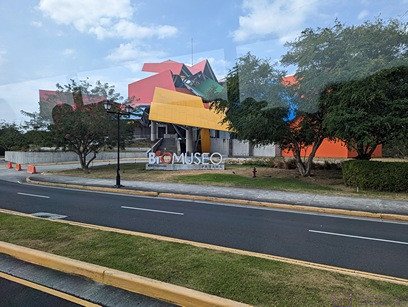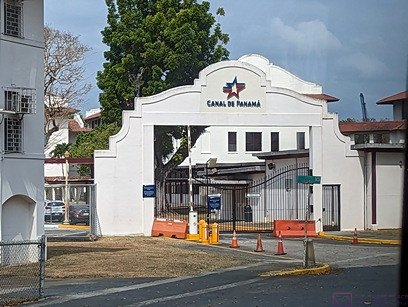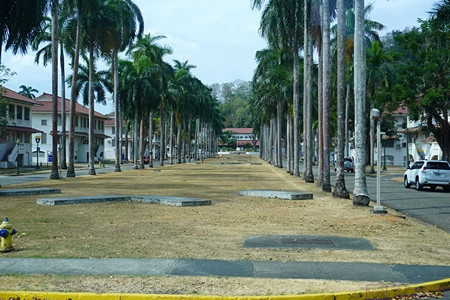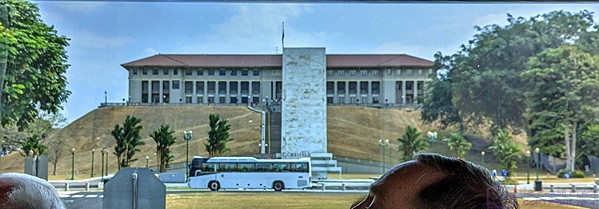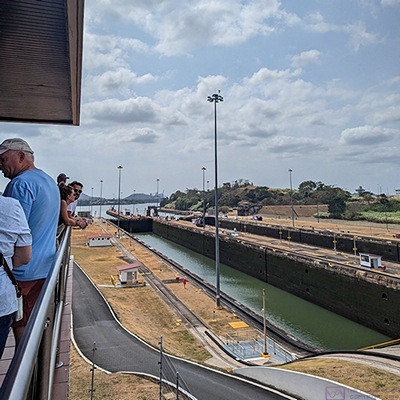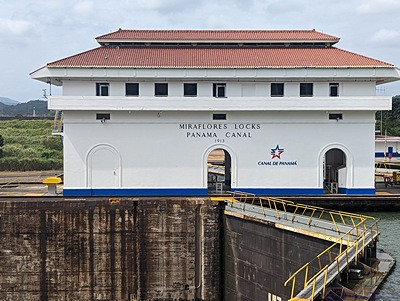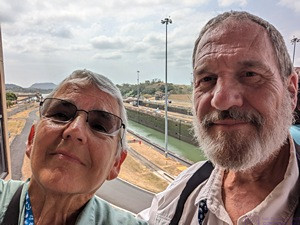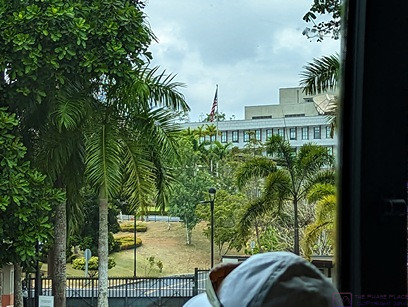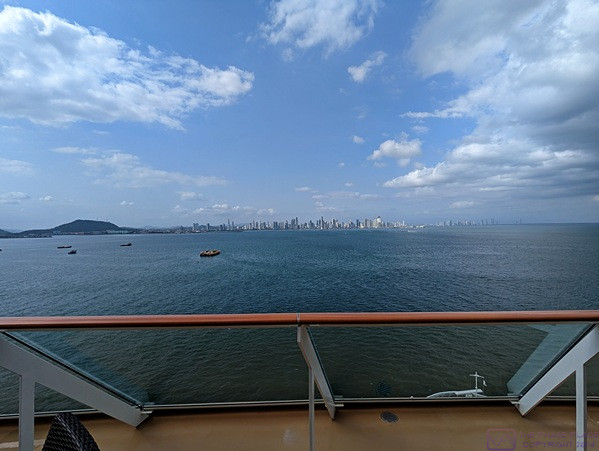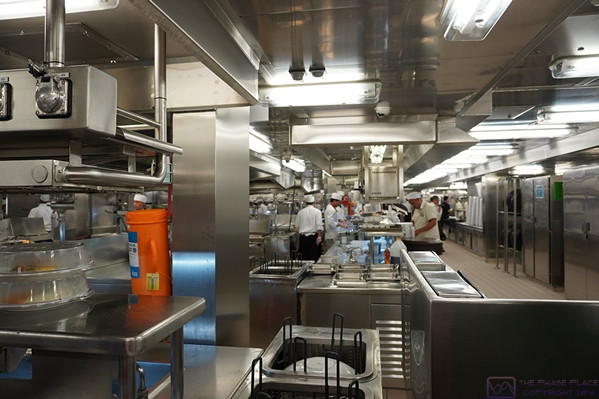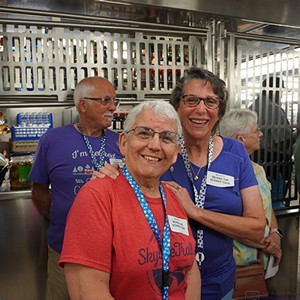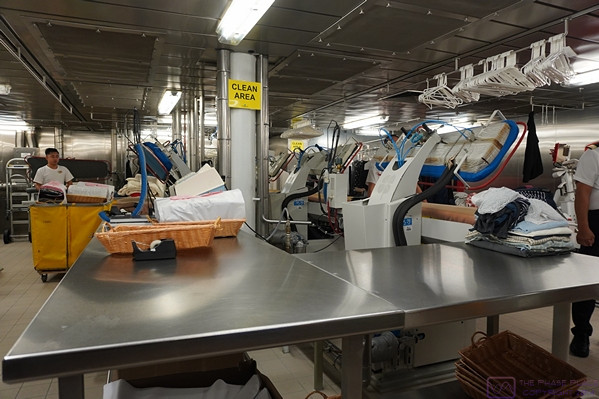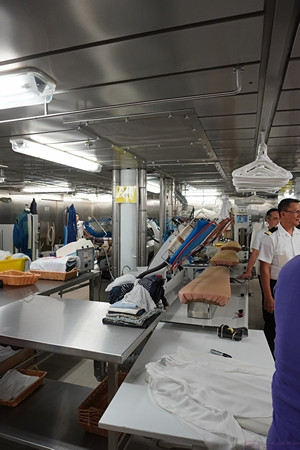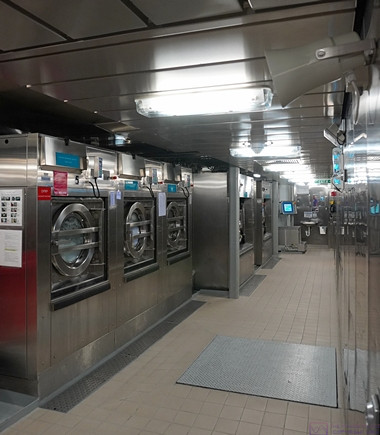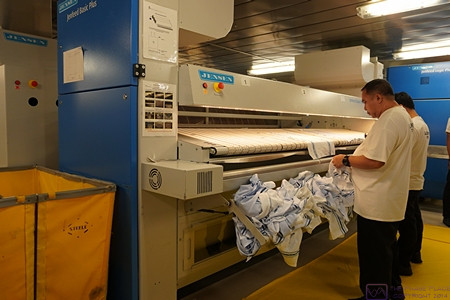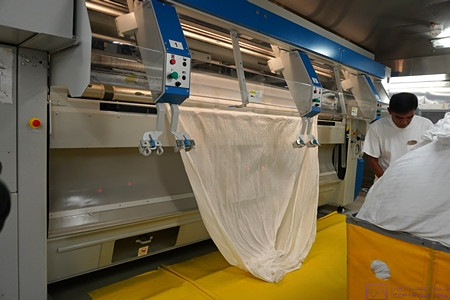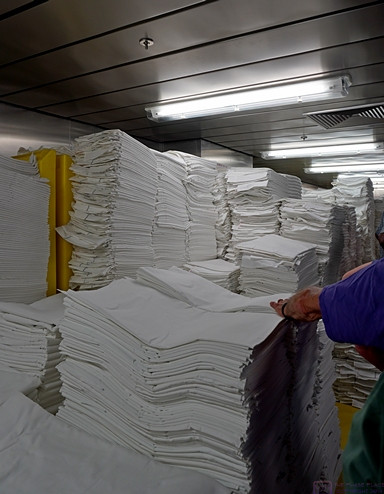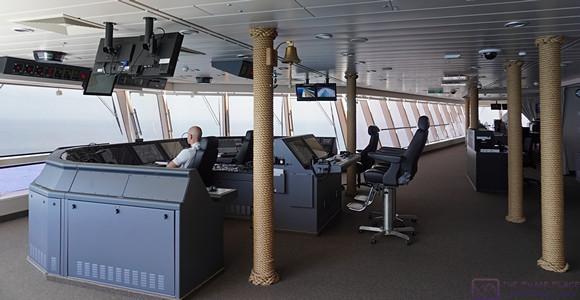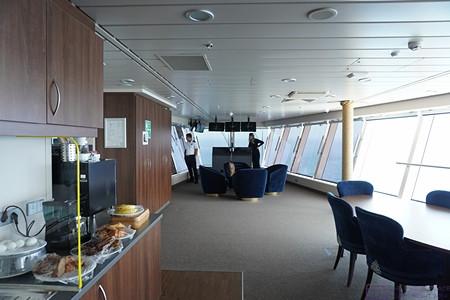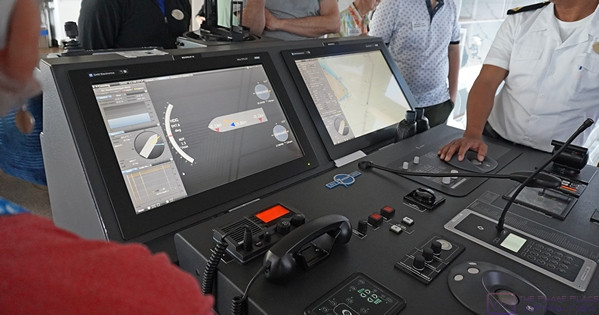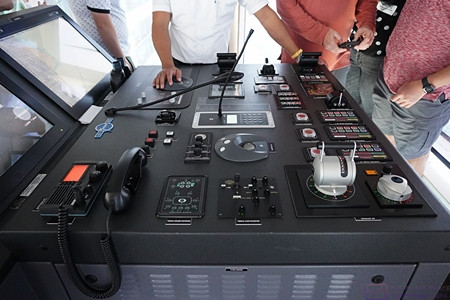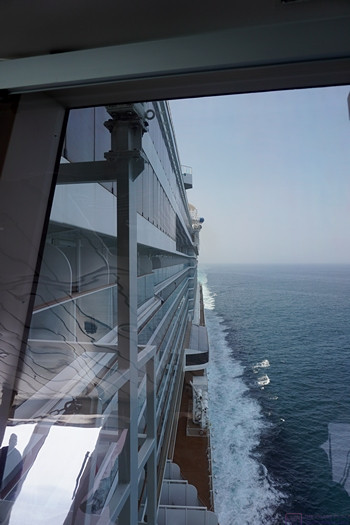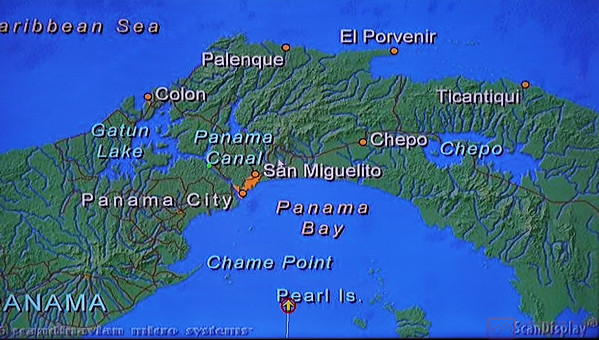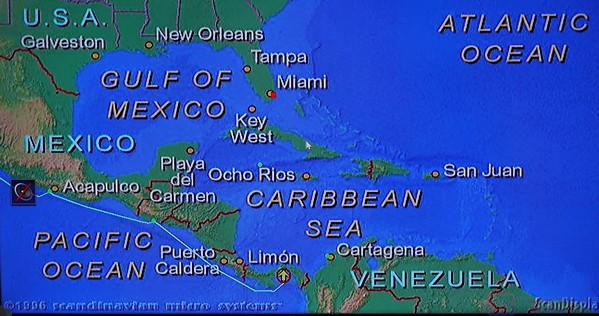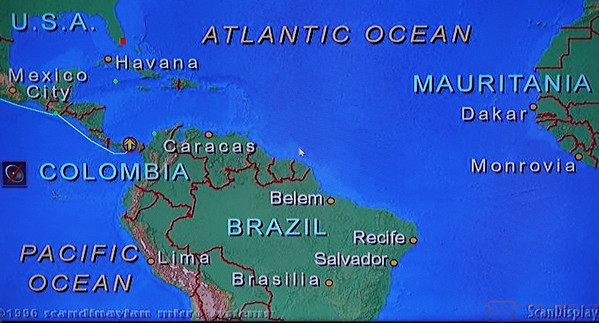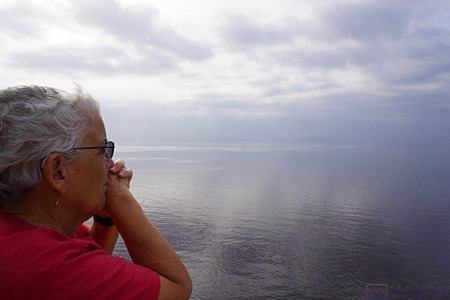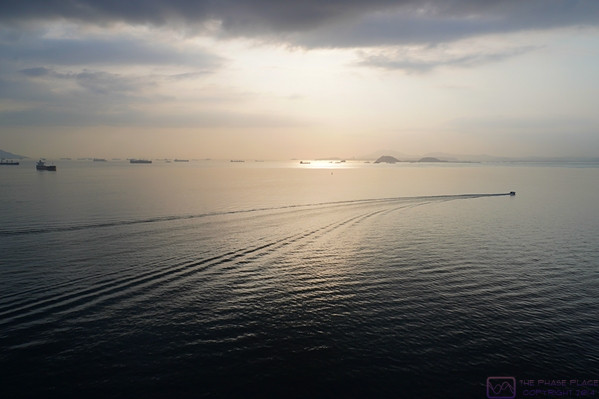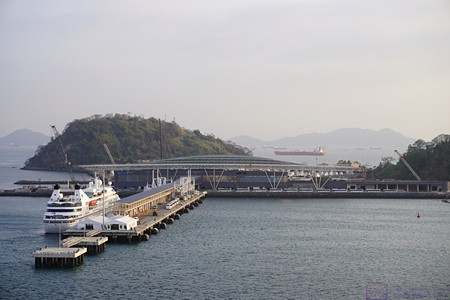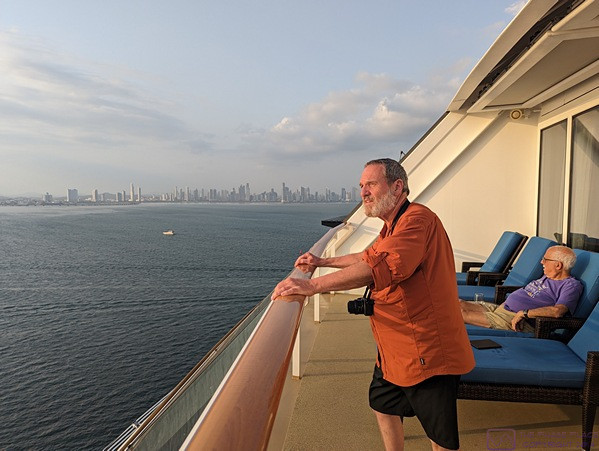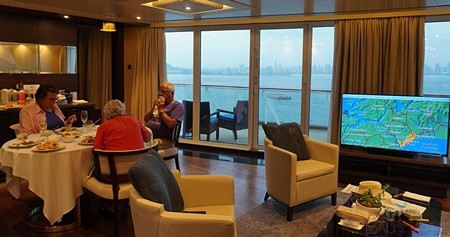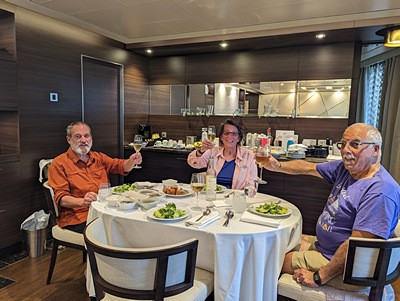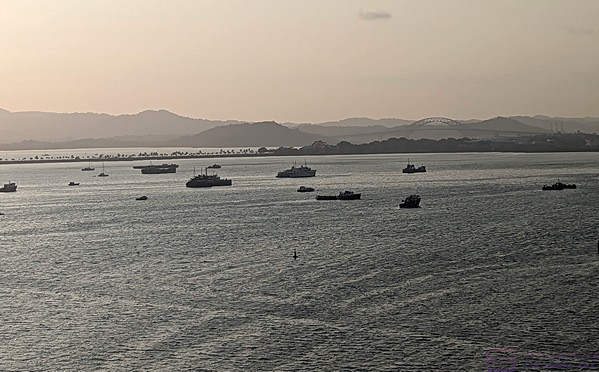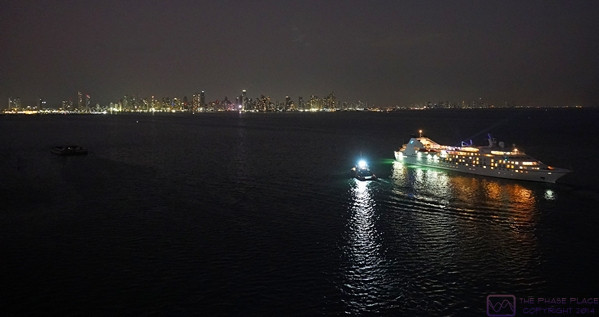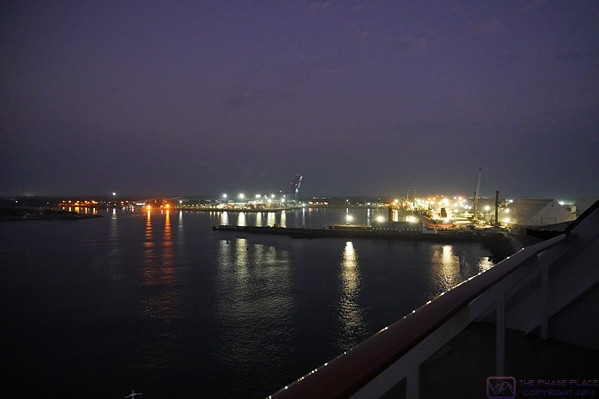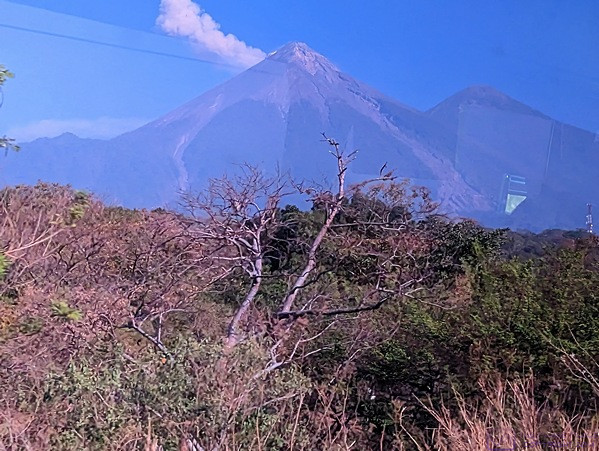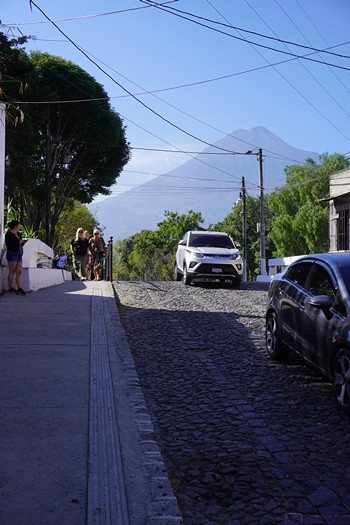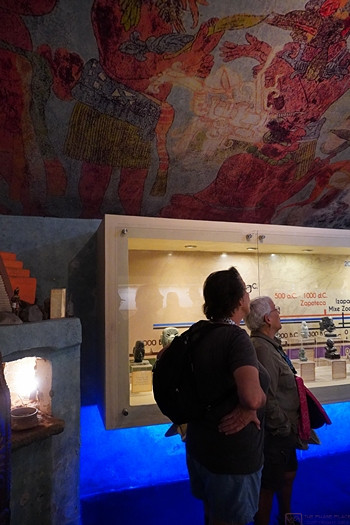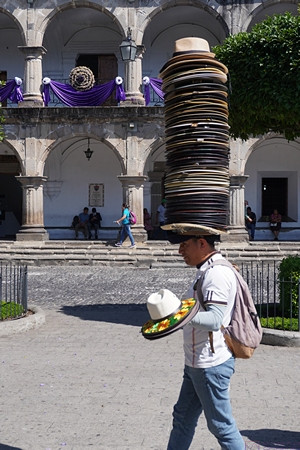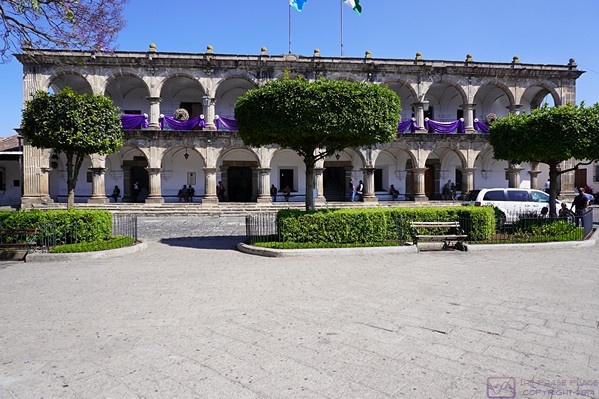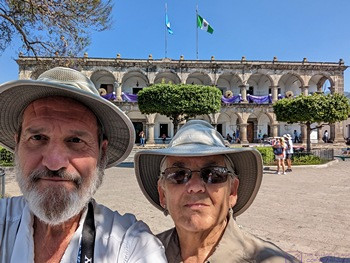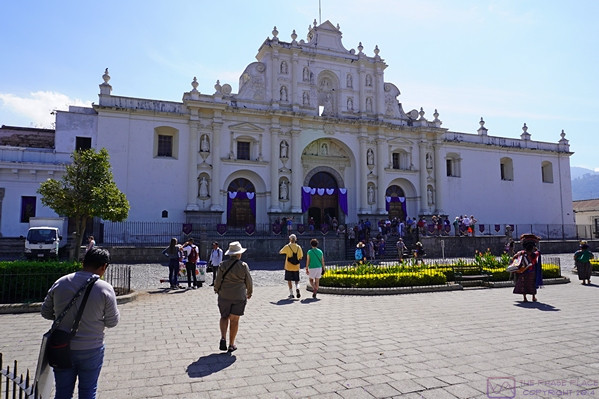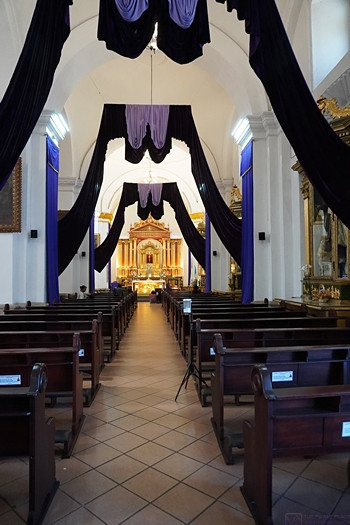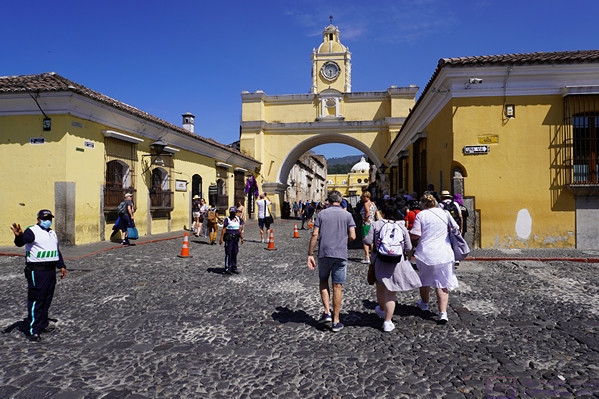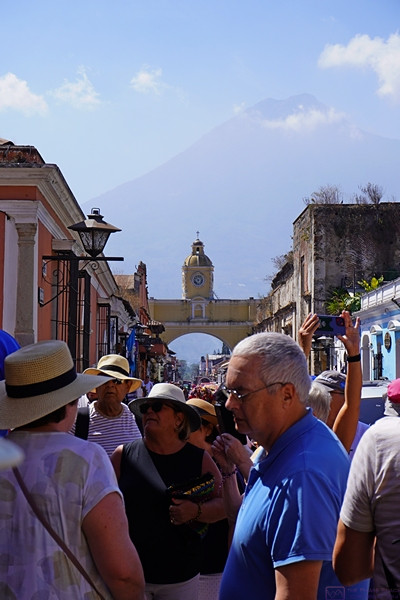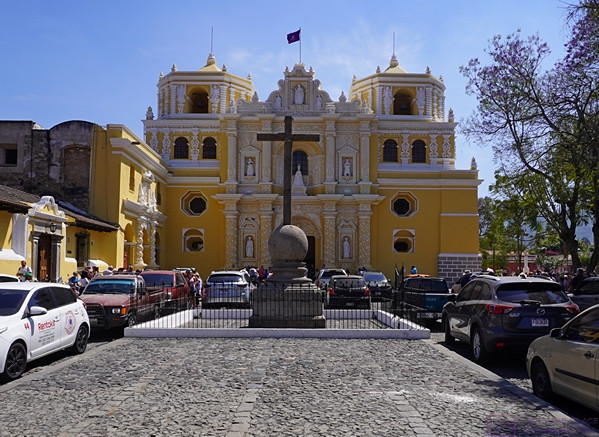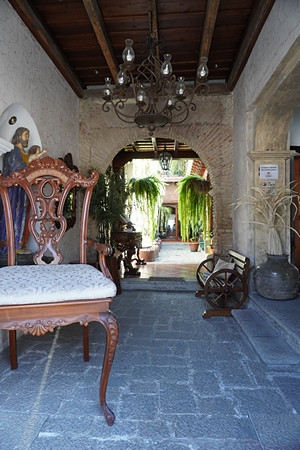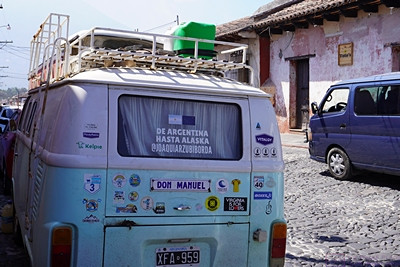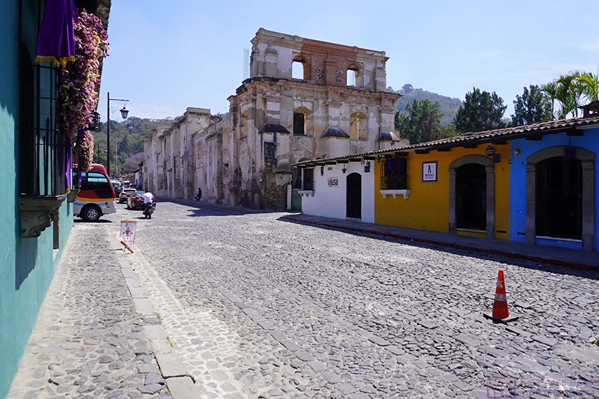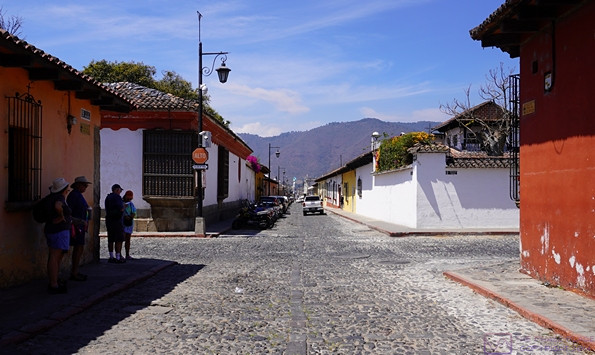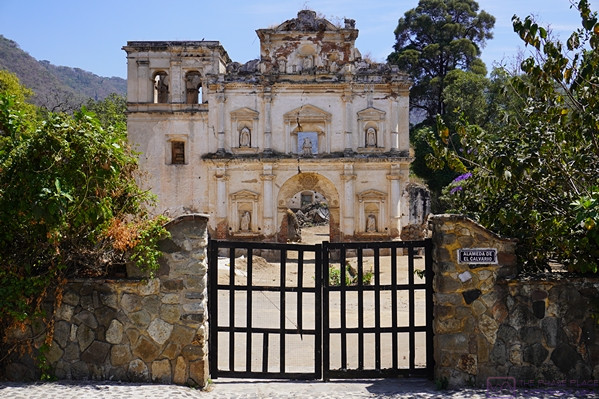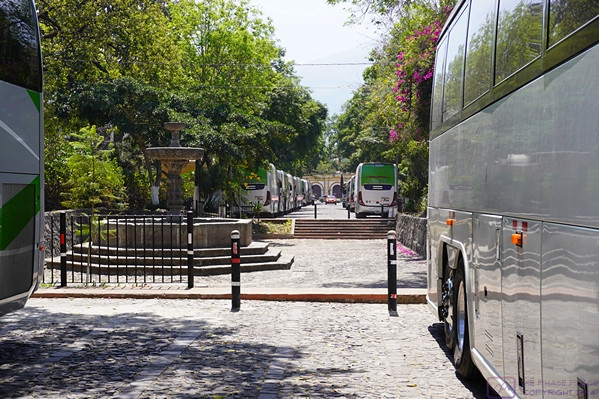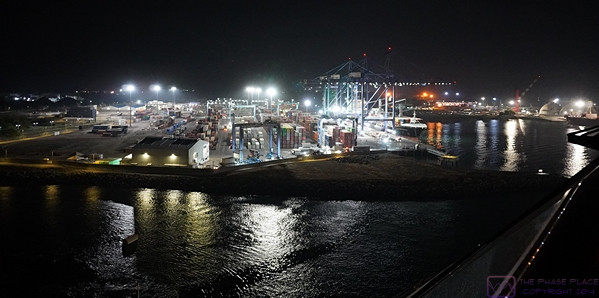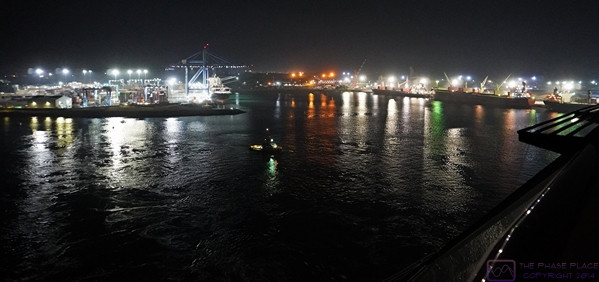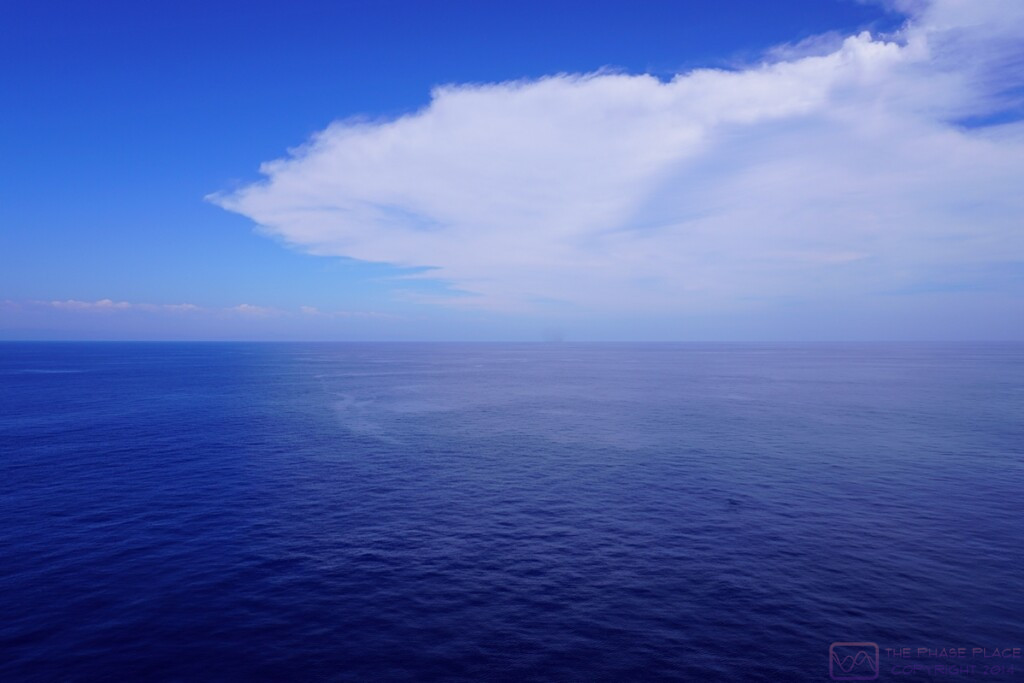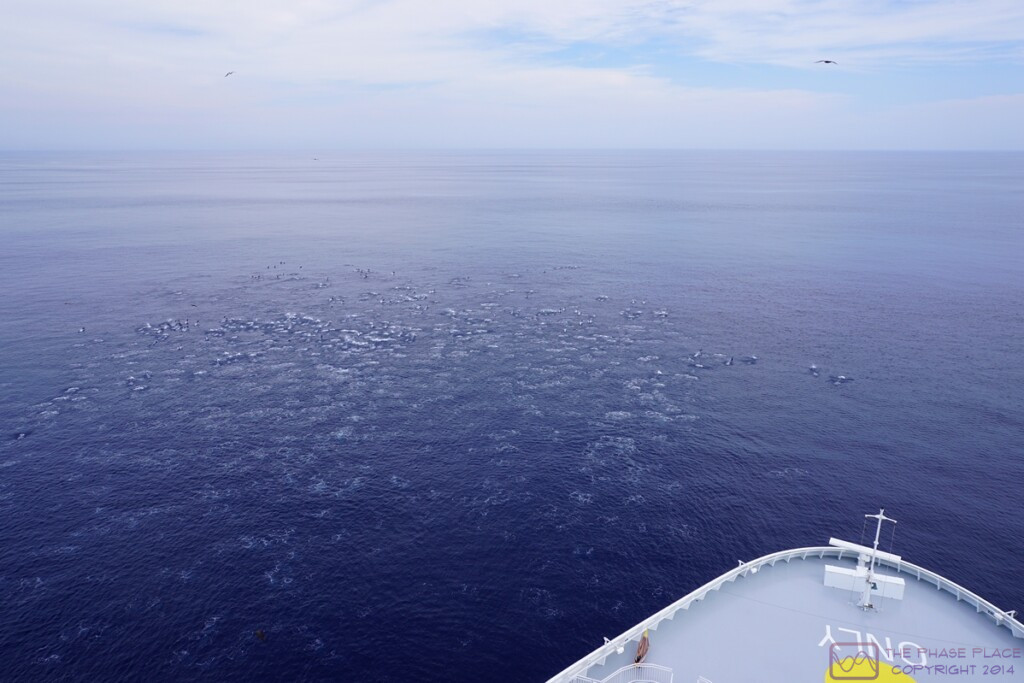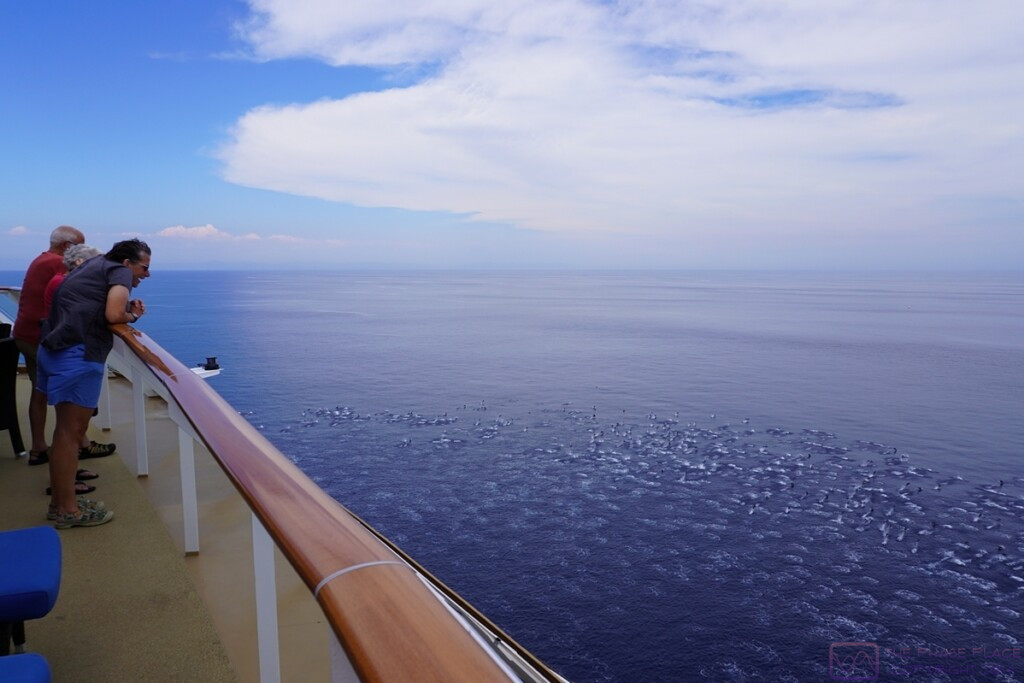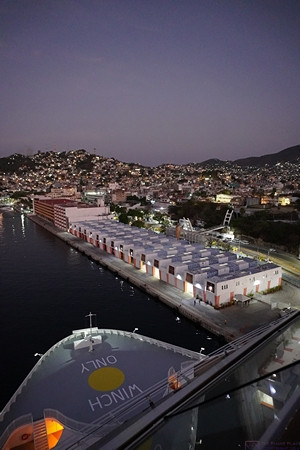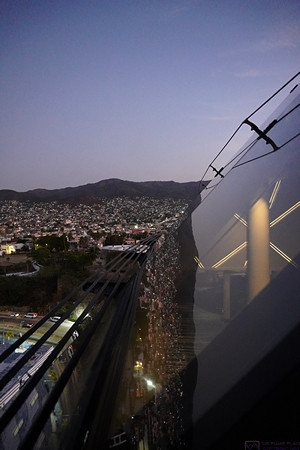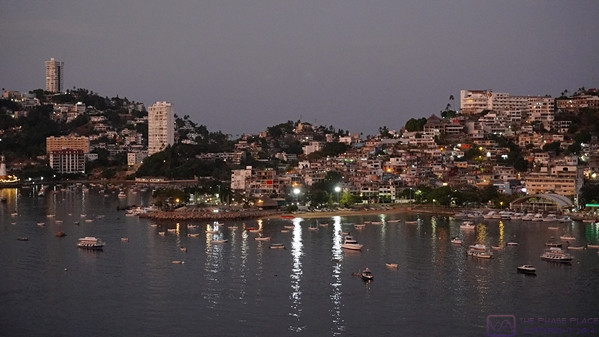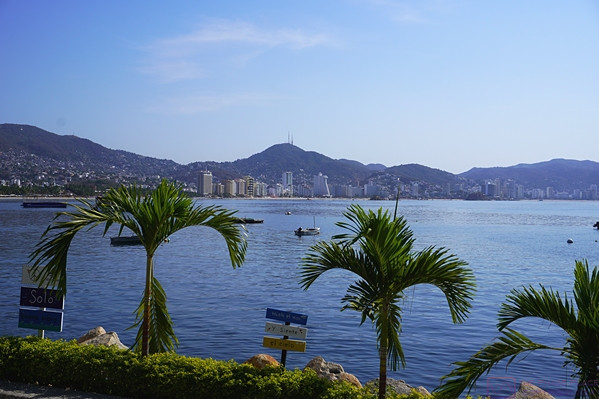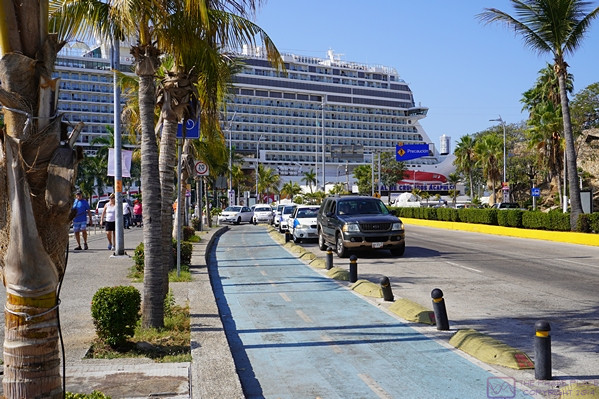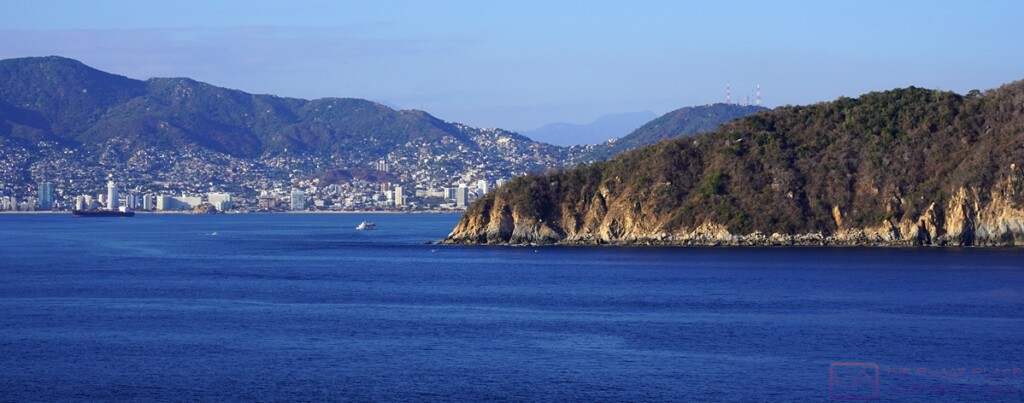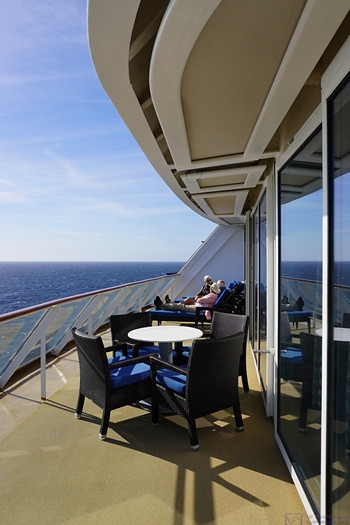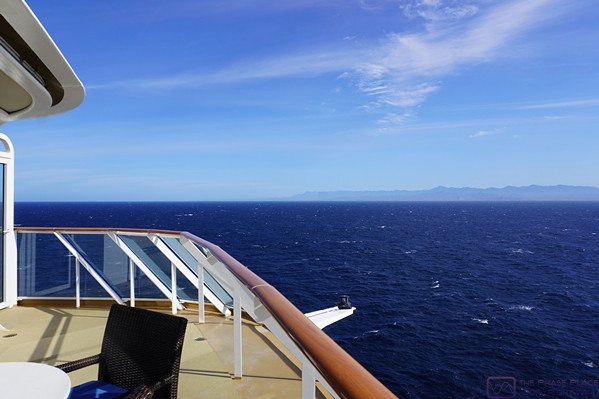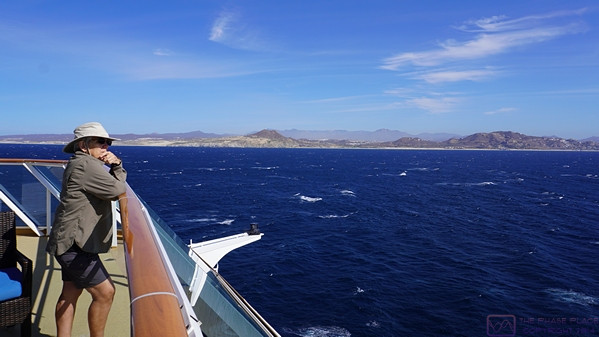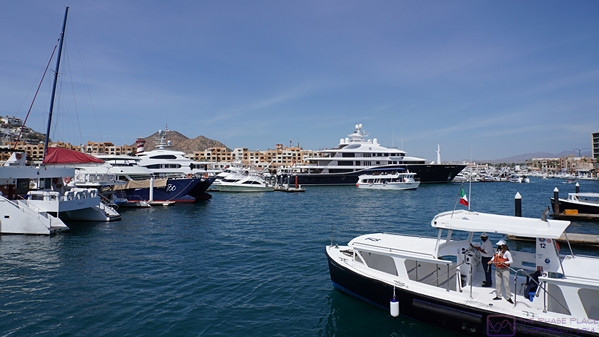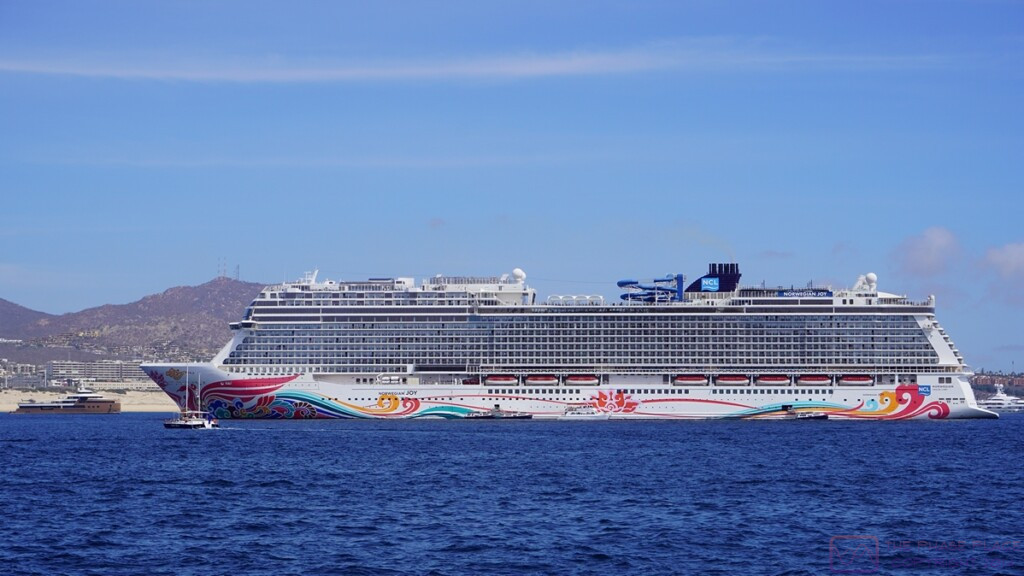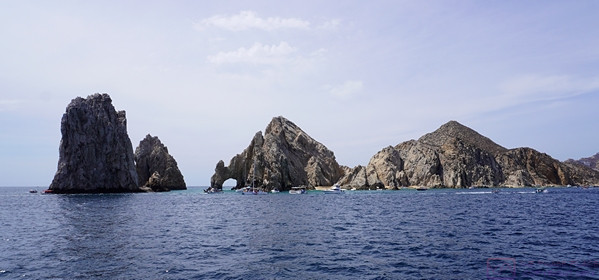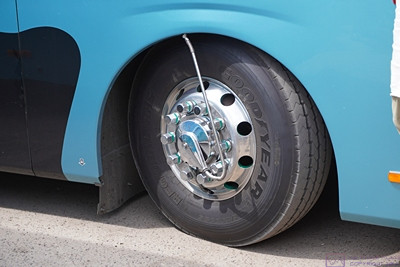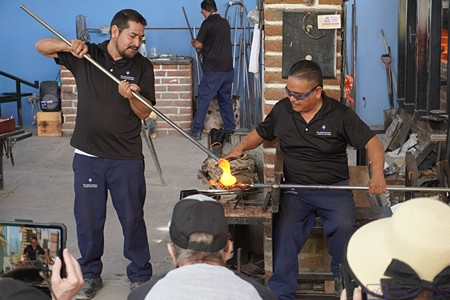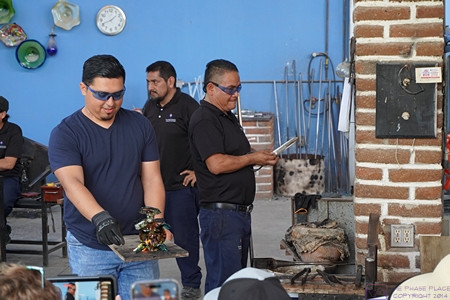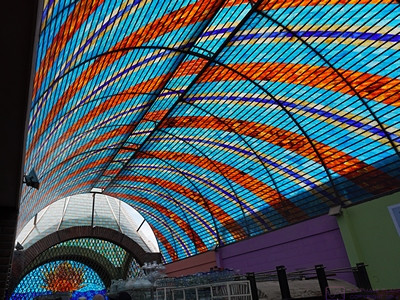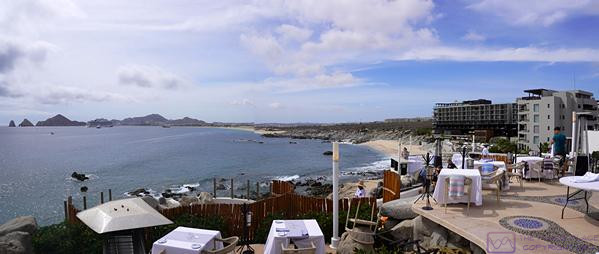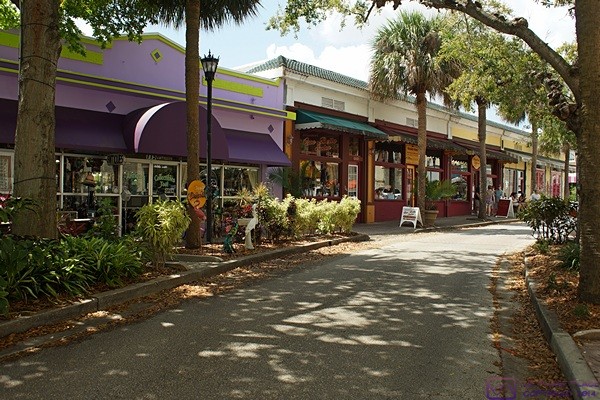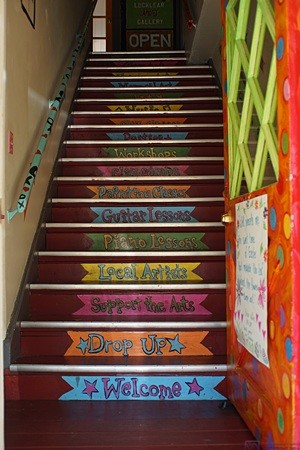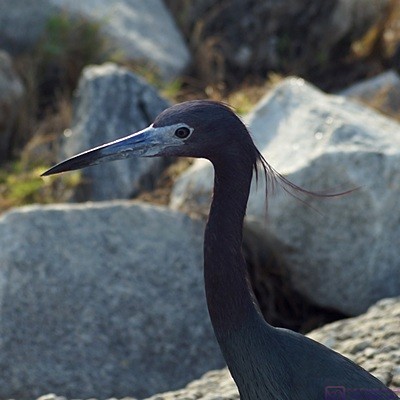2016/03/24 (R) Cocoa Beach Historic District
I got up at 8:15 AM, put on my swim trunks that I use as a pair of casual shorts, and walked over to the campground office to get a couple of cups of coffee. The coffee is not that good, but it’s hot and I don’t have to make it or clean it up. While I was there I inquired about extending our stay. Robert assisted me and found two full hookup sites in the same part of the campground where we are now that were available for three nights starting on the 29th and marked them on a campground map.
Linda was asleep when I left and still asleep when I got back so I gently woke her up to have some coffee. She was feeling a little better. Her sore throat was almost gone and she had regained a little of her hearing and speaking. We checked the long-range weather forecast and it looked like next week’s weather should be good with moderate temperatures and low probability of rain. We discussed the available sites and agreed that #358 looked like a great choice. It is directly behind the site we are currently on (#352) and is large with good access. It also faces northeast which is a plus. We will have to remove the windshield covers in order to move the coach and the northeast orientation means we will not have to put them back on while we are here.
I walked back to the campground office and reserved site #358 for March 29, 30, and 31, with departure on April 1 by noon. All things being equal (which they never are) we would rather not be driving on April 1st as there is, apparently, a mass exodus of snowbirds from Florida on that date and the northbound highways are bumper-to-bumper and very slow. I can check with the office each day to see if there have been cancelations that would allow us to stay longer on one site. We also discussed making a reservation for a few nights back at Williston Crossings and cooling our heels there before heading north.
I texted Vickie to let her know about our modified plan. She and Pat were headed to the beach for a walk and Linda decided she wanted to go along. While we waited for them I texted our children to let them know we had extended out stay at Jetty Park and that their mom was doing better. Oops; apparently no one ever told them Linda was sick and my text message prompted a quick phone call from our daughter.
We walked along the ocean towards Cocoa Beach for 1.5 to 2 miles. (We had three pedometers between us but each one recorded a different distance.) Pat and I headed back while Linda and Vickie went a little farther before turning back. The girls walk faster than we do and wanted to give us a head start. They caught up with us just as we reached the boardwalk back into Jetty Park.
We were back at our coach at 11:45 AM and agreed to get back together mid-afternoon and drive to Cocoa Beach to see the Historic District. None of us had eaten breakfast and Linda clearly needed a nap before doing anything else today. I made a sandwich with mock deli slices, Daiya non-dairy cheese, raw onions, lettuce, and mustard and cut it in half for us to share. I had a few pretzels with hummus and washed off the rest of the grapes and set them out.
I noticed yesterday that I had a critical update for Windows 10 but when I checked today it was no longer there. My presumption is that it got downloaded and installed. Linda had the same update still pending, along with the Visual C++ update that keeps trying to install but apparently does not do so correctly.
There was a magnificent full moon rising last night but we did not notice it until it was well above the horizon. I tried to take a few pictures from in front of our coach but I spent most of the time messing with the camera’s controls and settings. I suspected that I failed to capture the beauty of the moment and after I copied them to my computer to examine them my suspicion was confirmed.
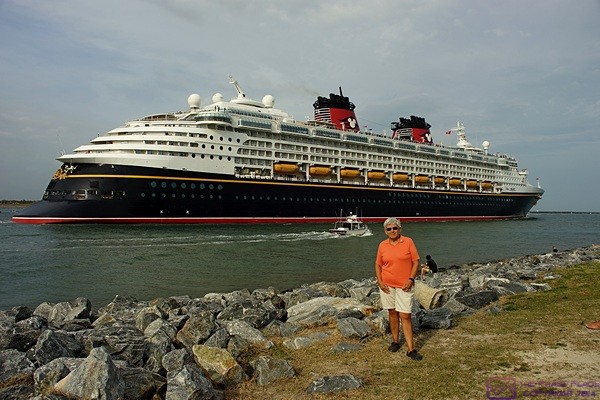
Linda takes a minute to pose while watching one of the Disney cruise ships (Magic?) leave Port Canaveral and head out of the channel into the Atlantic Ocean.
We both took naps but by 4 PM had not heard from Pat and Vickie. I called Vickie but got Pat. Vickie had a sore neck and they had decided not to venture back out today. Linda’s sore throat has largely abated, and her voice has improved a little, but her hearing is still very impaired. This afternoon she got very concerned about it and had me try to contact a local ENT. The office was closed until Monday morning and the call was routed to an answering service. The answering service gave me the number for another ENT in Titusville. I called them and got their answering service. They took my name, number, and some information and said the office would call me at 8 AM when they opened.
The weather forecast from 5 PM on was for an increasing probability of thunderstorms headed towards 100% by 11 PM. The weather was moving from southwest to northeast along a front that appeared to be drifting slowly from west to east. As a result air temperatures were hanging in the 70’s and the humidity was very high. Rather than sit around the coach we decided to drive down N. Atlantic Ave. (FL-A1A) to/through Cocoa Beach just to have a look. First, however, we closed up the coach and turned on the air-conditioners.
We had a nice, leisurely drive south through Cape Canaveral and then Cocoa Beach; first through the main business section and then through a more residential part. In spite of the high-rise residential and resort buildings that dominate the ocean shore along the eastern edge of the Cape, the main avenue still has some of the look and feel of “old” Cocoa Beach, with the Ron Jon Surf Shop as a centerpiece. Many of the beach houses are charming without being massive and lavish, like the ones we saw on Captiva Island on the Gulf Coast.
By the time I turned around to head back dark storm clouds had moved in and it had started raining intermittently. We stopped at the CVS Pharmacy to see if they had an OTC medication that might help Linda’s right ear. The pharmacist said the only thing he had was a pill that would promote drainage which might help remove infection and pressure but was certainly not a substitute for a prescription medication. We bought a pack as it seemed like a better option than doing nothing.
We got back into the northbound flow of traffic, which was bumper-to-bumper and slow because the right hand lane was closed for construction. Heavy rain had moved in, with reduced visibility and minor road flooding, which did not improve the traffic situation. We weren’t in a rush, and it would not have mattered if we were, so we just took our place in the parade until I got to a traffic signal where I turned left and went into the Publix parking lot. Linda stayed in the car while I went in to buy a few grocery items. It was raining lightly when I came out of the supermarket. I loaded the grocery bags in the back of the car and returned the cart to the front of the store. In that short time torrential rains fell and I had to wait for it to abate before I could return to our car. (In spite of the forecast we left the coach without our raincoats or umbrellas.)
Back at our coach we got the groceries inside and put away. Linda felt like fixing dinner so she heated the vegan Italian sausage with sautéed onions and peppers and served it next to an arugula salad. I cut up some of the strawberries we just bought and served those for dessert.
Our usual Thursday evening CBS TV programs were preempted by the NCAA basketball tournament but I found an interesting series of talks about “American Generations” on PBS. The three hours covered, in order, Boomers (us), Gen-X (both of our children), and Millennials (both of our grand-daughters). The basic point of the lectures was an updated and expanded version of the central concept of a presentation by a sociologist that I saw in the late 1970’s titled “What you are is where you were when…”
Our TV viewing was occasionally interrupted by severe weather alerts and a tornado warning, although the warning was not for our specific location. We spent some time with our iPads trying to understand the implications for us and our rig and decided we were not in any imminent danger. Lightning activity increased around 11 PM accompanied by some thunder and then rain. The rain and lightning intensified as midnight approached and the leak around the bedroom vent fan reappeared but did reach severe levels and the winds were not an issue. At midnight the channel 9.3 radar showed one cluster of storms pushing out to sea by us but another fast moving line sweeping across the Gulf of Mexico and stretching across Florida from north of Jacksonville to north of Tampa and moving our way. It was all too obvious by this point that we had miscalculated the intensity and duration of the storm when deciding to leave our awnings out. I finally tried to go to sleep not knowing if they would be OK in the morning. The ENT office was supposed to call at 8 AM and we wanted to be up, dressed, and ready to go in case they could see Linda right away.
2016/03/25 (F) Orlando ENT Visit
With the thunderstorms last night I did not get a good night’s sleep. The cats were nervous and wanted my attention but would not settle down and sleep. When Juniper did finally settle down she curled up on my pillow. The roof vent/fan in the bedroom leaked on the foot of the bed so I had to deal with that. I was also concerned about the two awnings we left out. And last, but not least, I was concerned about Linda’s hearing loss. Nonetheless, I was up at 7:30 AM and got dressed. Linda was up shortly after me and got dressed. She also did not sleep well for most of the same reasons. We each had a quick bite for breakfast in case we had to leave on short notice.
I had not heard from Dr. Patel’s office in Titusville by 8:10 so I called them. They were the backup for Dr. Widick’s office in Cocoa Beach which was closed until Monday morning. Dr. Patel was not available today and would not be until Monday. Some backup. The receptionist was not able to refer us anywhere else. Linda’s initial annoyance at not being able to hear had become a serious concern and melted briefly into a panic. We both got online and started searching for ENTs in the Orlando area.
There were several dozen with no meaningful way to call all of them to find one that was open with an available appointment slot. We were starting to think about going to a hospital ER when I spotted a listing for ENT services at Florida Hospital in Orlando. I called the number and the operator wasn’t quite sure what to do with my call but then transferred me to the hospital’s physician referral service where Tim took the call.
Tim gave me the name of Dr. Lehman at Ear, Nose, Throat Plastic Surgery Associates P.A. http://www.ENTOrlando.com/Portal 407.644.4883. I called them and they were not going to be able to get Linda in to see Dr. Lehman, or any other ENT, until Tuesday. I pleaded the desperation of our situation and they finally said we could see a P.A. in their Orlando clinic office at 1 PM. The receptionist took some basic insurance information over the phone and told us to be there by 12:30 PM to take care of paperwork. She also gave me the address and phone number of the clinic.
Our mapping apps indicated a 52 mile trip (one-way) that would take about one hour. We decided to leave at 10:30 AM to allow plenty of time and still arrive early. It was only 9 AM so rather than sit around I texted Vickie to let her know our plans for the day and that we were headed over to the office to get some coffee and kill a little time. She and Pat met us there and provided a much needed distraction for Linda.
We knew that another round of thunderstorms was forecast to move through the Cape Canaveral area sometime during the afternoon so at 10:15 we headed back to our coach and retracted the patio awning and large driver side awning. By the time we gathered up all of our stuff, which included our SunPass transponder, and pulled out of our site it was almost 10:45. I headed south on N. Atlantic Ave. and stopped at the Shell station to top off the fuel tank. A half mile later I headed west on Central Blvd. and then turned onto westbound Astronaut Blvd (FL-A1A).
The clinic was located at 44 W. Michigan St. southeast of downtown Orlando, Florida. Approximately 40 miles of the 52 mile trip were on FL-A1A and FL-528 and somewhere between 30 and 40 of those miles were toll road. The only traffic congestion we encountered was after exiting FL-528 near Orlando International Airport onto FL-428. We arrived at the clinic before noon.
While Linda was filling out all of the paperwork I got a call from Butch. They were on the move traveling north on I-25 in New Mexico and hoping to make it to Amarillo, Texas before dark. I brought him up to date on Linda’s situation and we then discussed travel plans. He thought they would be home by the end of next week, which is when we plan to pull out of Jetty Park. Butch is willing to help me disassemble and rebuild the driver side tag axle caliper, if that’s what is needed, and I really appreciate that. I am inclined, however, to get Linda and the cats back to the house and then take the bus to Butch and Fonda’s place. I also need to have him work on the three CruiseAir air-conditioners and I cannot have the cats onboard while that work is taking place. All of this might also depend on if/when Joe is in Michigan and available/willing to work on the bus.
At 1:15 PM someone came out and called for Linda. It was the audiologist. She took us back to a room with an anechoic chamber and tested Linda’s hearing. We went to an interior waiting room while she complied the test results and were then taken to an examine room by a nurse who went over the information Linda had provided and filled in some details. A few minutes later the Physician’s Assistant, Bibi Farida Hussain, PA-C came in with a nurse.
We immediately liked her. She was friendly and upbeat but very professional; exuding a confident competence. She went over Linda’s history, symptoms, and audiological test results. Linda’s test results showed that her hearing in her right ear was well below normal and that her eardrum was showing limited movement. Farida’s examination of Linda’s right ear revealed some wax build up that was obscuring her ability to see anything else, so she cleaned it. She was then able to clearly see the inflammation and the presence of fluid in the middle ear. The fluid was preventing the movement of the eardrum and Bibi was fairly certain that was responsible for the greatly diminished hearing.
Farida had Linda pinch her nose and blow gently to force a little air up the eustachian tubes to help displace some of the fluid. She recommended that Linda do this about 10 times per day. She also suggested that Linda continue to use the OTC 12 hour nasal decongestant pills as they were helping drain the eustachian tubes and middle ear. She prescribed a six day course of steroids and sent the prescription electronically to the CVS Pharmacy in Cocoa Beach. She also recommended OTC Flonase nasal spray and gave us a $5 off coupon for the 120 dose size. Finally, she gave Linda a copy of the audiological test results and suggested that she follow up with her ENT back home (Dr. Michael Sideman) in two to three weeks. We paid the estimated co-pay and were on our way by 2:15 PM with Linda feeling relieved and reassured that her hearing should recover substantially within a week with no long-term damage.
We did not have much for breakfast and decided to get some lunch before driving back to the Cape. A POI search using our Garmin 465T GPS unit revealed that there was a Panera just 0.3 miles east of the clinic on Michigan St. Perfect! It was cold inside and pleasant outside so we ate outside. As we were finishing our lunch around 2:45 PM, very dark and foreboding clouds blew in quickly from the west and we got a few rain drops. We made it back to the car before the skies opened up, which they did shortly thereafter.
The entire drive back to Cocoa Beach was through a hellacious rain storm with strong winds, very limited visibility, water ponding on the roads, and generally reduced speeds. We did not have to be anywhere by any particular time so I tried to move along at whatever speeds felt comfortable to me while not going so slow as to get rear-ended. It was about 4:30 PM by the time we made it to the CVS Pharmacy in Cocoa Beach and picked up Linda’s Rx and OTC medications.
The northbound traffic on FL-A1A (Astronaut Blvd.) was bumper-to-bumper as we drove through Cape Canaveral into Cocoa Beach so I took side streets back to Jetty Park. I know I’ve been someplace for a while when I can start to find alternate driving routes. The rain had moved through and out to sea by this time and we had a nice drive through yet another pleasant part of the Cape. We were back at our coach by 5:15 PM. I texted Vickie to let her know and we agreed to meet around 6:30 PM to go for a walk around the campground and park. I then texted Butch and Chuck with status updates while Linda texted both of our children with the same information. People really do care, and were concerned, and it would be thoughtless to not let them know.
Having had a late, filling lunch we were not hungry so Linda doodled on her iPad while I took a short nap. We met Pat and Vickie and walked out to a beach access/overlook where we saw the Victory casino ship heading out to sea. I took a few pictures because, well … I had my camera and that’s what I do. We then walked along the shipping canal where I took a few more pictures. We stopped at the office for coffee and then walked to the laundry room closest to our site to check it out. Linda was tired by this point so we said “good night” and headed back to our coach.
It was 7:45 PM and we both were finally a little hungry so we each had a sandwich. We turned on the TV and flipped channels. There wasn’t much on that we wanted to see until Linda noticed that Foyle’s War was on one of the PBS stations. That was an excellent show that we really enjoyed when it originally aired. The signal was intermittent but we watched it anyway. I then tuned in the NCAA basketball tournament for Linda on CBS 6.1 (solid, steady signal) as she made ready to sleep in the captain’s chairs again tonight. I went to bed, put on the TV, and wrote for a while before going to sleep around 11:30 PM.
2016/03/26 (S) Let’s Talk Dirty
I woke up around 7:15 AM and was out of bed by 7:30. Linda was still sleeping soundly, so I quietly got something to eat for breakfast and took my vitamins but did not make coffee, which involves using the coffee bean grinder and is fairly noisy. Linda woke up around 8:30 and started taking her steroids. After reading the package more carefully she realized she could have taken all six of the first day’s pills last night at one time. That annoyed/frustrated her as she is anxious to get her hearing back ASAP, but there was no turning back the clock.
I needed to do laundry today and I also needed to mail two envelopes to my sister with various tax returns in them. I searched online for laundromats in Cape Canaveral and Cocoa Beach and found several, but one in particular caught my attention; a full service laundry on N. Atlantic in Cocoa Beach named Let’s Talk Dirty.
The shower/laundry buildings at Jetty Park Campground only have three washers and dryers each, but their main drawback is that you cannot drive your car and park near the buildings; the only way to get your laundry there is to carry it. We have seen quite a few people using rolling carts to get their stuff to the beach and I suspect the long-term, regular campers also use them to get their laundry to/from the building. We do not have such a cart and since I had to drive to the Cape Canaveral Post Office anyway I decided I would treat myself and let someone else wash, dry, and fold our laundry today. It might cost as much as going out for a moderate dinner, but it’s been a hard week for me as well as Linda and I figured I deserved a break.
I gathered up the laundry, put it in the car, and took off, leaving Linda to rest. I found the Post Office easily enough and got the two envelopes mailed Priority Mail with tracking. I then drove another four miles south on FL-A1A (Atlantic Ave.) to the laundry service. It was in a little strip mall just before Atlantic Ave. splits at the beginning of Downtown Cocoa Beach. It was around 10:30 when I got there. I had 29 pounds of laundry at a $1.05 per pound. I had Jill wash everything “cold” but there was an extra $5 charge for splitting it into two loads, lights and darks. I had to pay in advance, but that was OK. Jill said it might not be ready until after 3 PM and let me know she was closing today at 5 PM. No problem.
I enjoyed my drive back to Jetty Park and stopped at the Dunkin Donuts for a couple of coffees to go. The place has always been empty when we have stopped there before but it was mobbed this morning! But then, I guess that’s not really surprising for a Saturday morning on Easter weekend on the Cape.
Vickie texted me around 1 PM to see how Linda was doing and to let us know she was headed out to do some shopping and see if we needed anything. She did not specify groceries but I presume that what she meant. Linda was sleeping and we really did not need anything as we/I have been to Publix two or three times since we arrived at Jetty Park. I was working on this post when Jill called around 1:30 PM to let me know our laundry was ready for pickup. By this time Linda had a short grocery list from the last couple of days so we brainstormed a few additional items and I took it with me.
Atlantic Ave. was busy and congested near the Merritt Island Causeway. The “cause” of the backup was a large group of protesters at the intersection. As best I could determine their “cause” was saving the Indian River Lagoon, from which I gathered something was going on that the protesters believed threatened said lagoon in some way. Their signs directed passersby to the group’s Facebook page for more information. Once I was clear of that intersection the next congested section was by the public park farther south on the east side of the avenue. It was closed to public use for a special function and there were a half dozen police cars there with their lights flashing. The police had also placed cones along the lane markings and were directing traffic. Everyone had to slow way down, of course, and occasionally stop. Once I was clear of that obstacle it was easy sailing the rest of the way to the laundry.
It only took a few minutes to retrieve our laundry which was folded and bagged as advertised. There was no way to avoid the traffic congestion at the park but once I was clear of that I kept an eye on my GPS unit for the first available opportunity to get off of Atlantic Avenue and over one street to the east. That street begins/ends south of the causeway so I used it to bypass the congestion and demonstrators at that intersection. I have nothing against protests and demonstrations; they are a sign of the health of our democracy, but I was already aware of their cause and not in the humor to sit in traffic. Although there is an occasional stop sign and a 25 MPH speed limit, the side street is a lightly used, pleasant road that runs through a residential area. When I was sufficiently far from the causeway intersection I returned to Atlantic Avenue and continued north to the Publix supermarket.
It was sometime between 2:30 and 3 PM by the time I was parked and headed inside the supermarket. There have always been shoppers (and their cars) here on previous visits, but nothing like today. The parking lot was 75% full, the aisles were crowded, and some of the shoppers seemed frantic. Saturdays are busy at most supermarkets and other shopping venues but I could not discern to what extent these shoppers were residents with jobs doing their weekend chores, snowbirds doing their weekly grocery runs, or vacationers just arrived on the Cape and stocking up for the week. It was also the Saturday before Easter Sunday and I only found out later that Publix would be closed tomorrow. It was a perfect shopping storm.
I was back in my car with the groceries by 4 PM. There’s a side street with access to the Publix parking lot that has a traffic signal on N. Atlantic Avenue so I always use it to make the left heading northbound. Although Atlantic Avenue is four lanes with a center turn lane the speed limit is typically 35 MPH and it is lined with businesses on both sides. Traffic moves slowly, and is frequently interrupted by vehicles leaving/entering the traffic flow, which causes it to be bumper-to-bumper and makes left turns across lanes especially difficult.
Back at the campground I got the clean laundry and groceries into our coach. I put the clothes bags on the bed and then unpacked the groceries and put them away. Linda was hungry and feeling well enough to make a salad with arugula, dried cranberries, slivered almonds, and Ken’s Sweet Vidalia Onion Dressing. Yum. I heated a can of Amy’s Vegetable Barely Soup, washed off some black grapes, and sliced up part of the baguette that was left over from our lunch yesterday at Panera. It seemed like it was the first meal we have sat down and eaten at home in a while.
I thought it would be good for Linda to get out of the bus and go for an easy walk. She was still experiencing some dizziness and nausea but agreed to go. We walked over to Pat and Vickie’s coach, which we can see from ours’, and found them at home. They had just finished dinner and we were all going to go for an easy stroll when I noticed dark clouds moving in from the west. Pat pulled up the radar on his phone and, sure enough, a storm cell appeared to be headed our way. Linda was tired anyway so the stroll was called off and we walked back to our rig.
In spite of being surrounded by some 60 TV channels there are only a few that we can receive strongly enough to lock in the digital signal and they do not generally include the two PBS affiliates. Saturday evening TV programming tends to be a bit of a wasteland anyway and we ended up watching the NCAA Basketball Tournament. I eventually tuned it in on the bedroom TV as well just to have something on while I unpacked the clean laundry, put it away, and made the bed. Linda set up the living room captain’s chairs for sleeping, took her evening medications, and snuggled in for the night. Sleeping in a sitting position minimizes the amount of coughing during the night, which leads to better rest. I turned off the lights in the front of the coach and retired to the bedroom for the evening.
